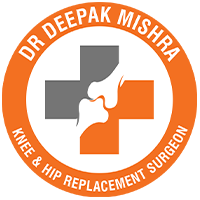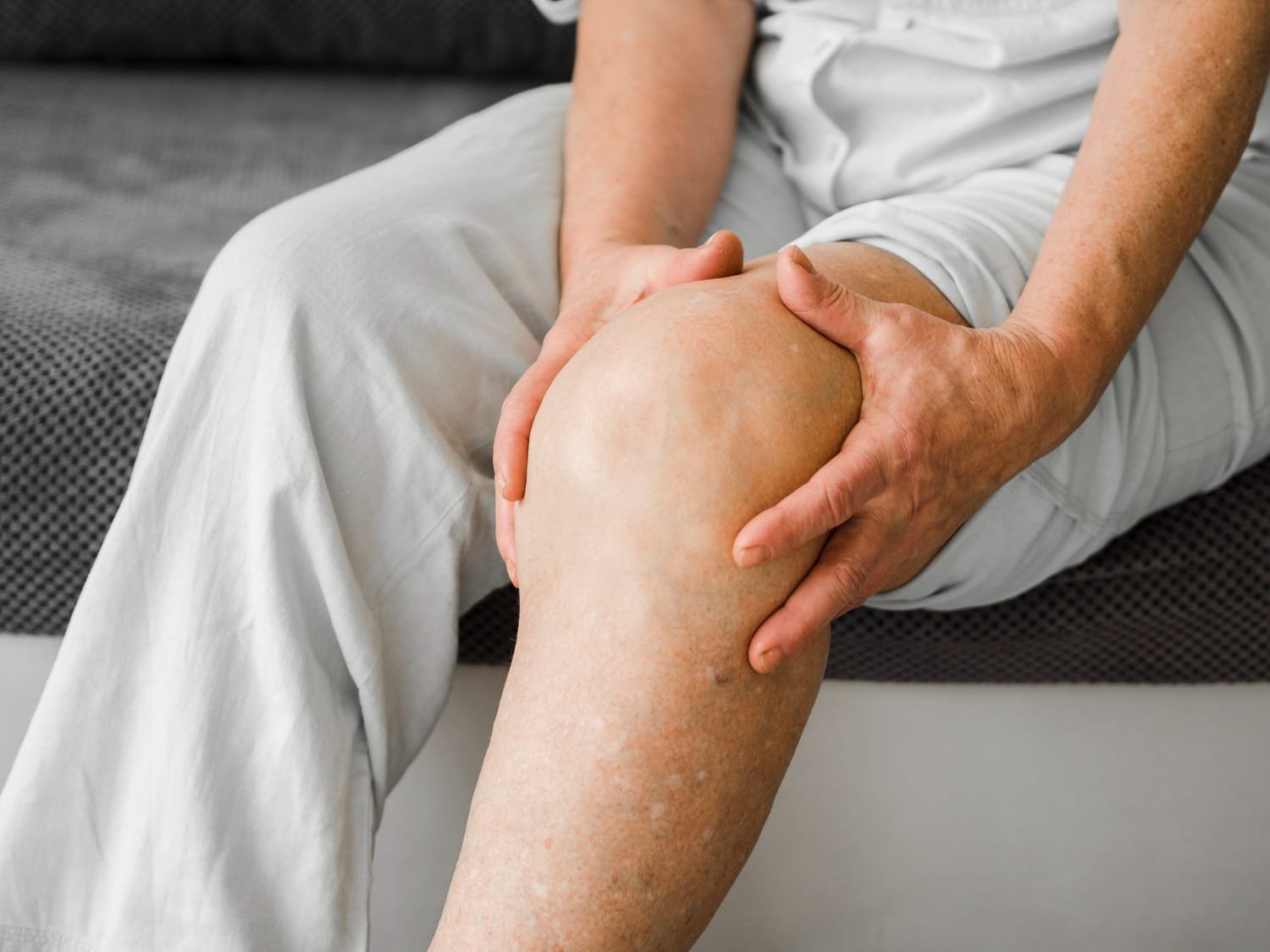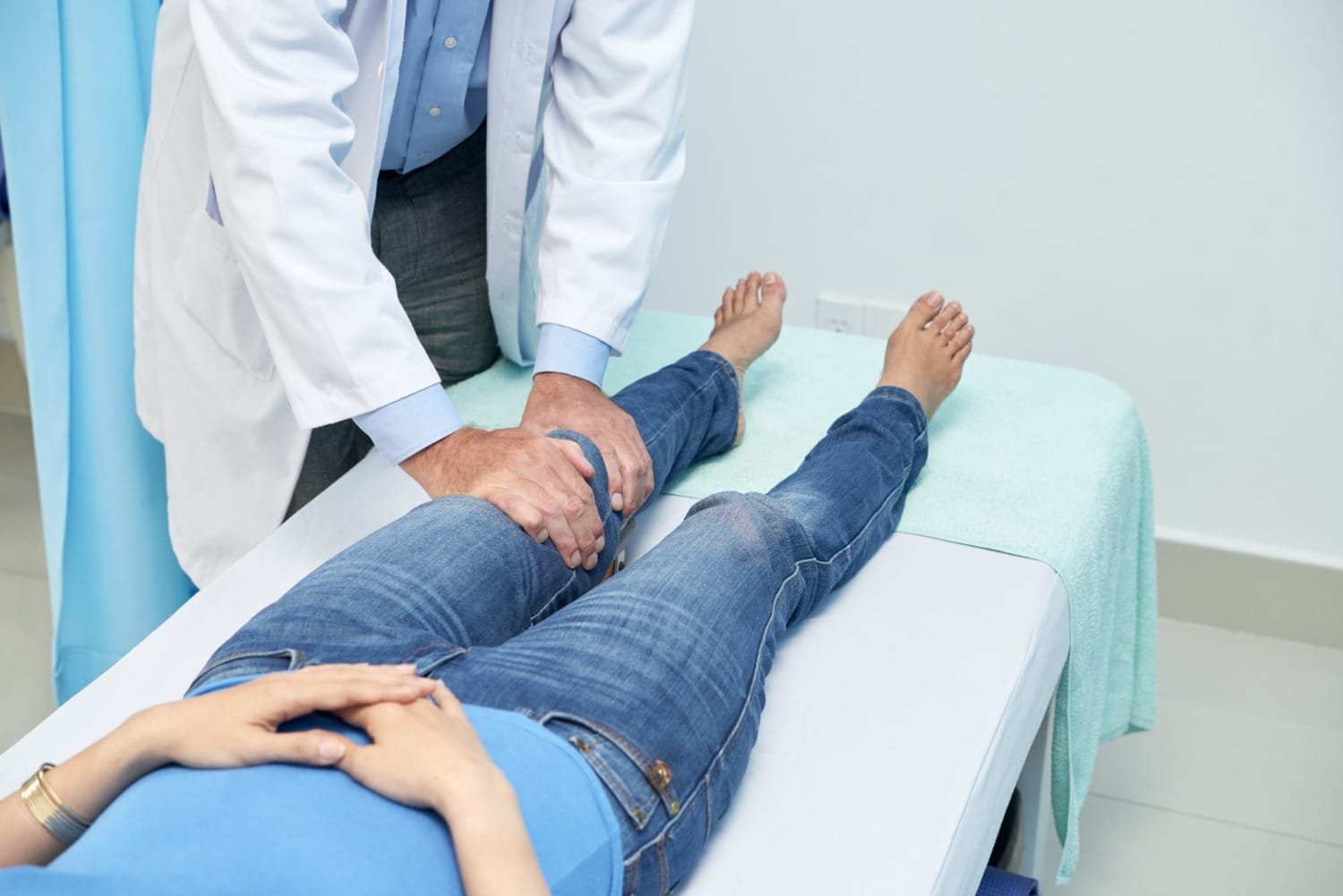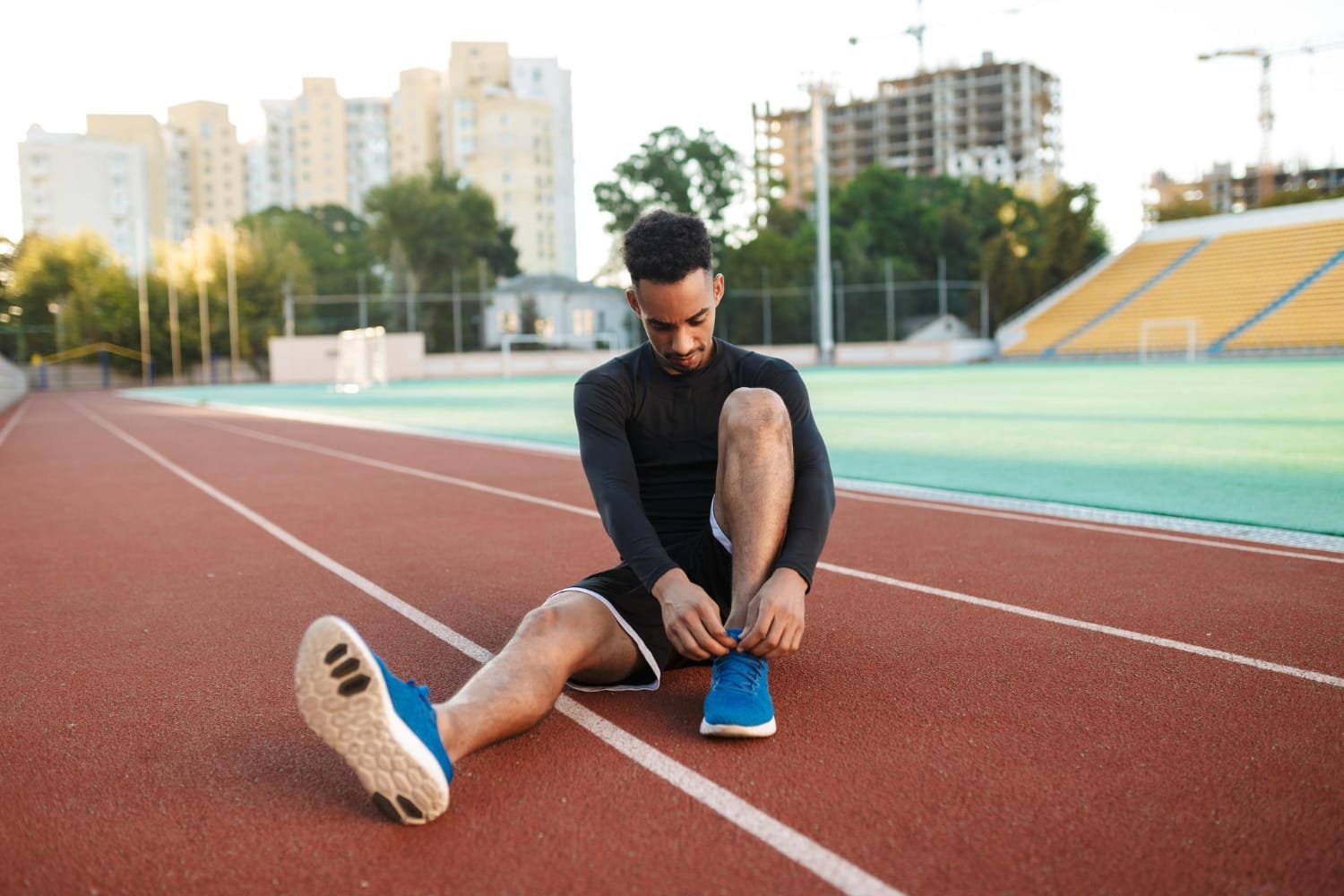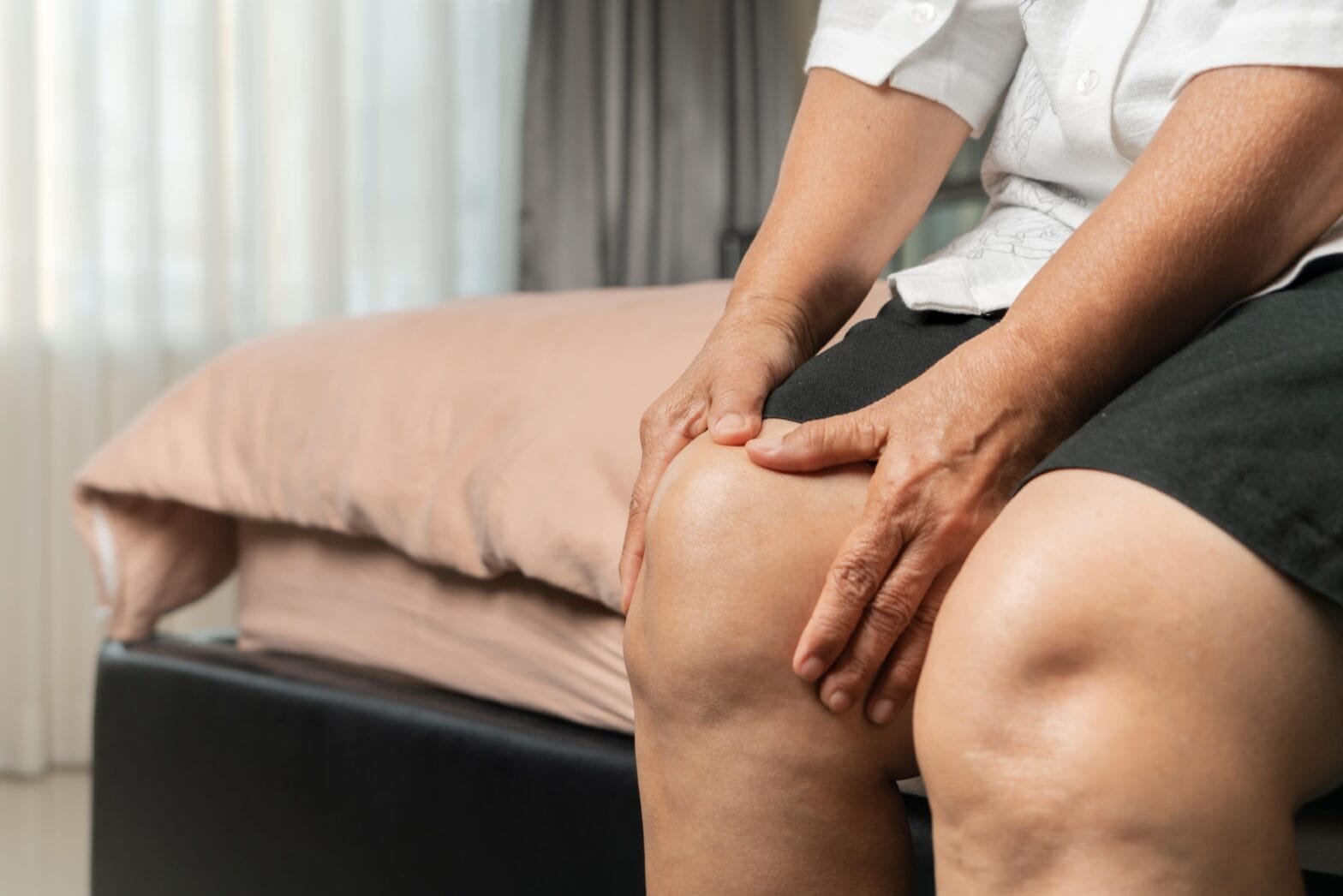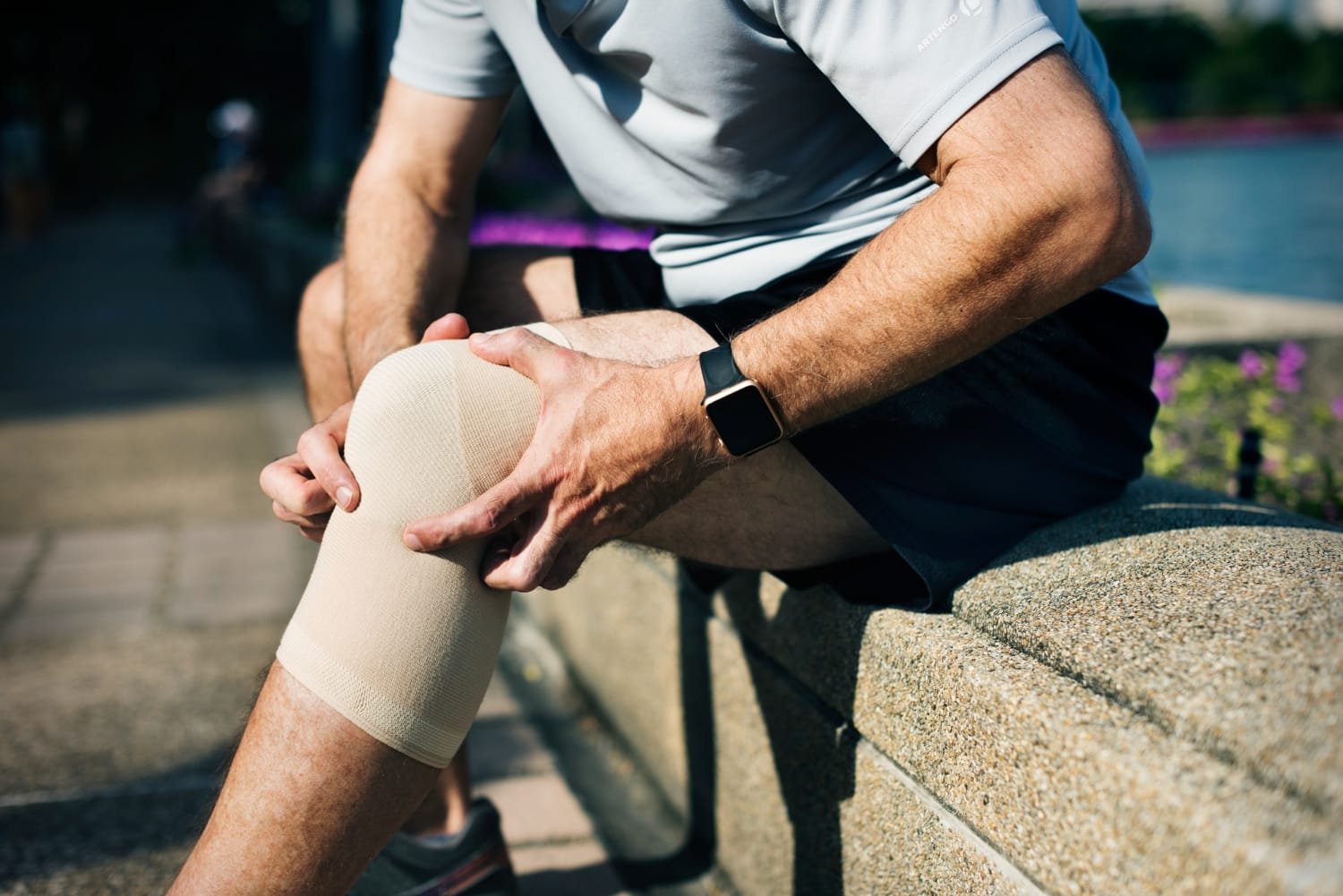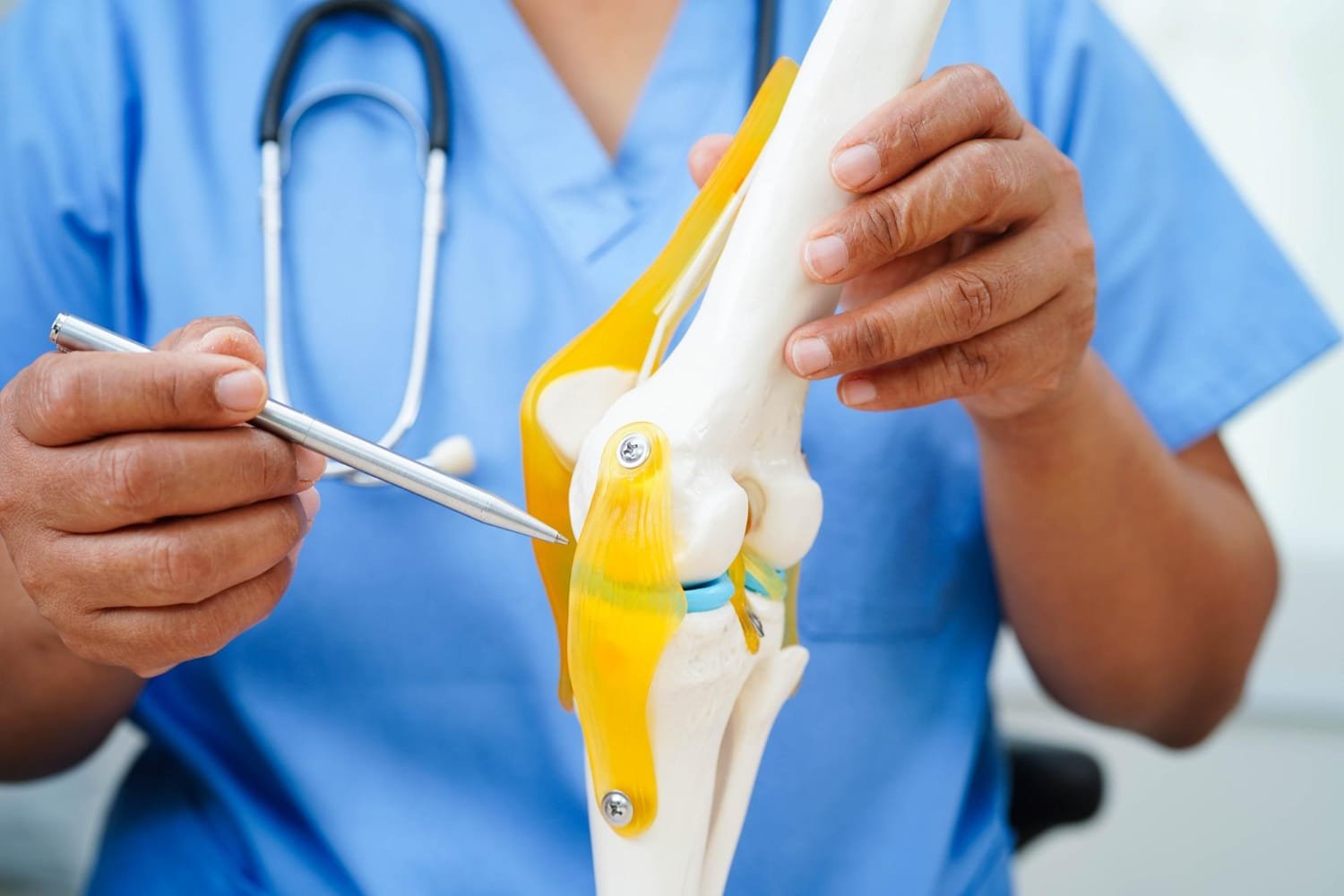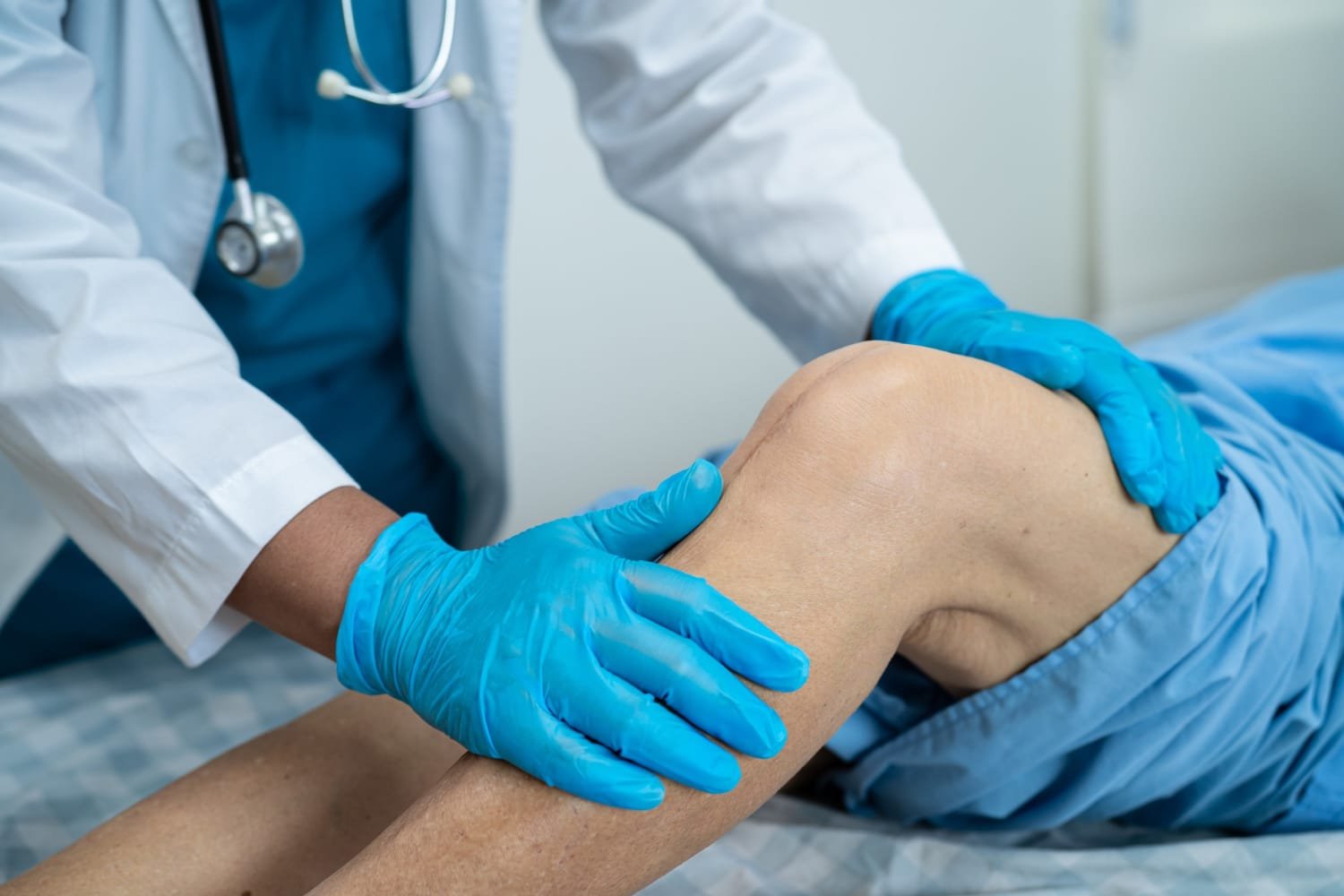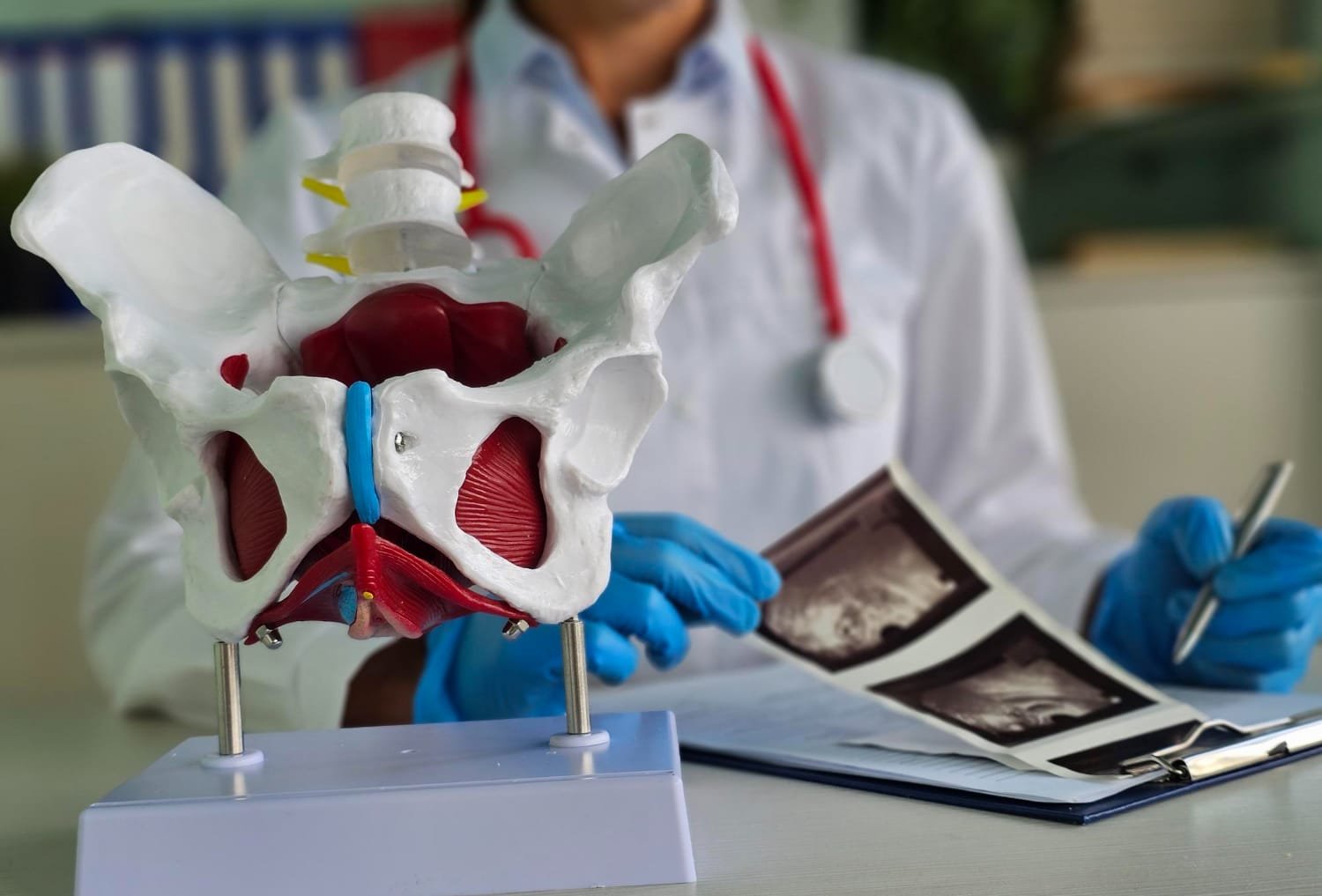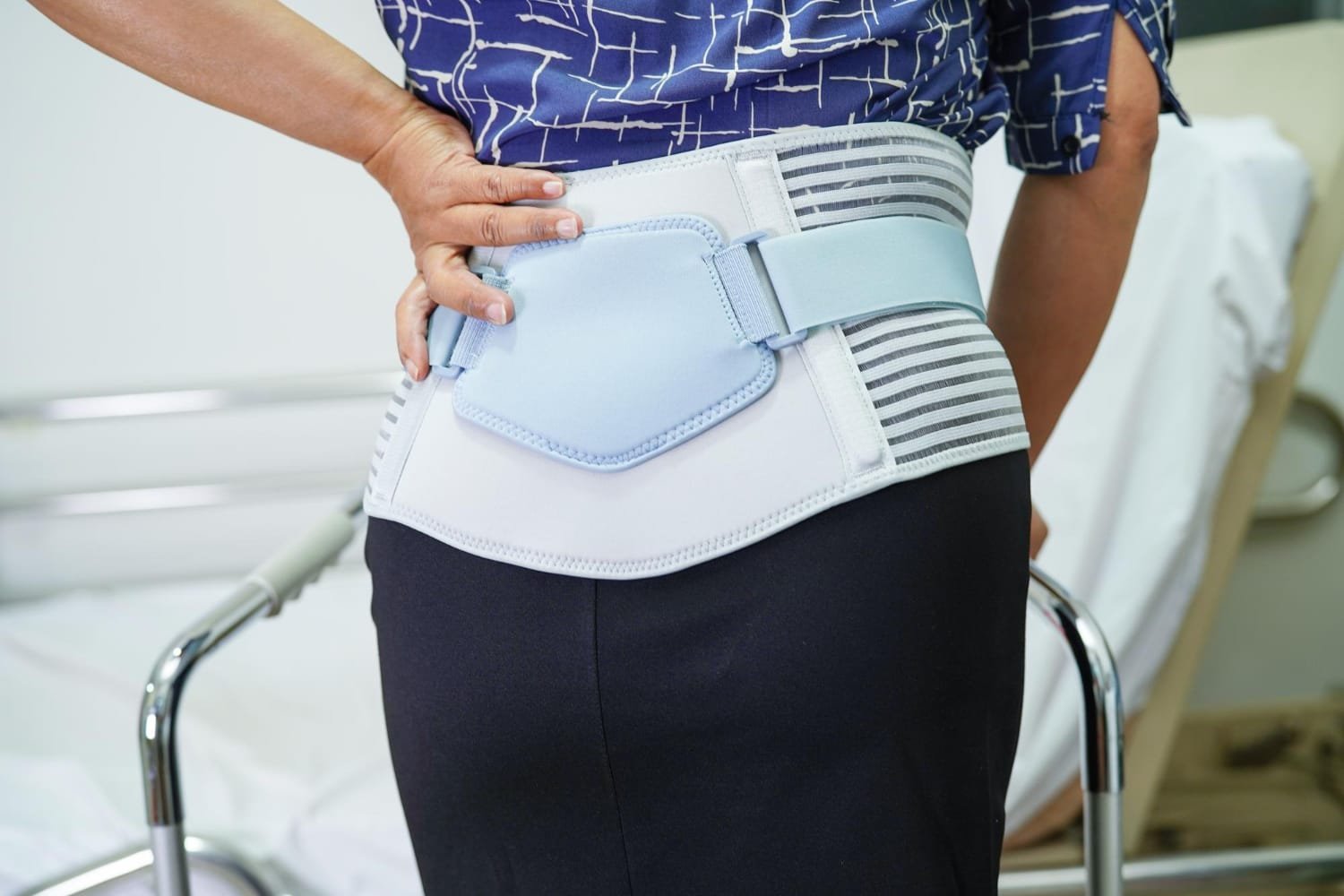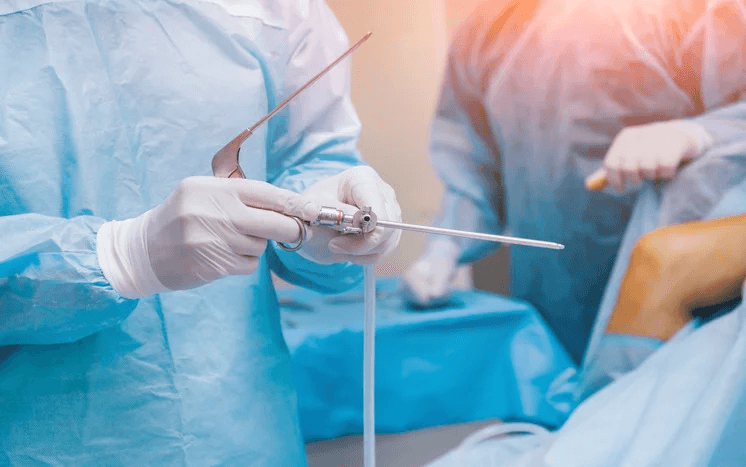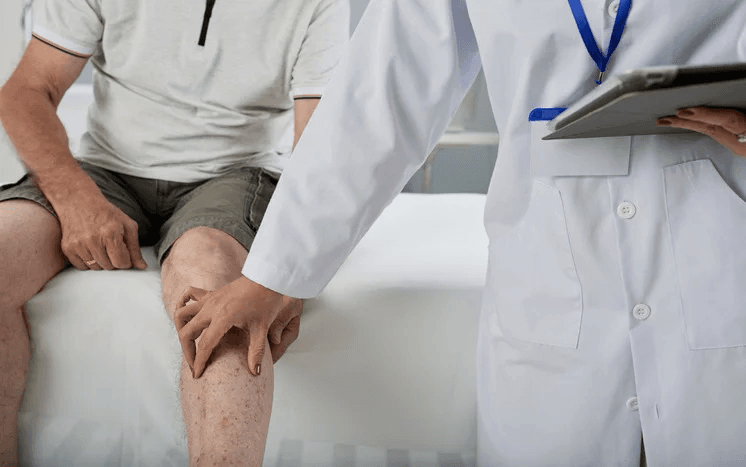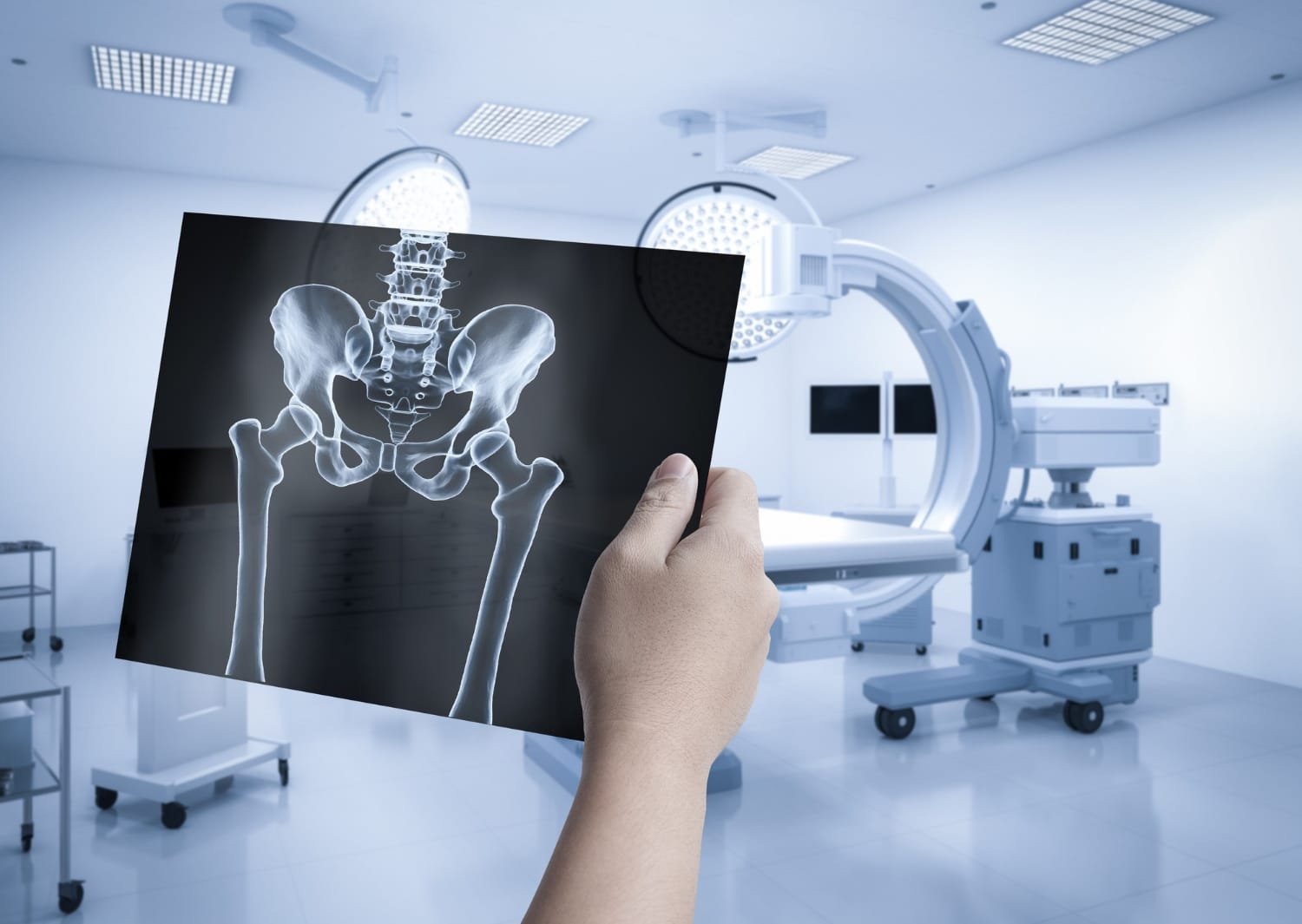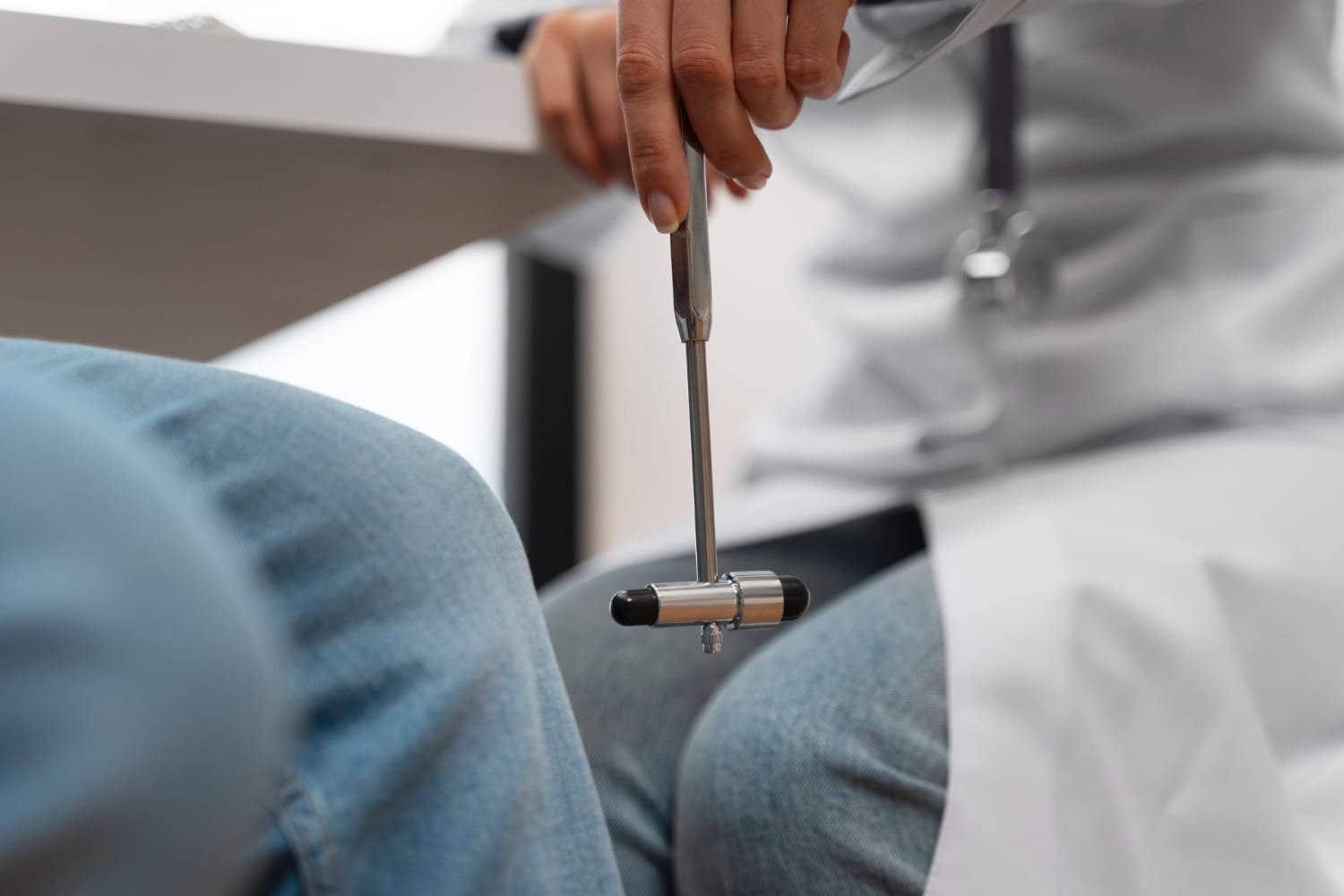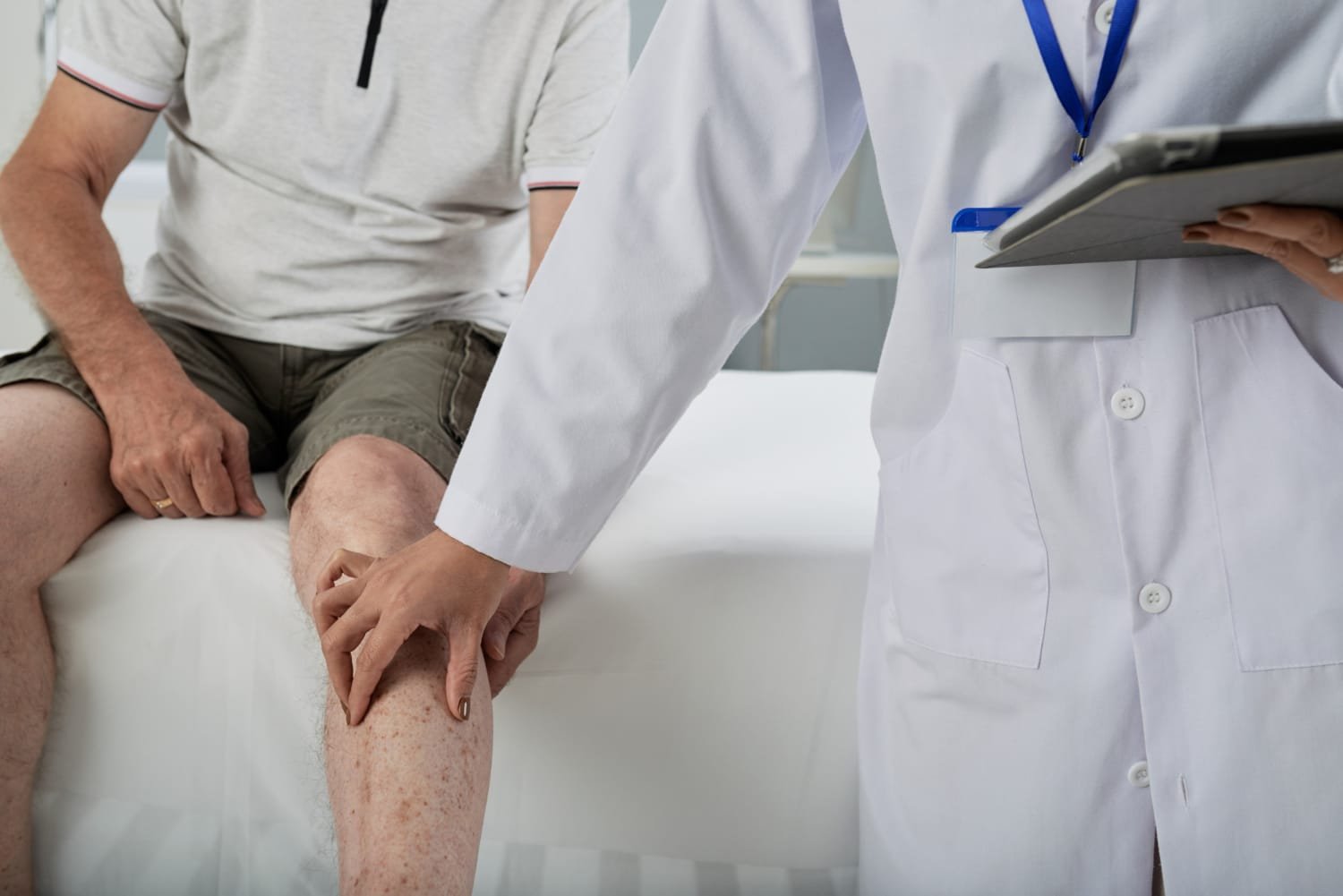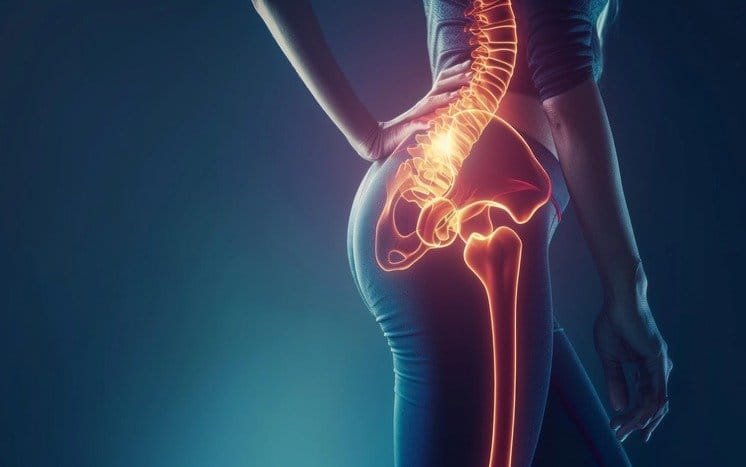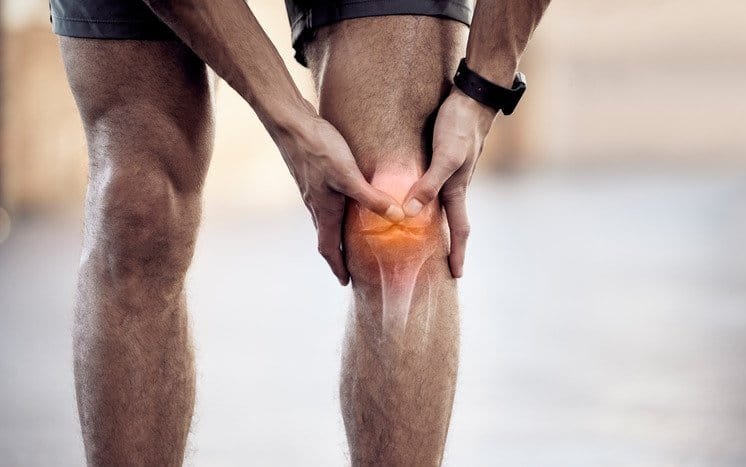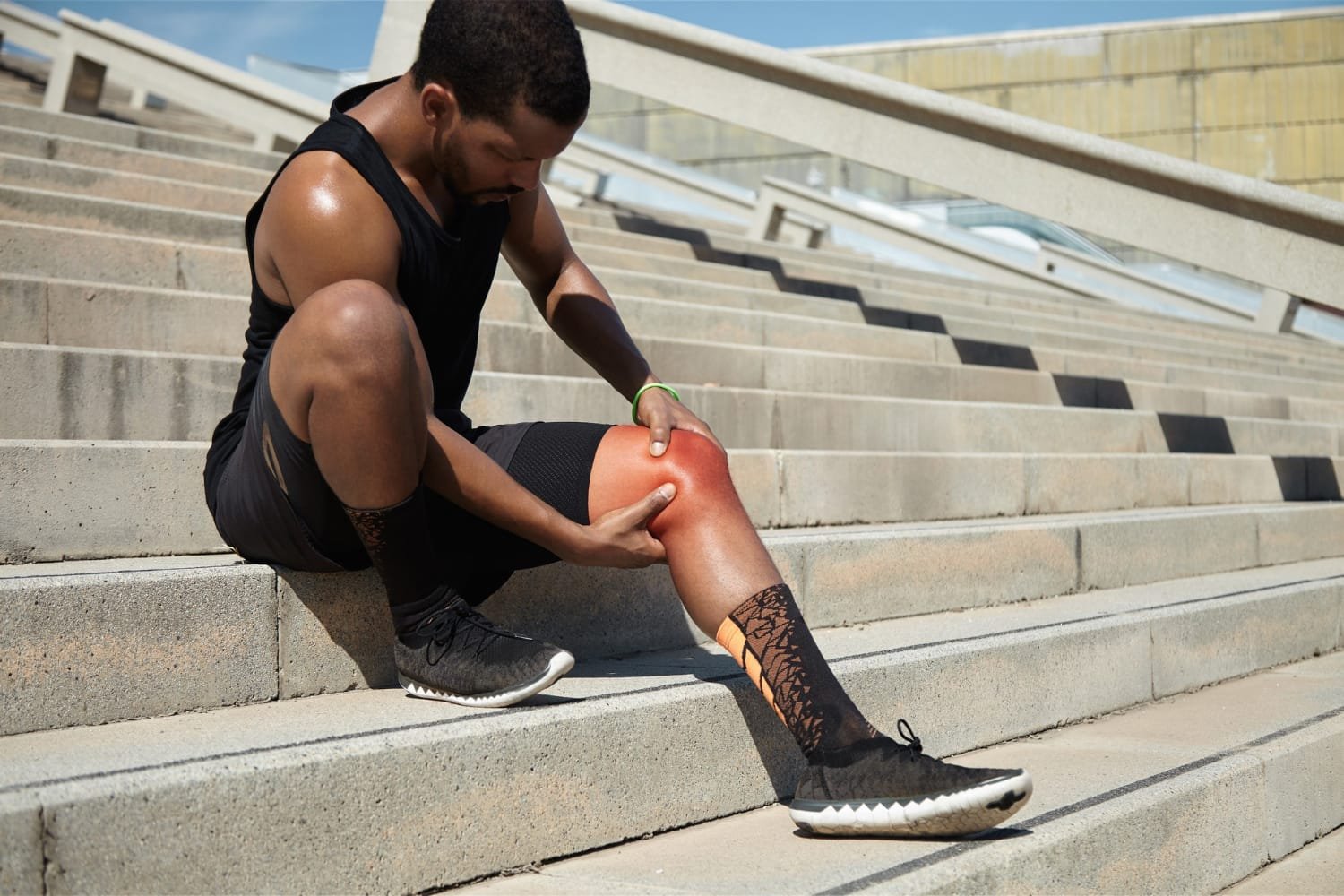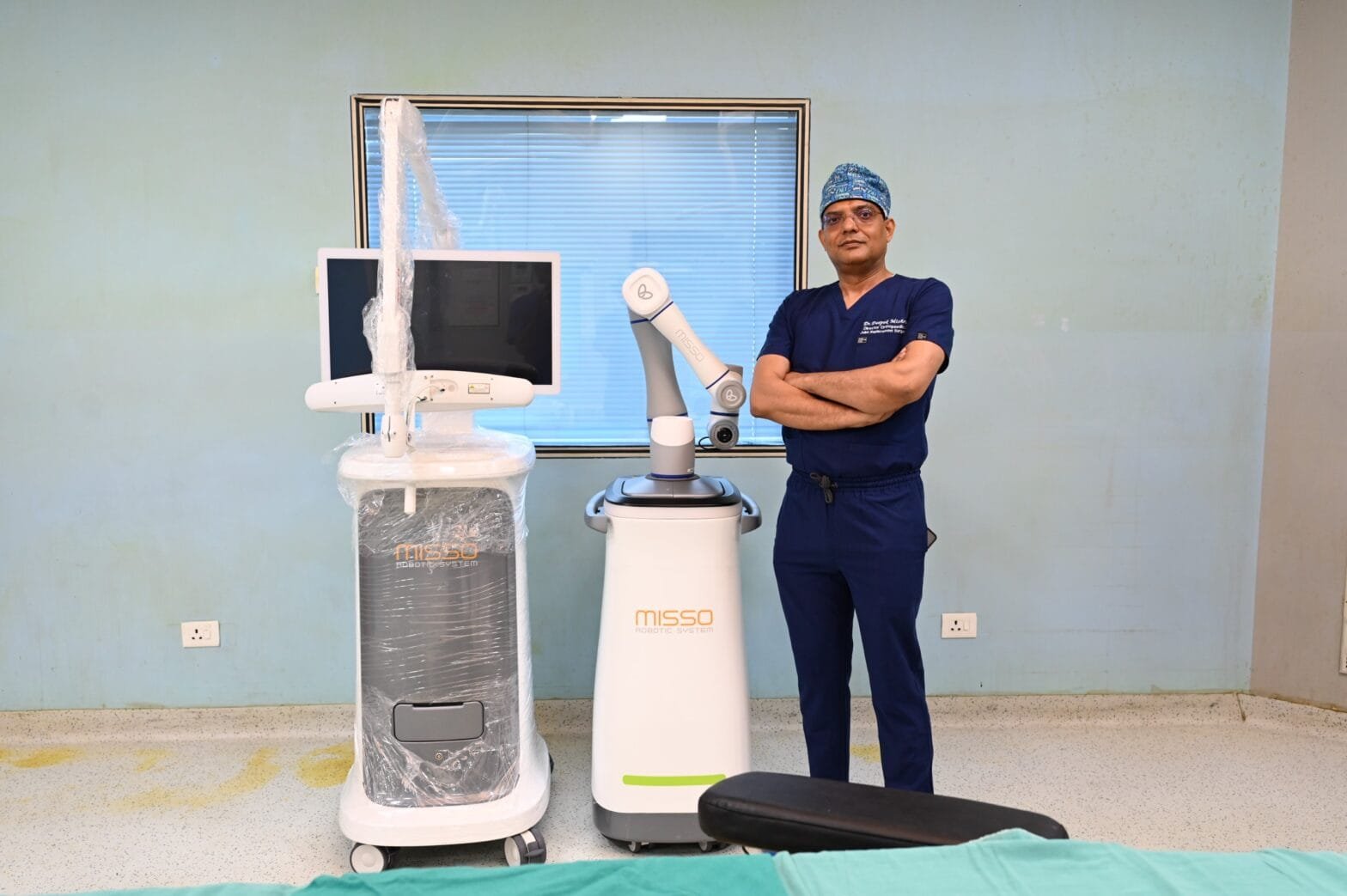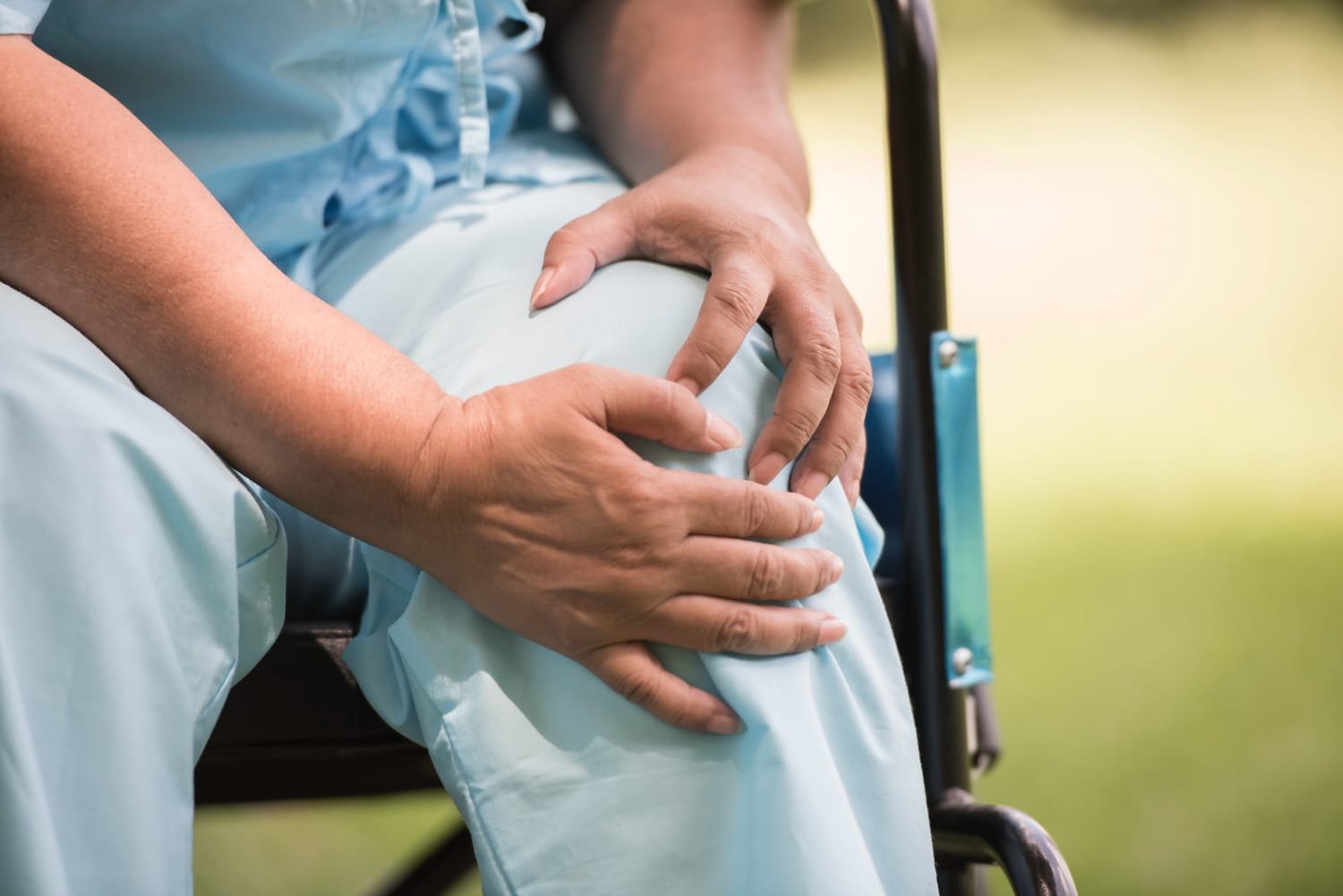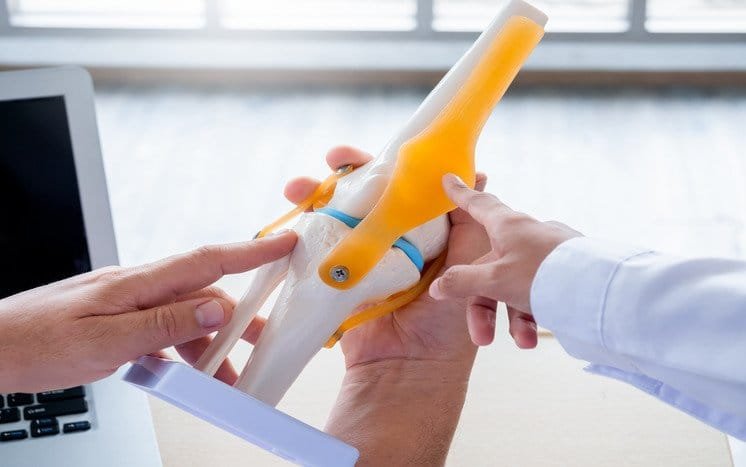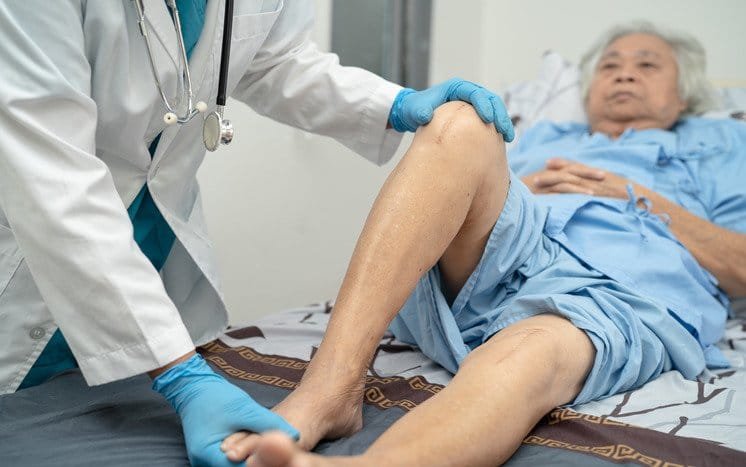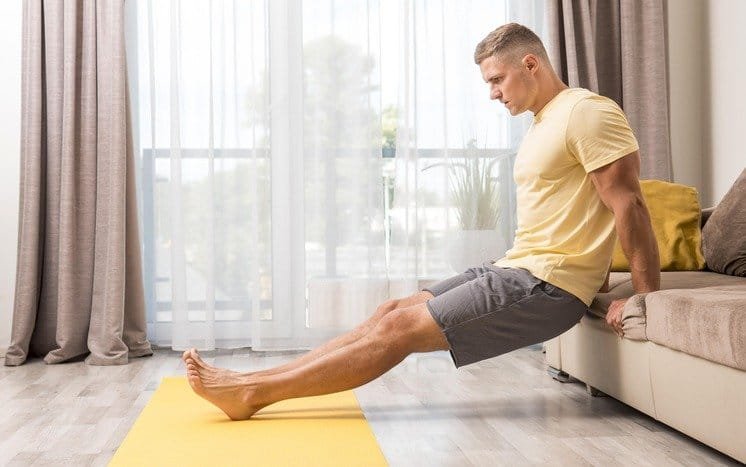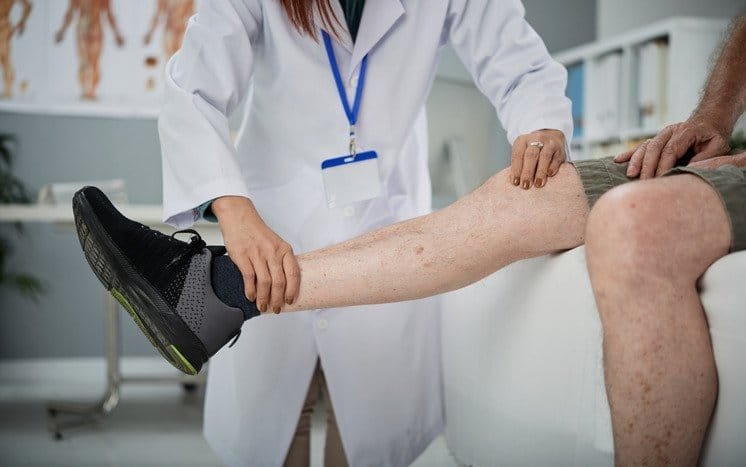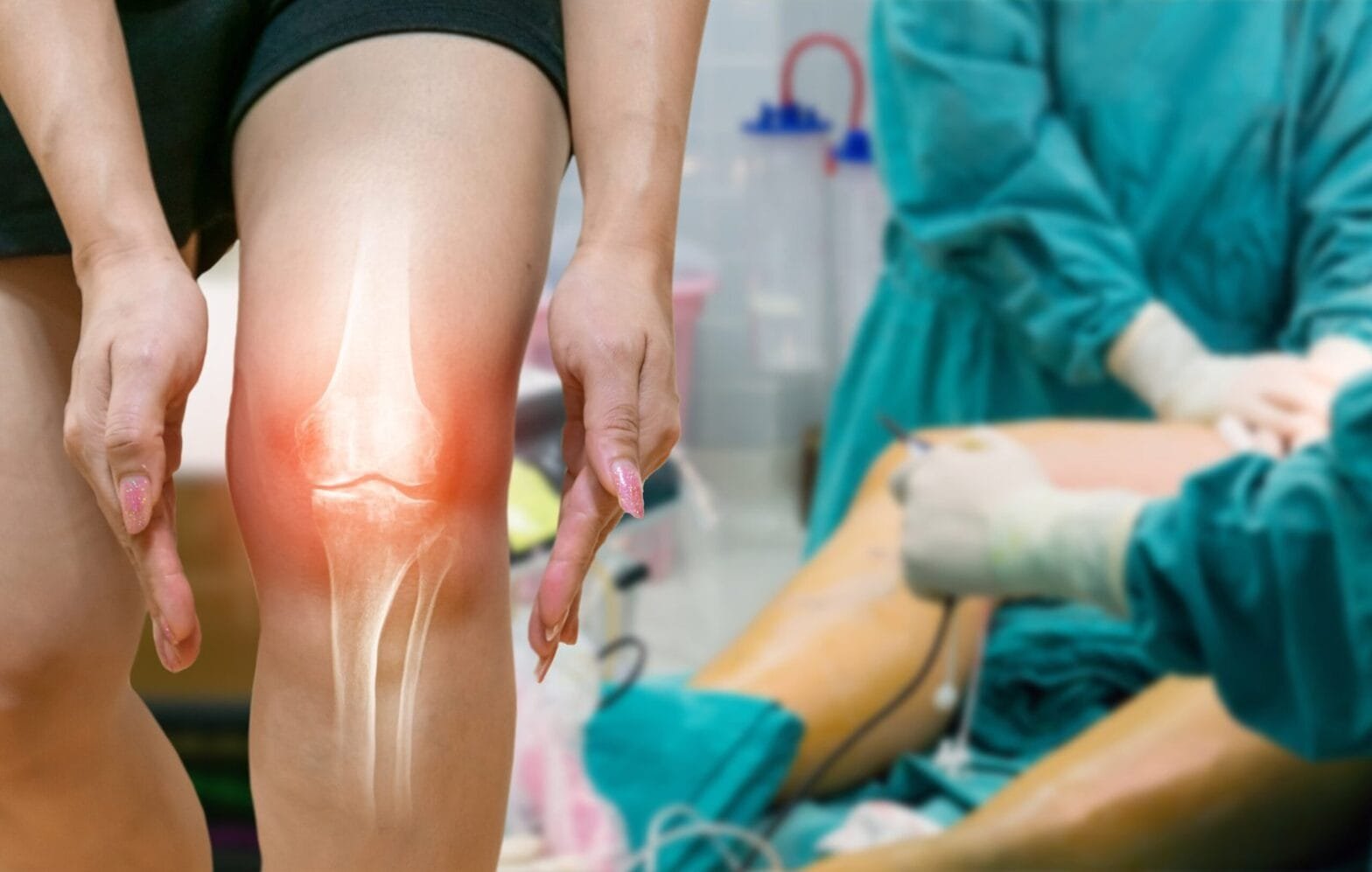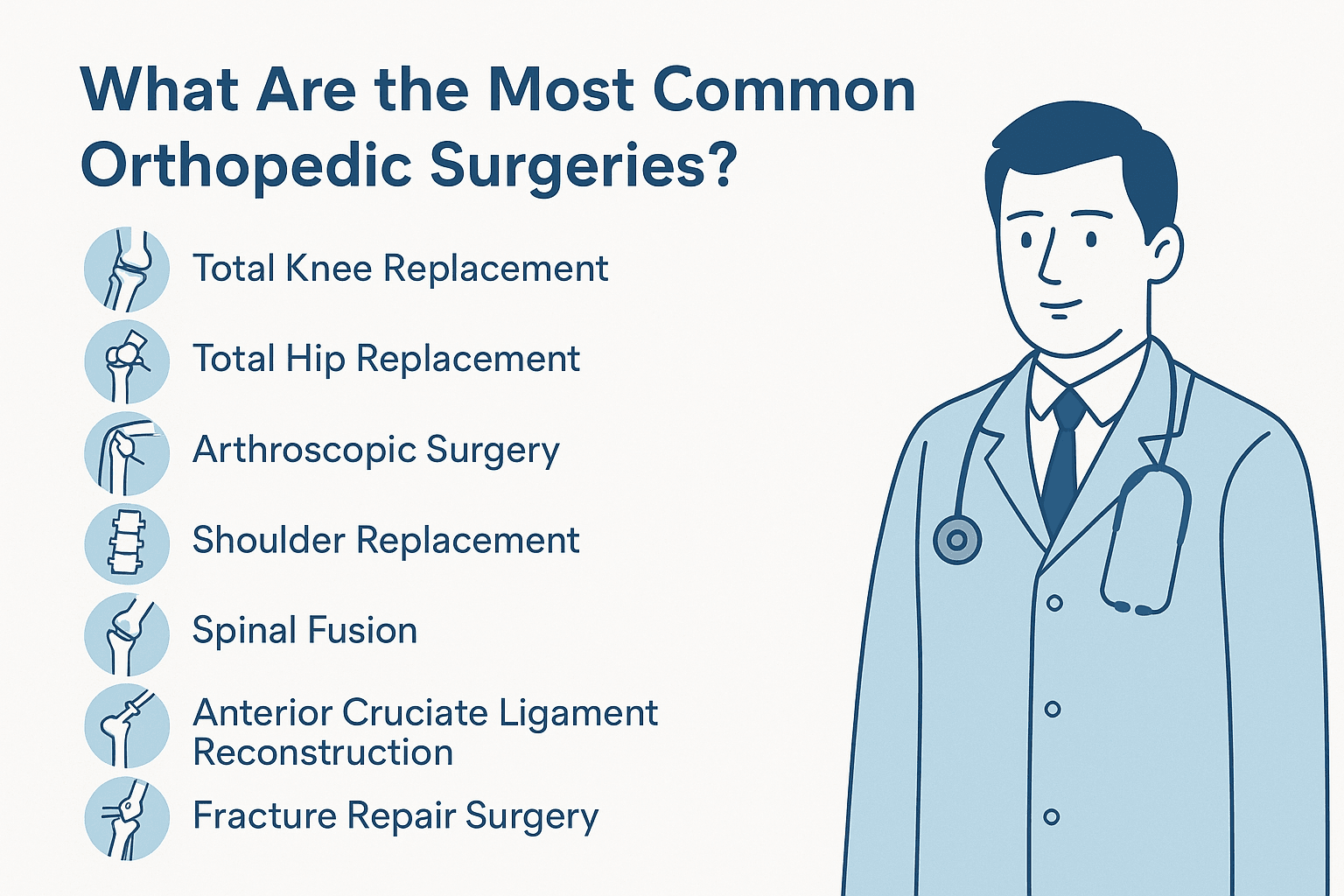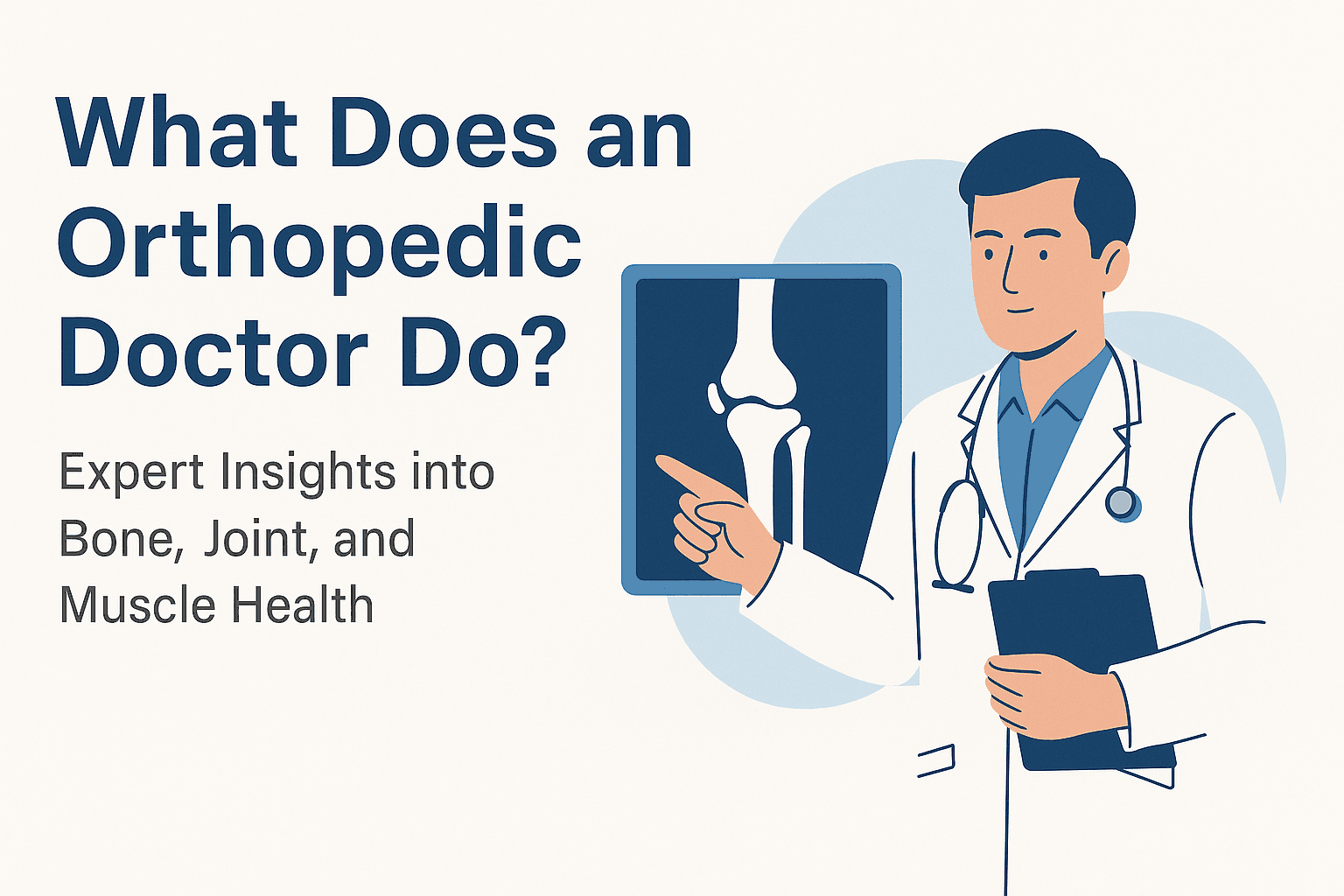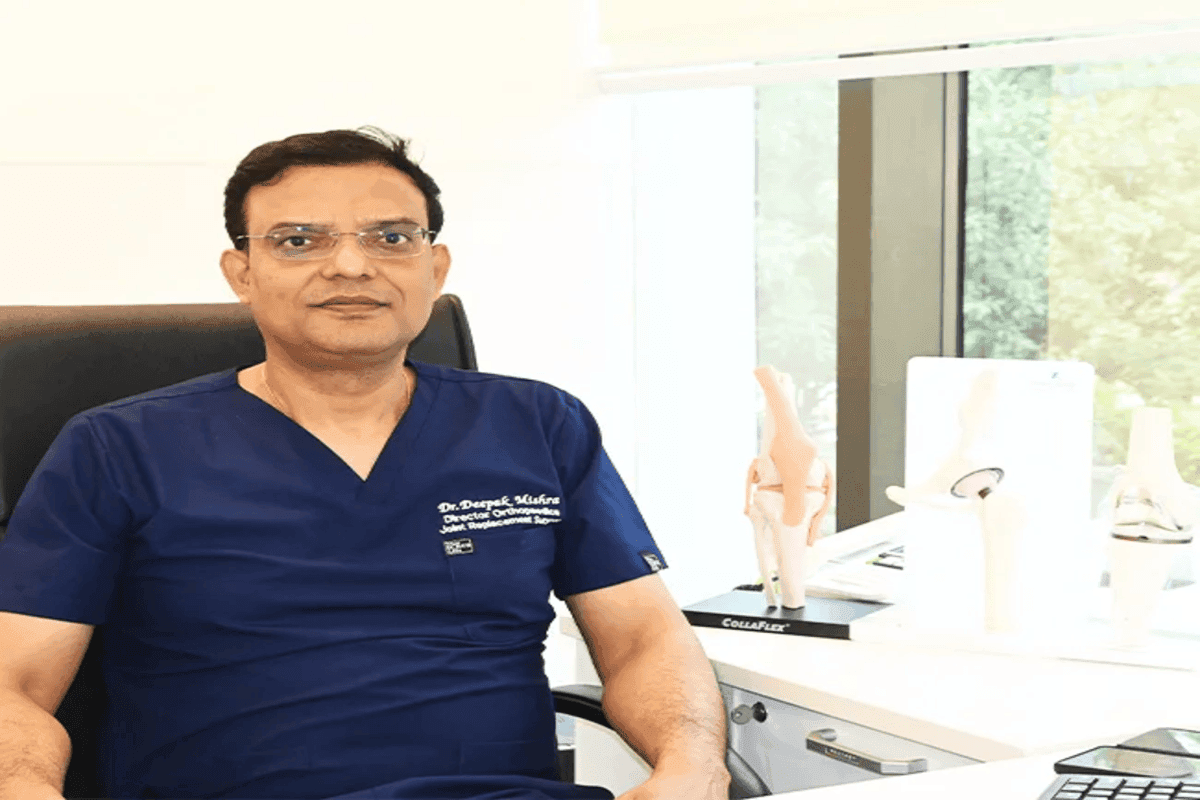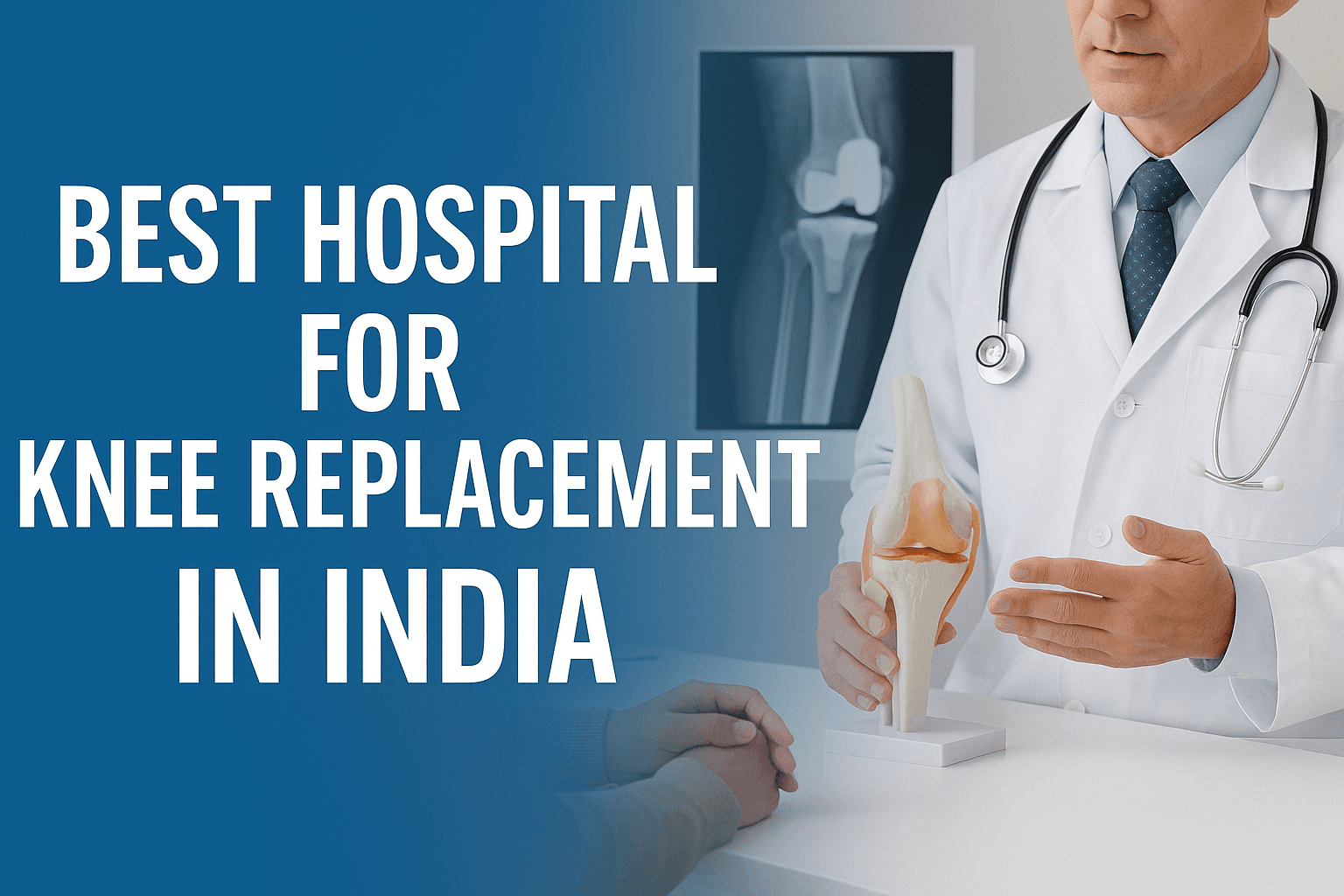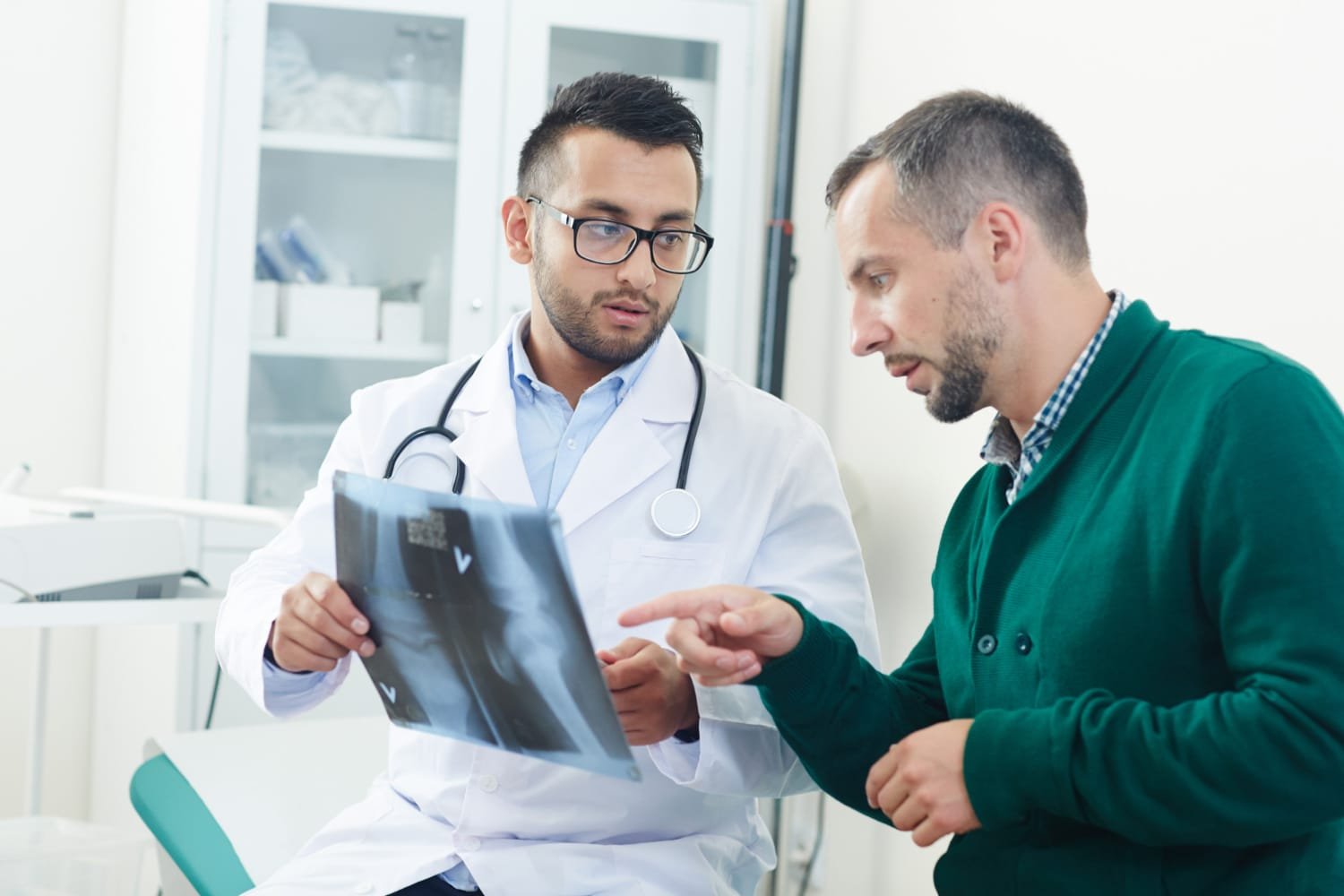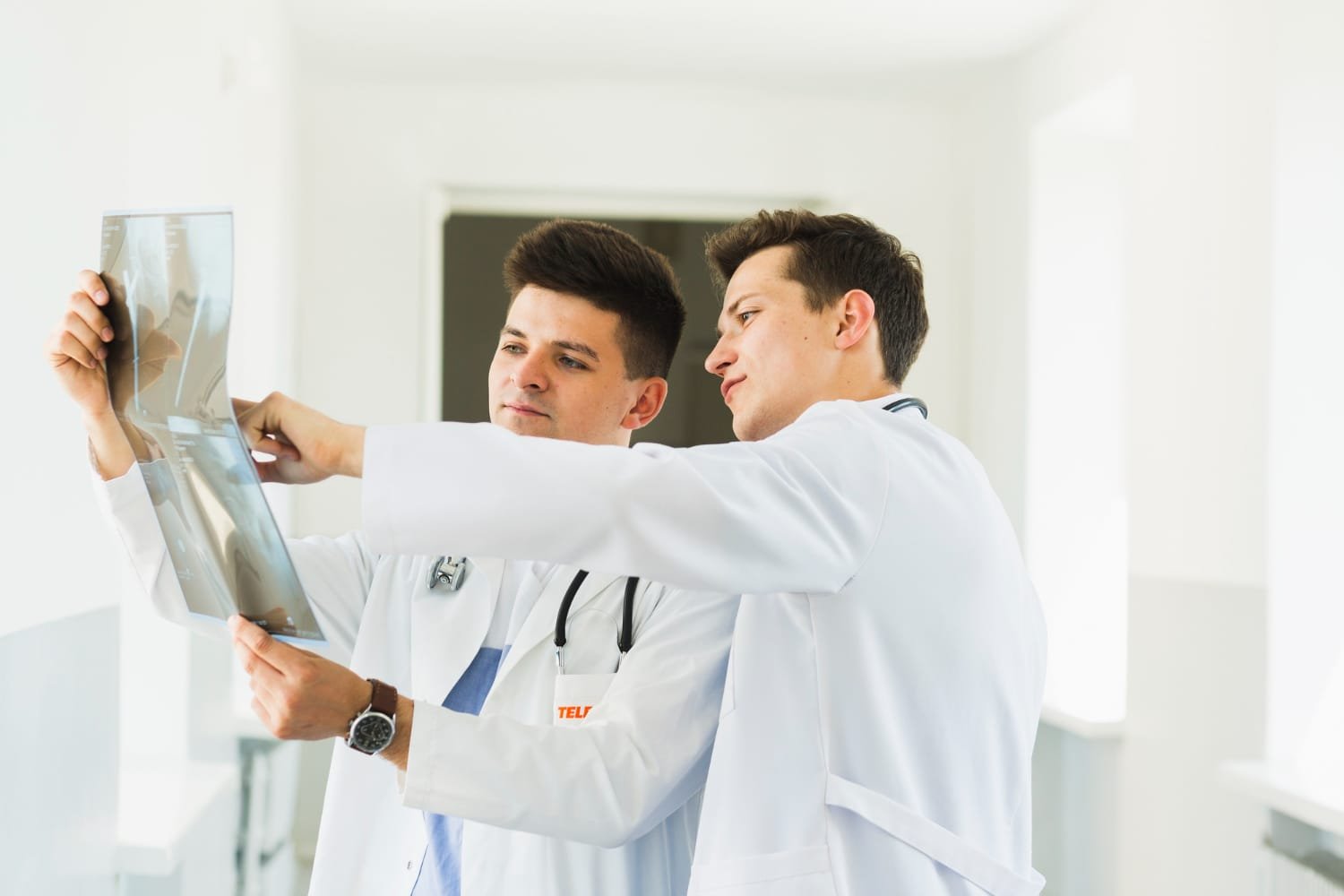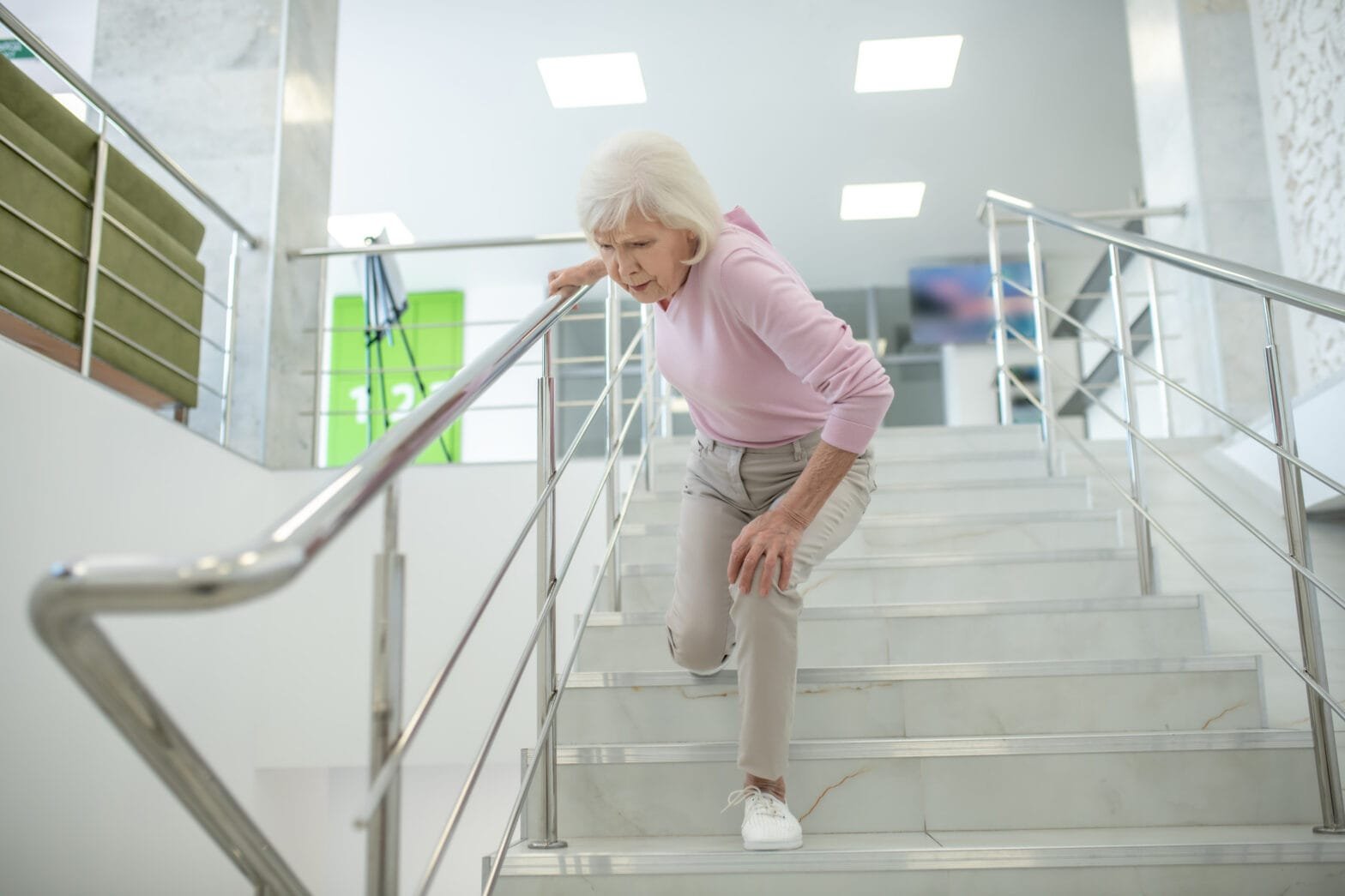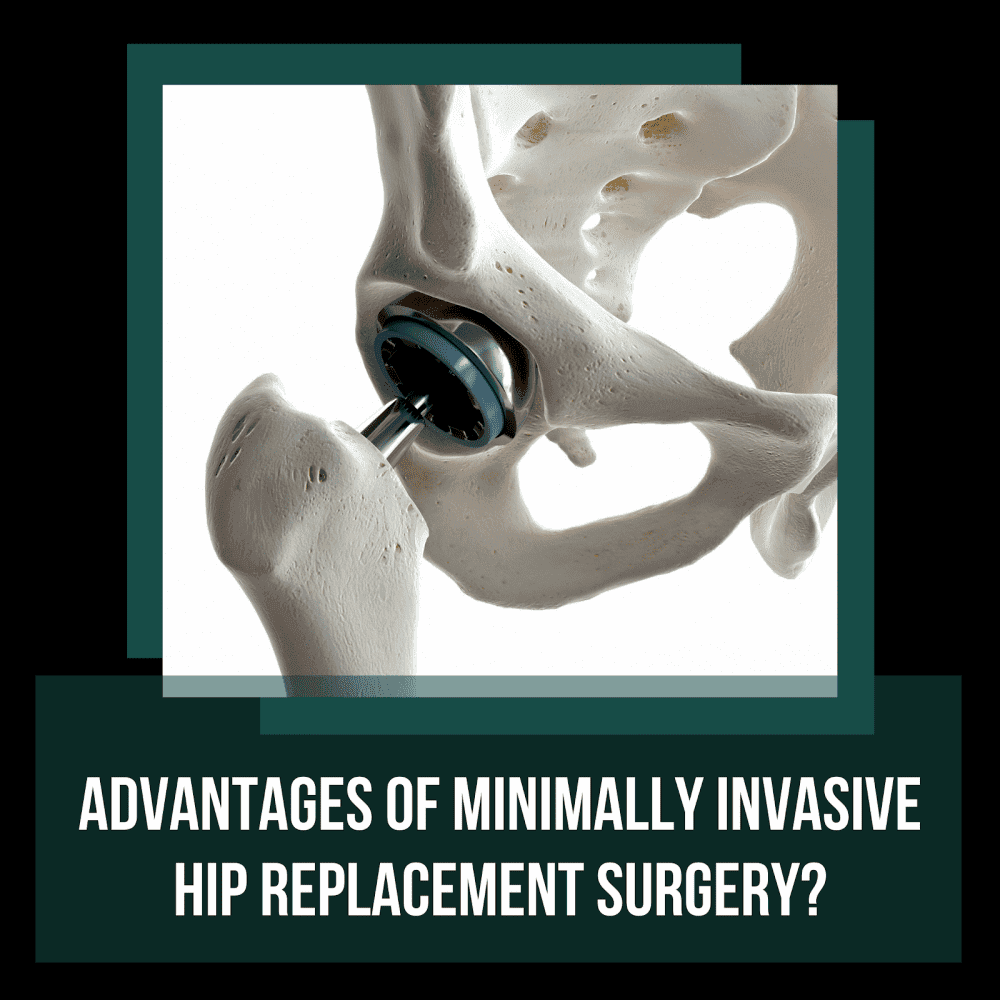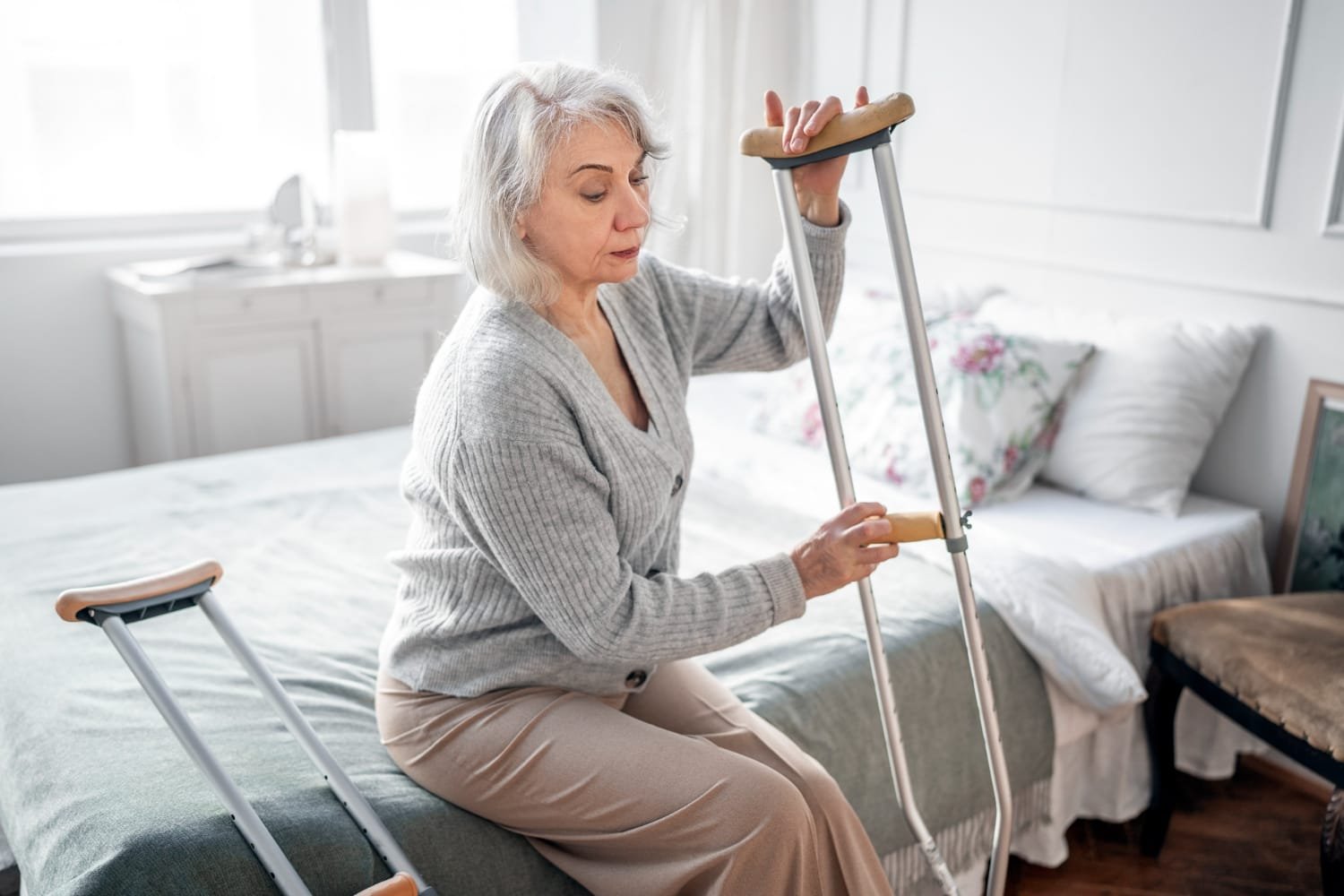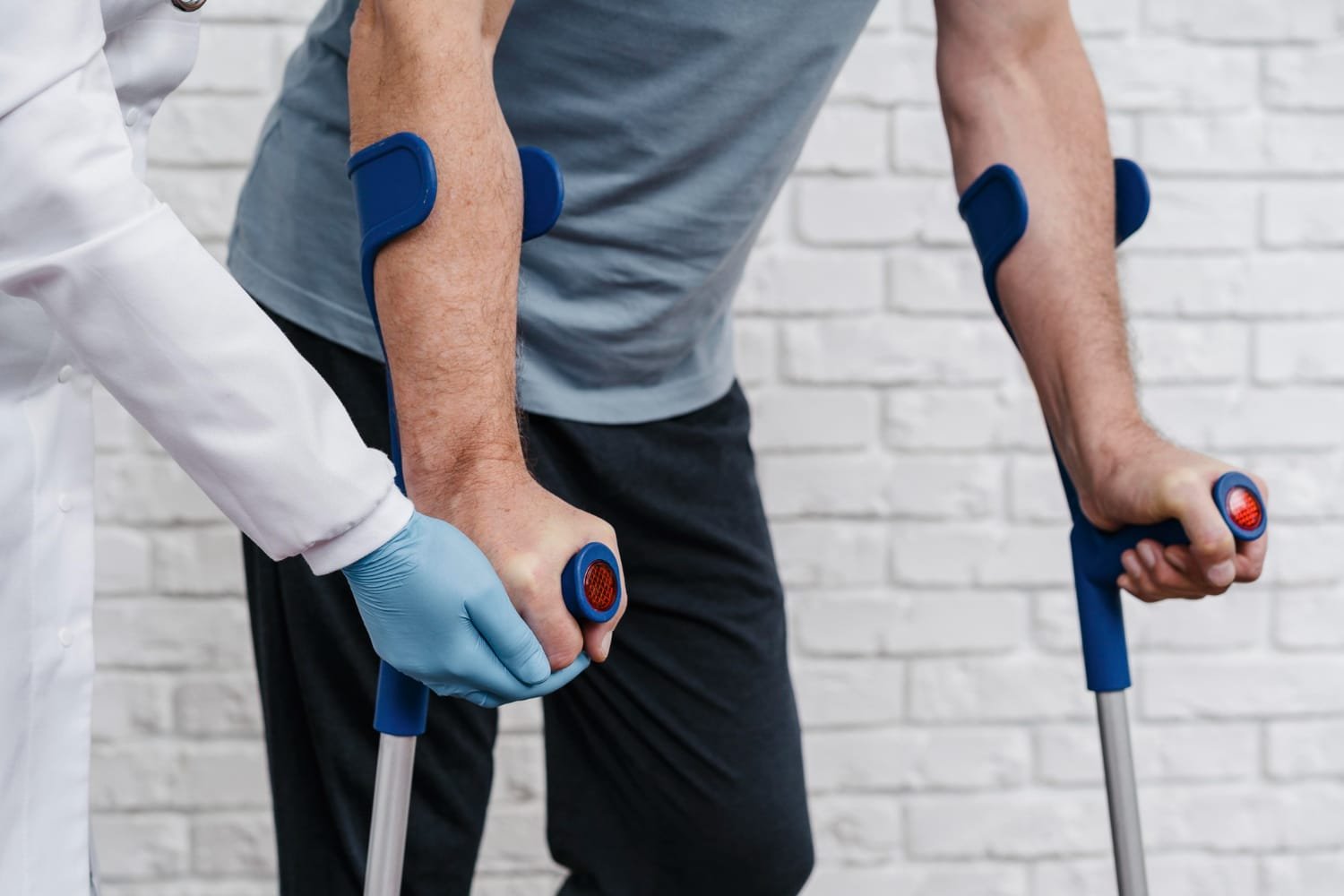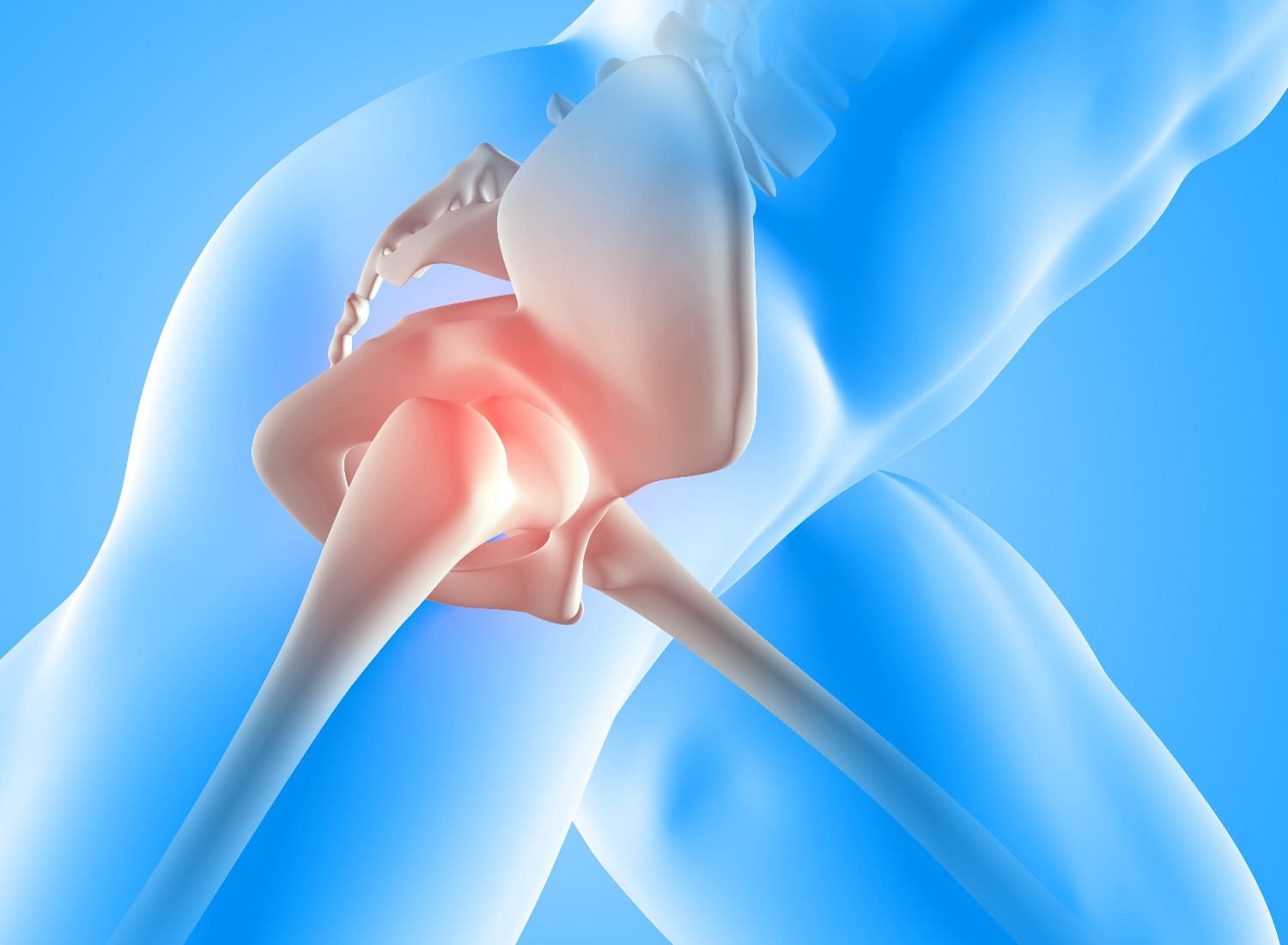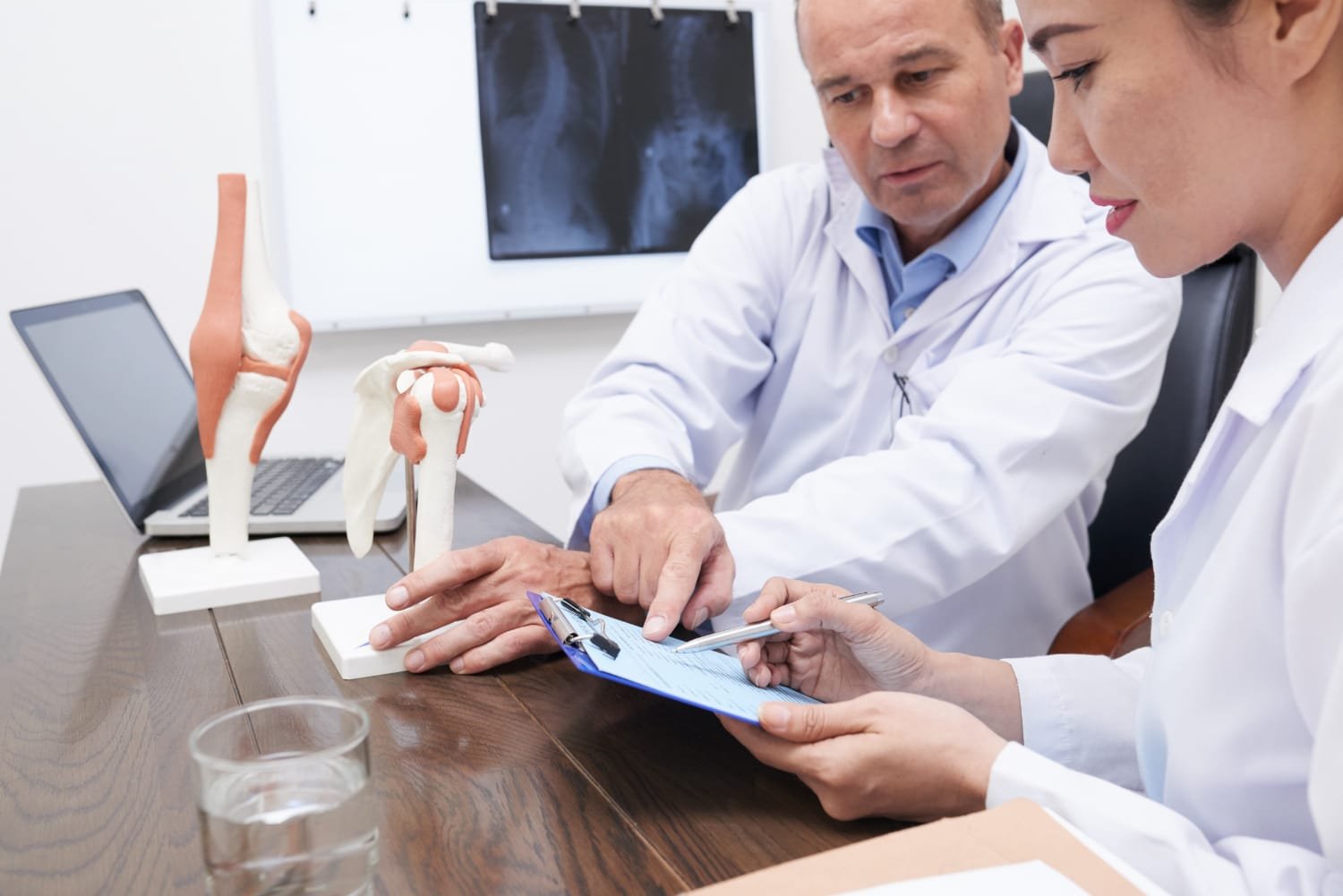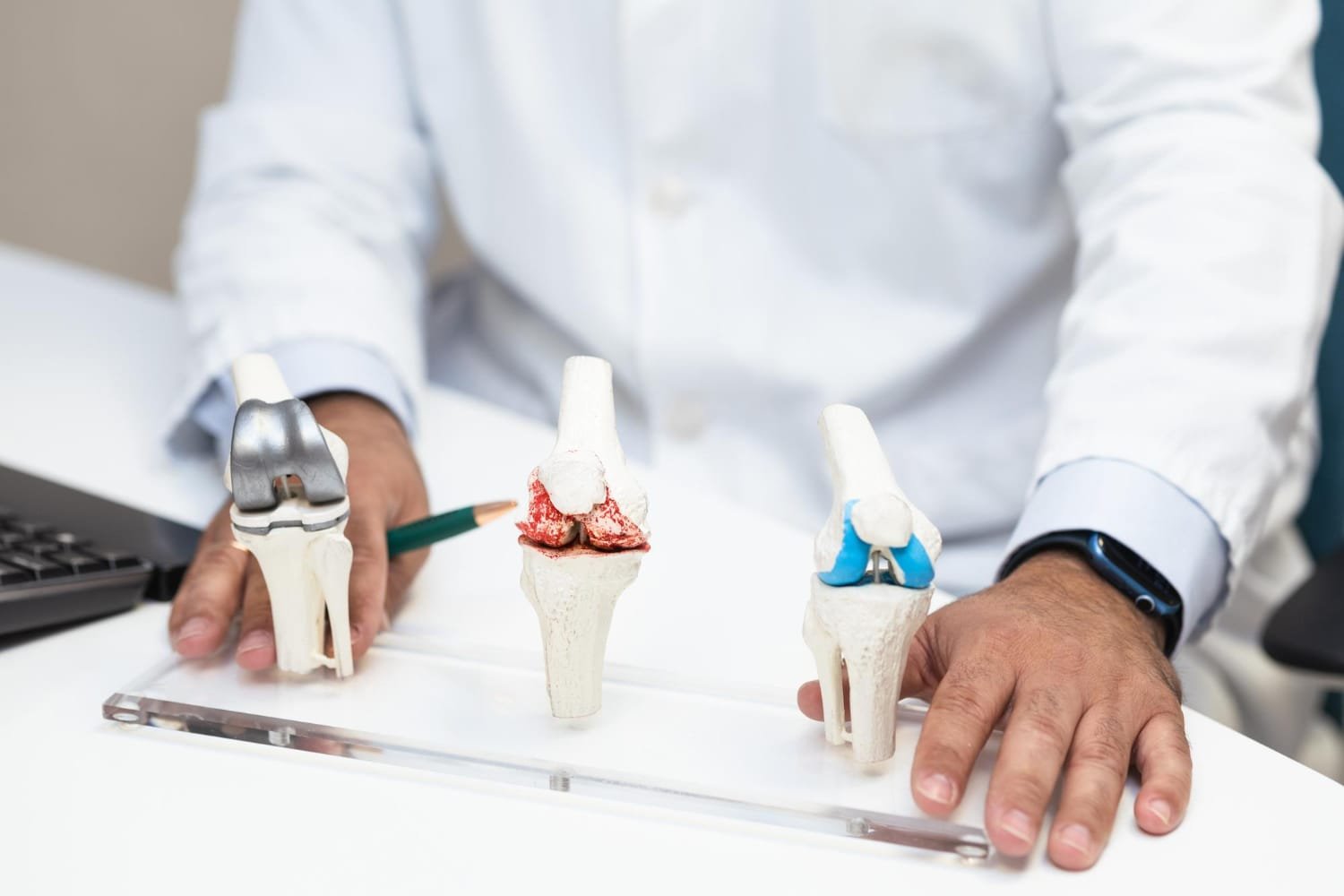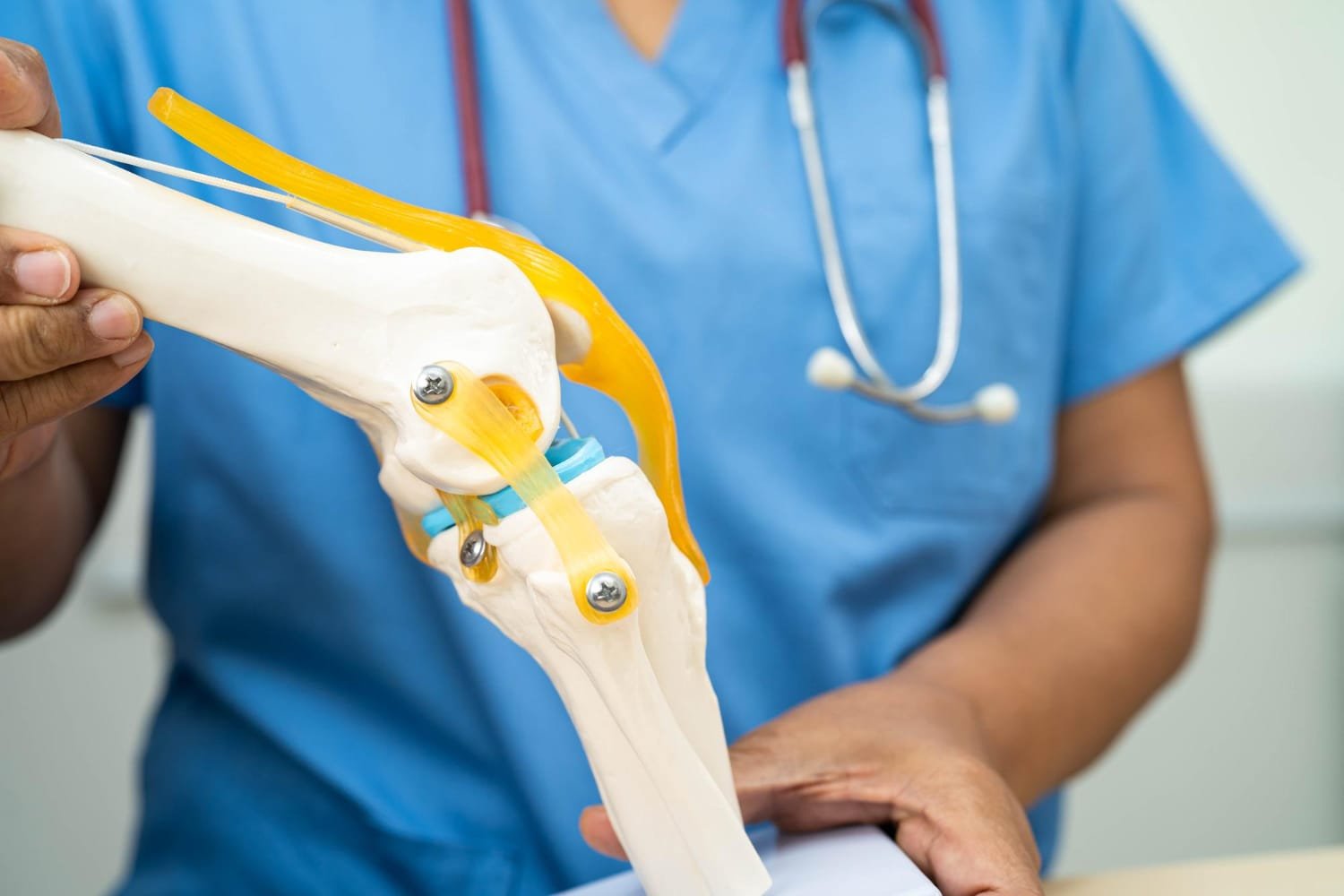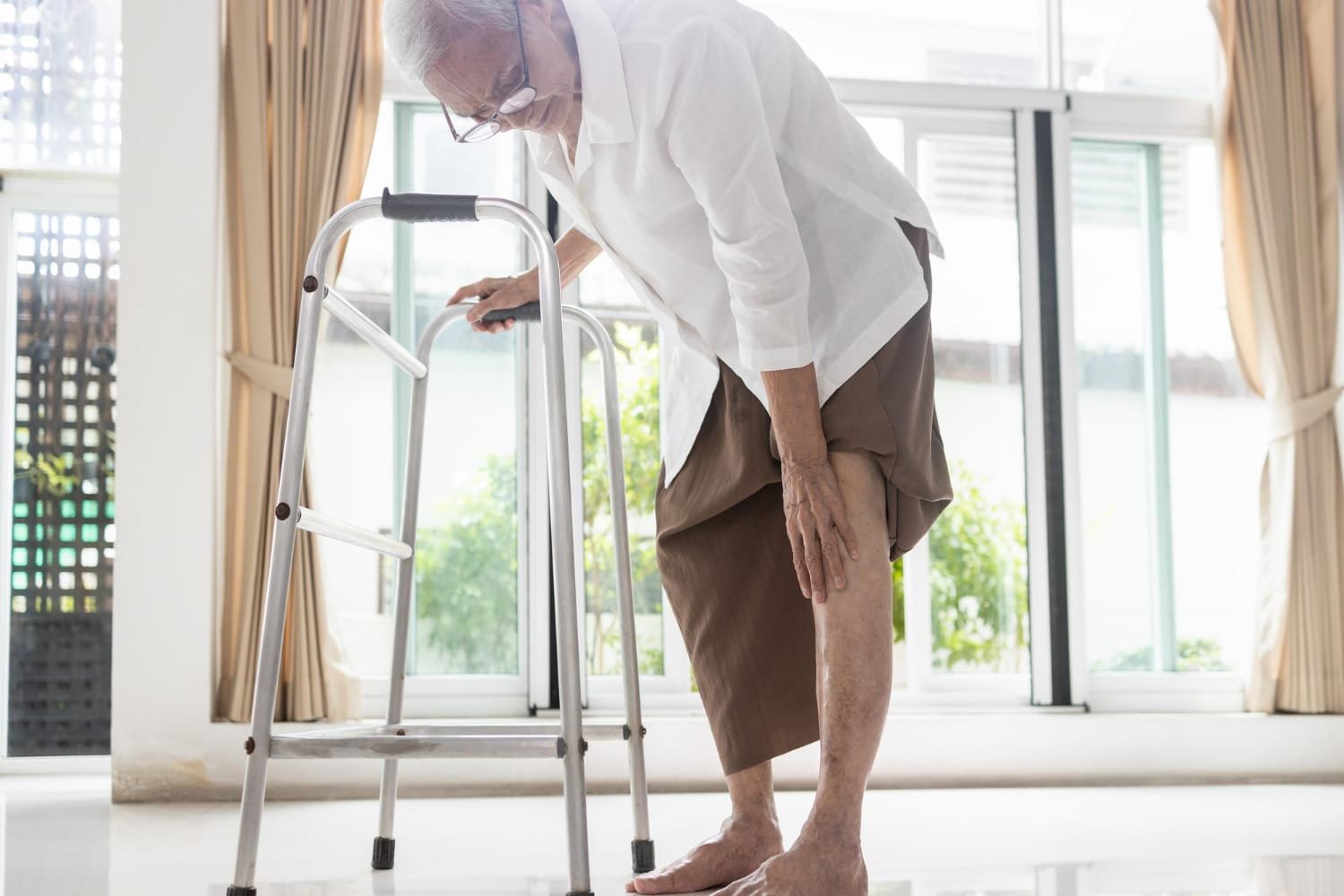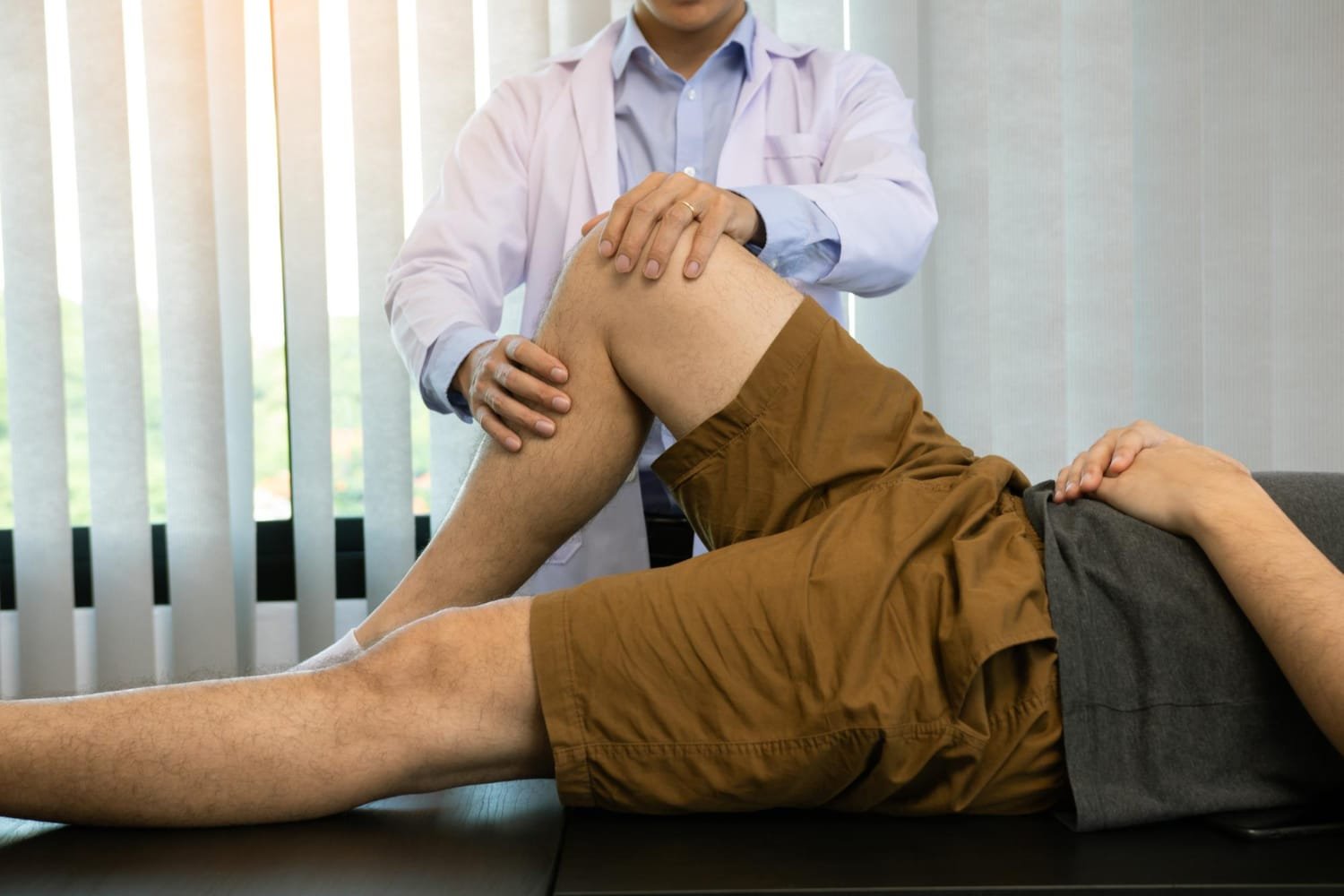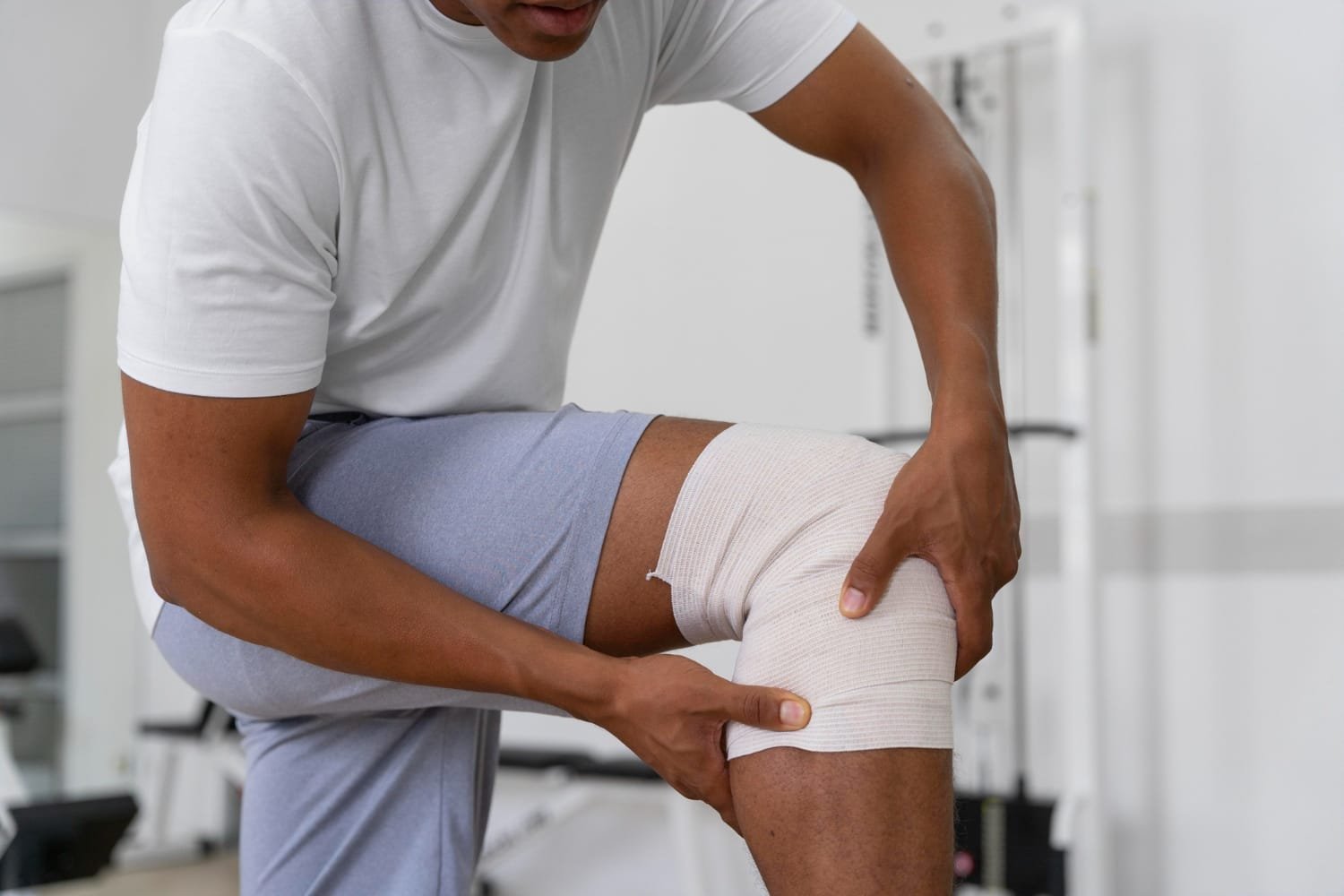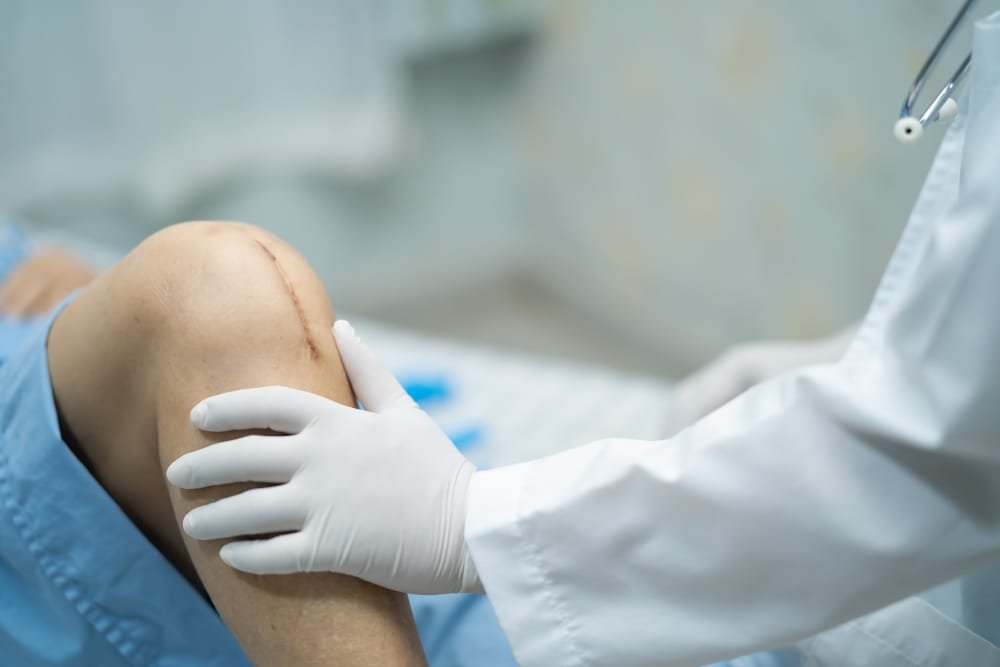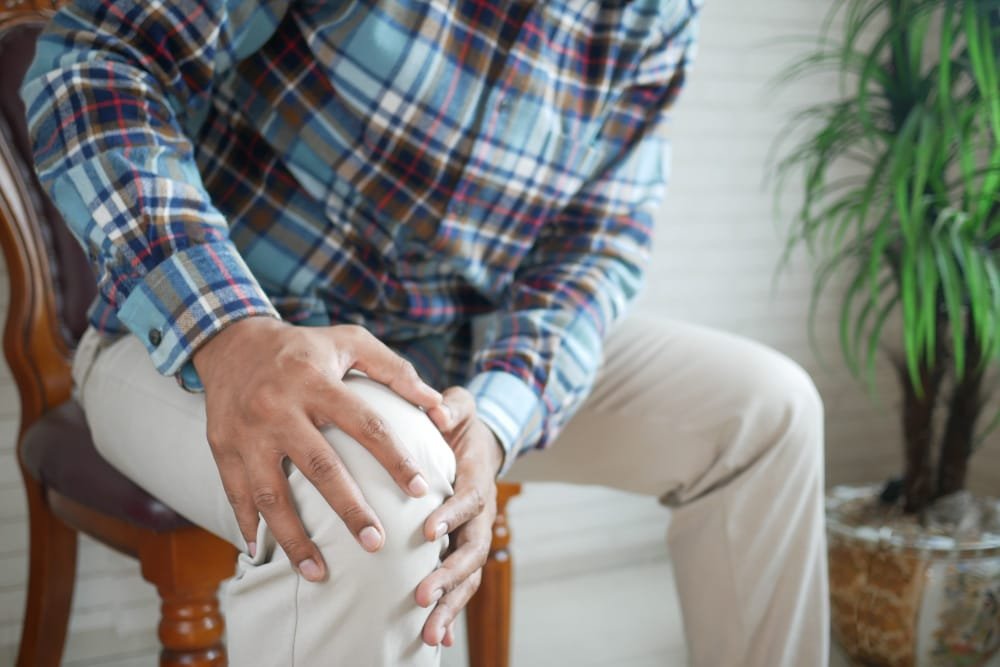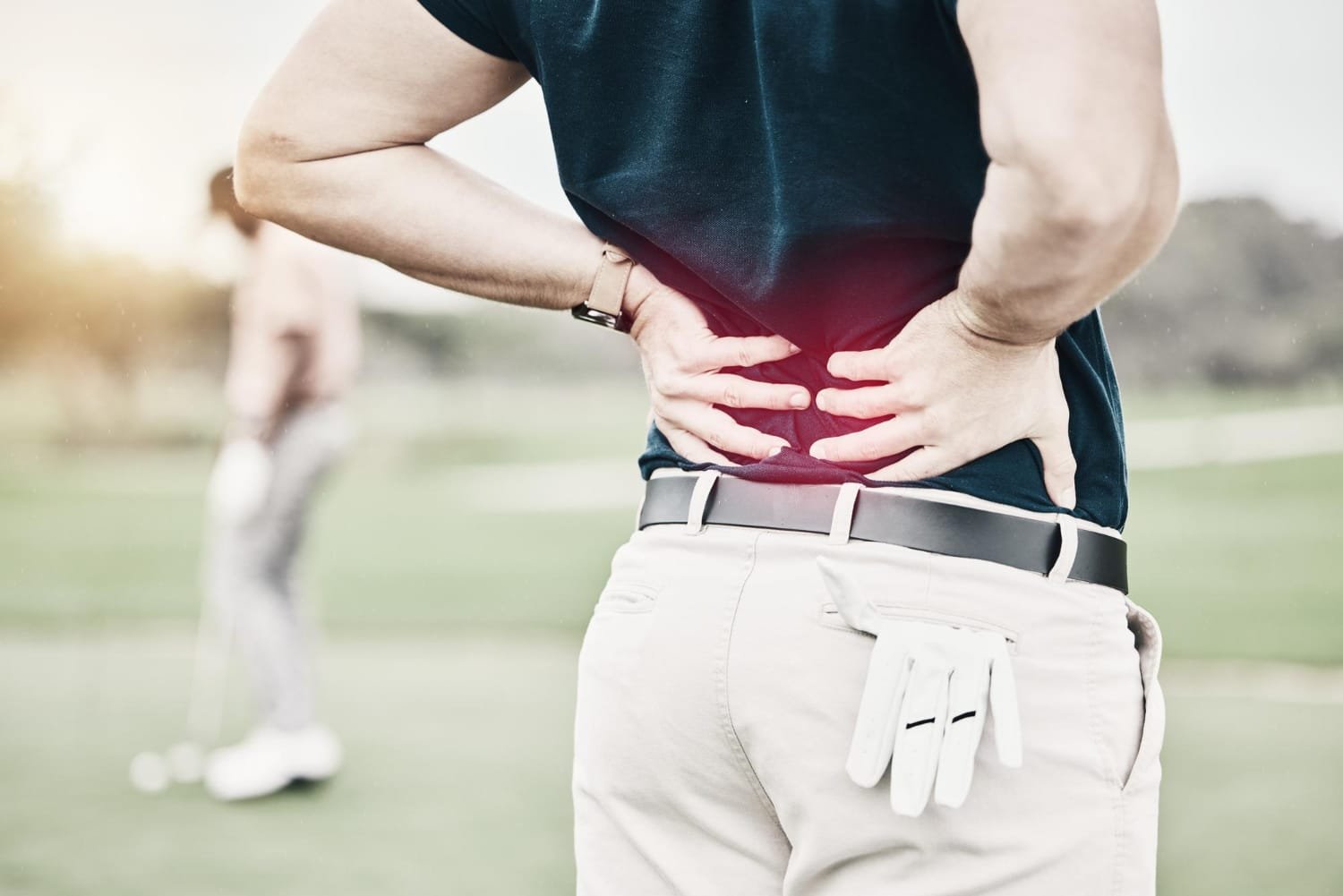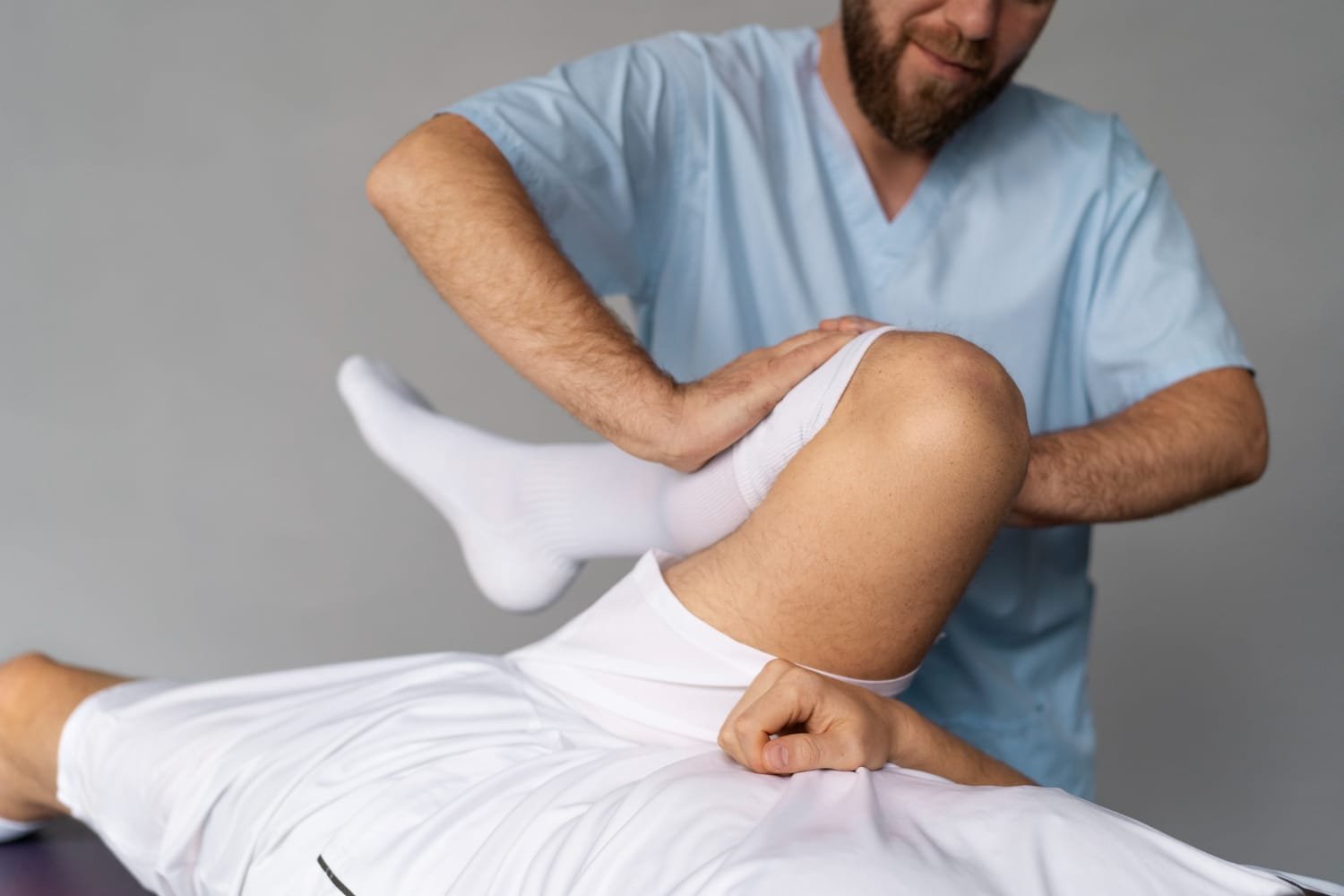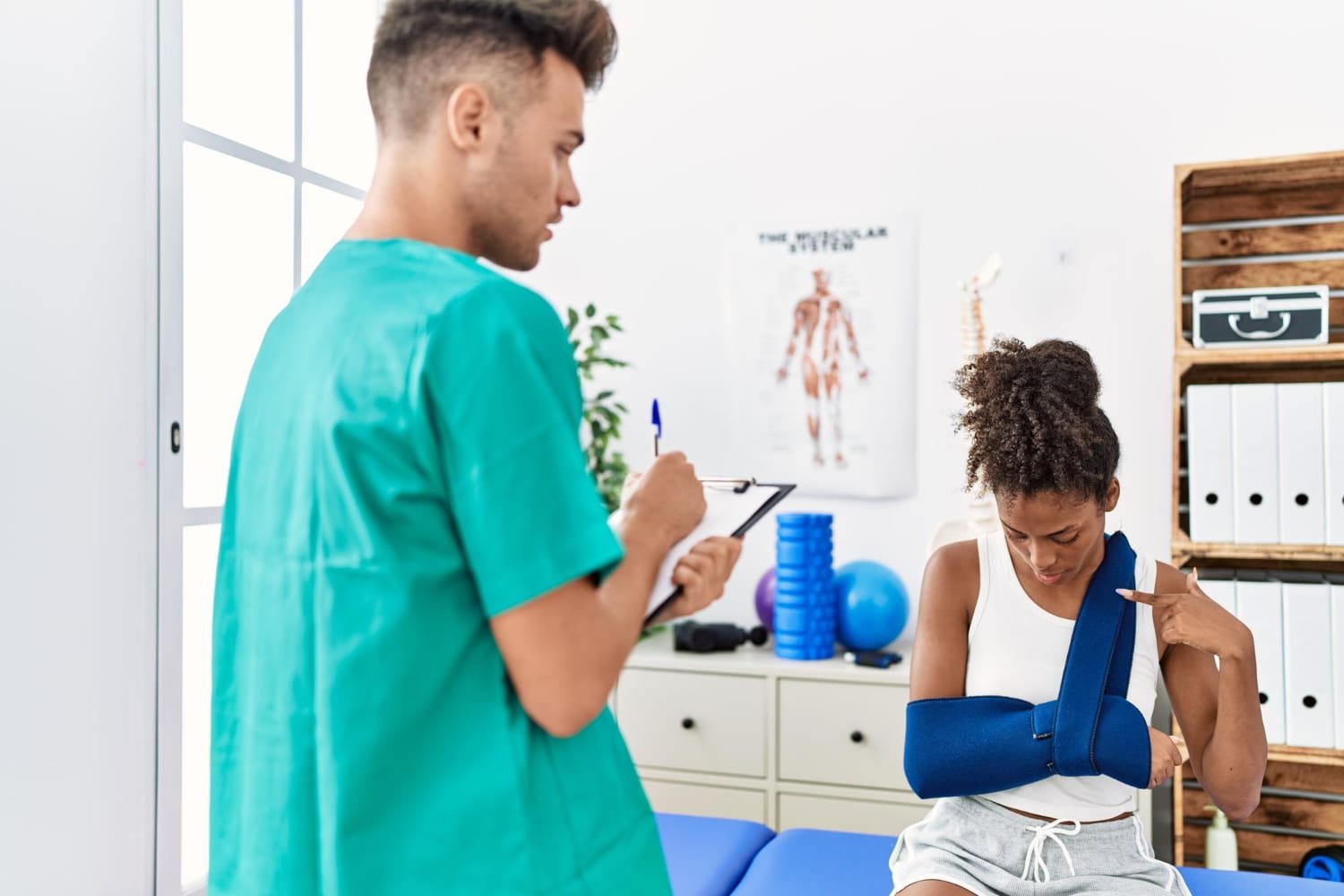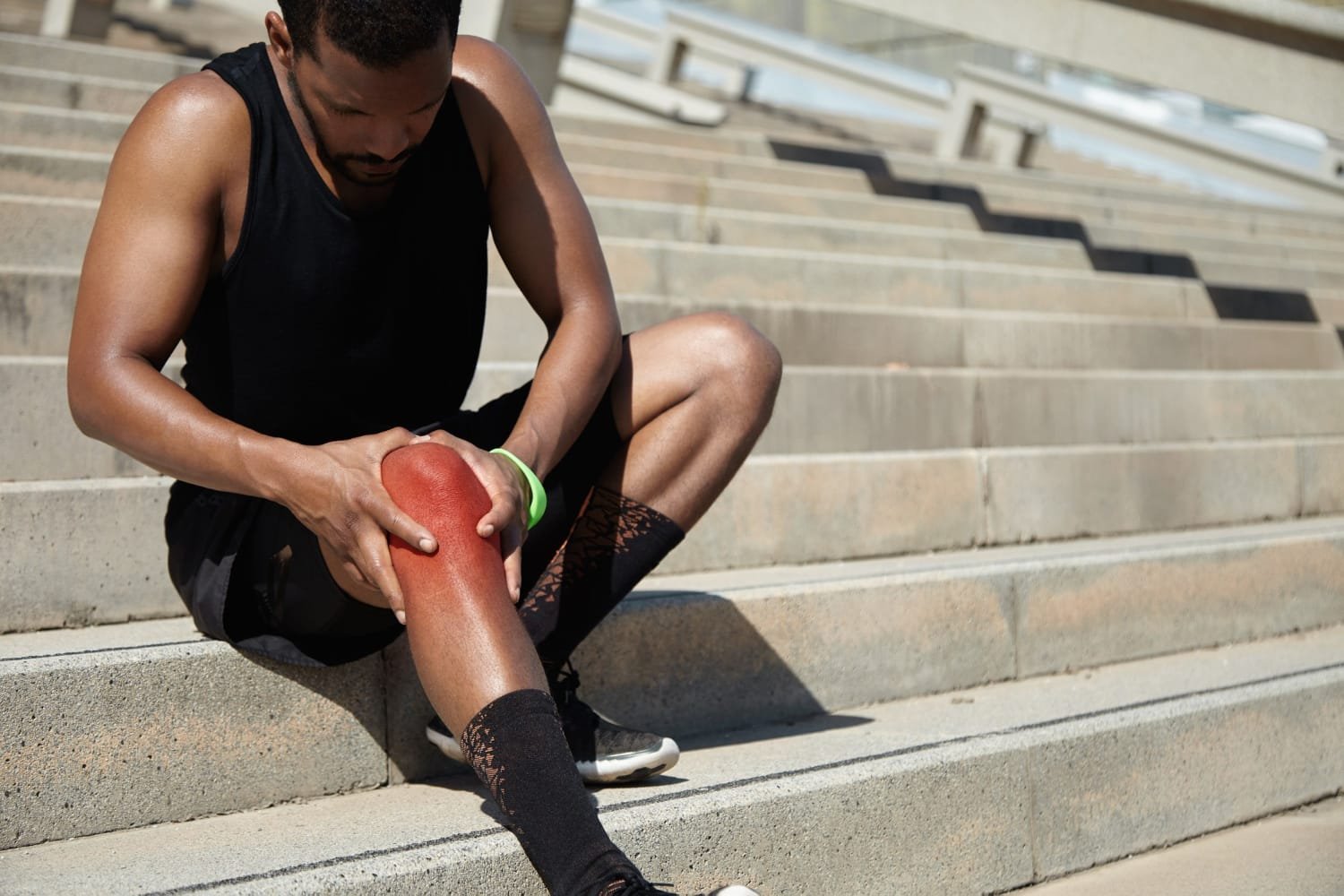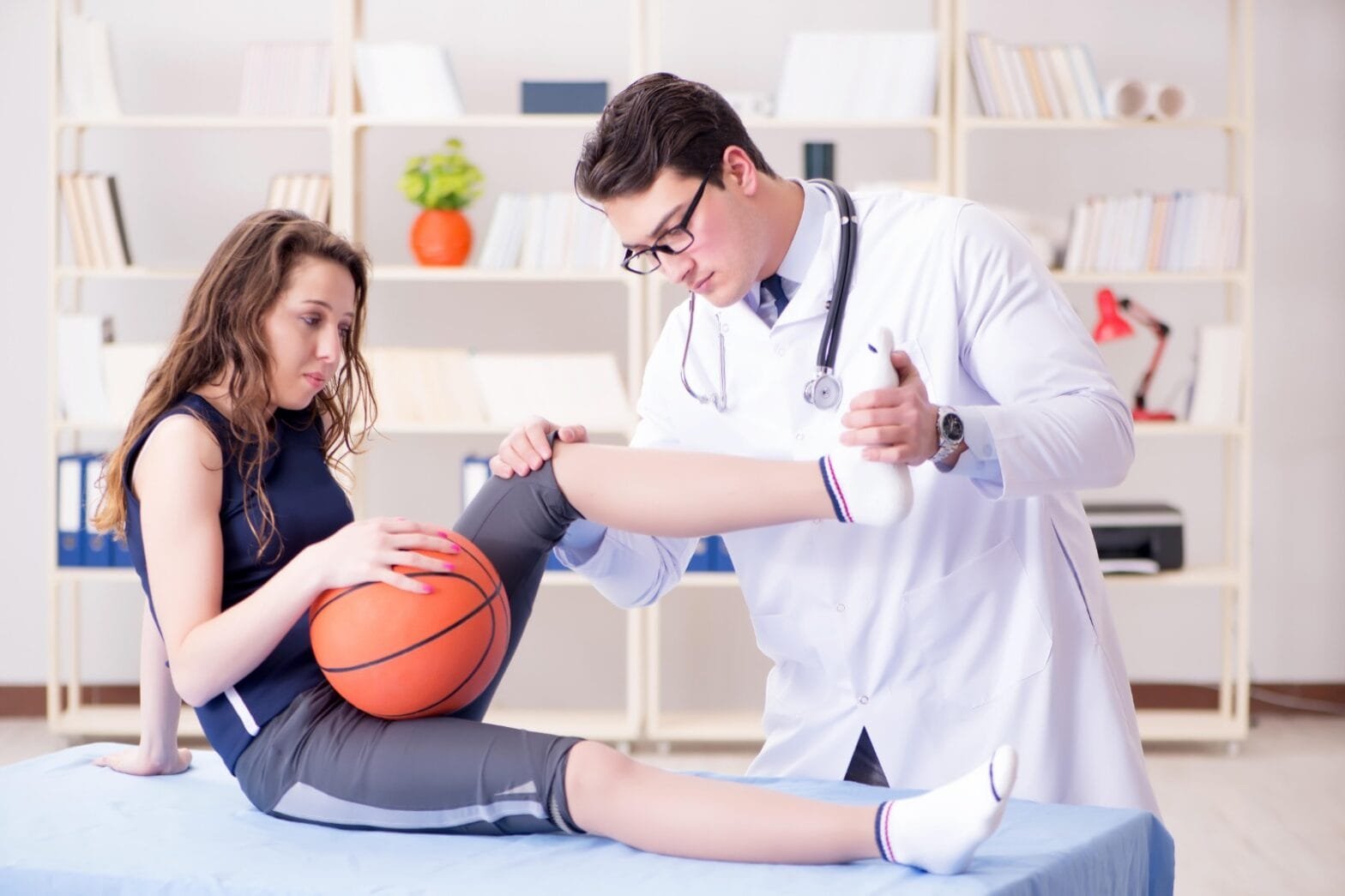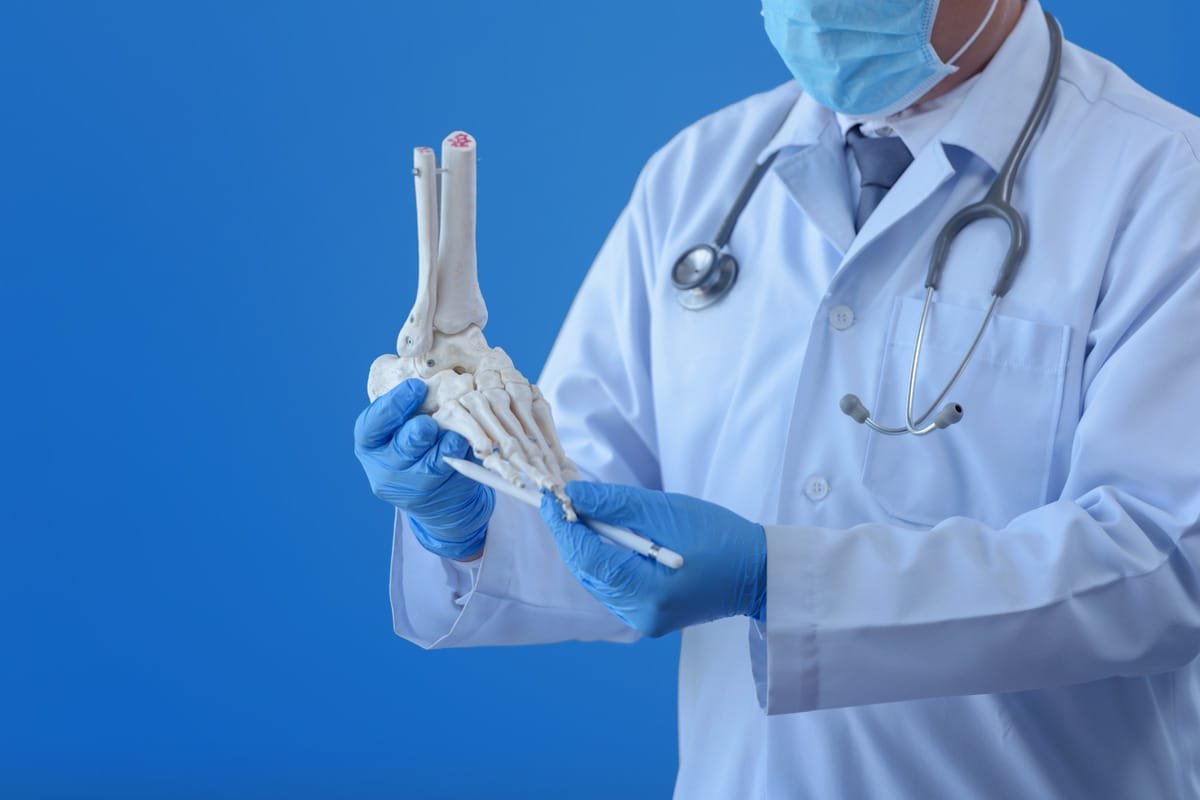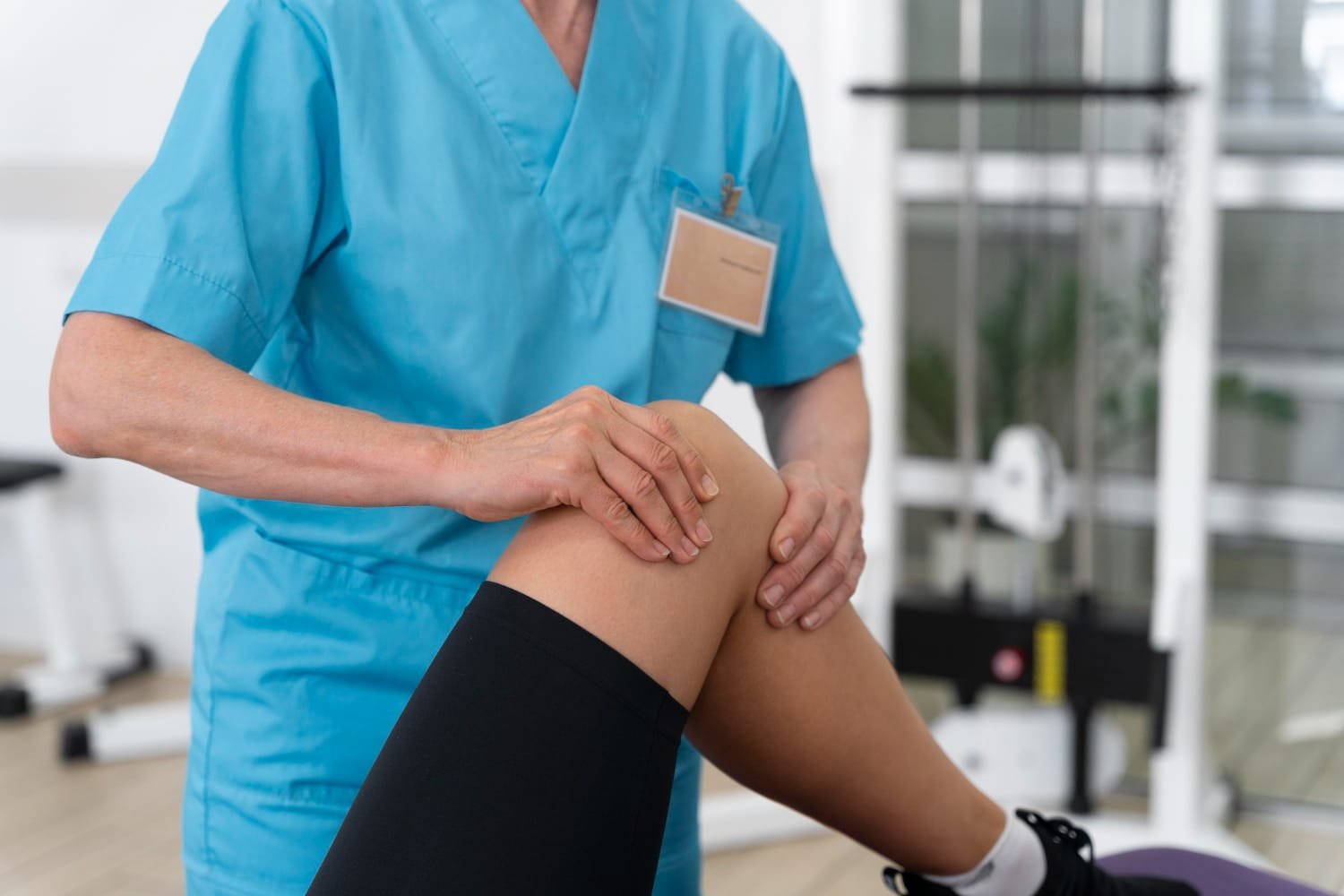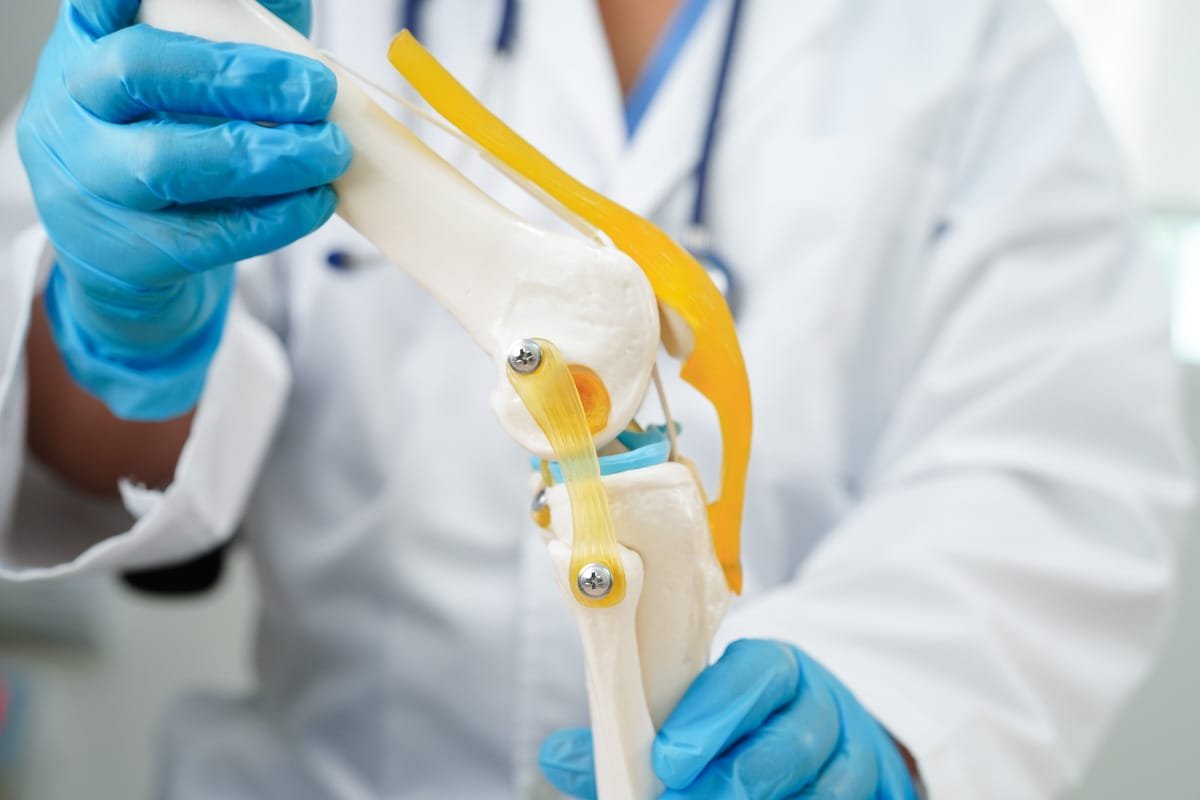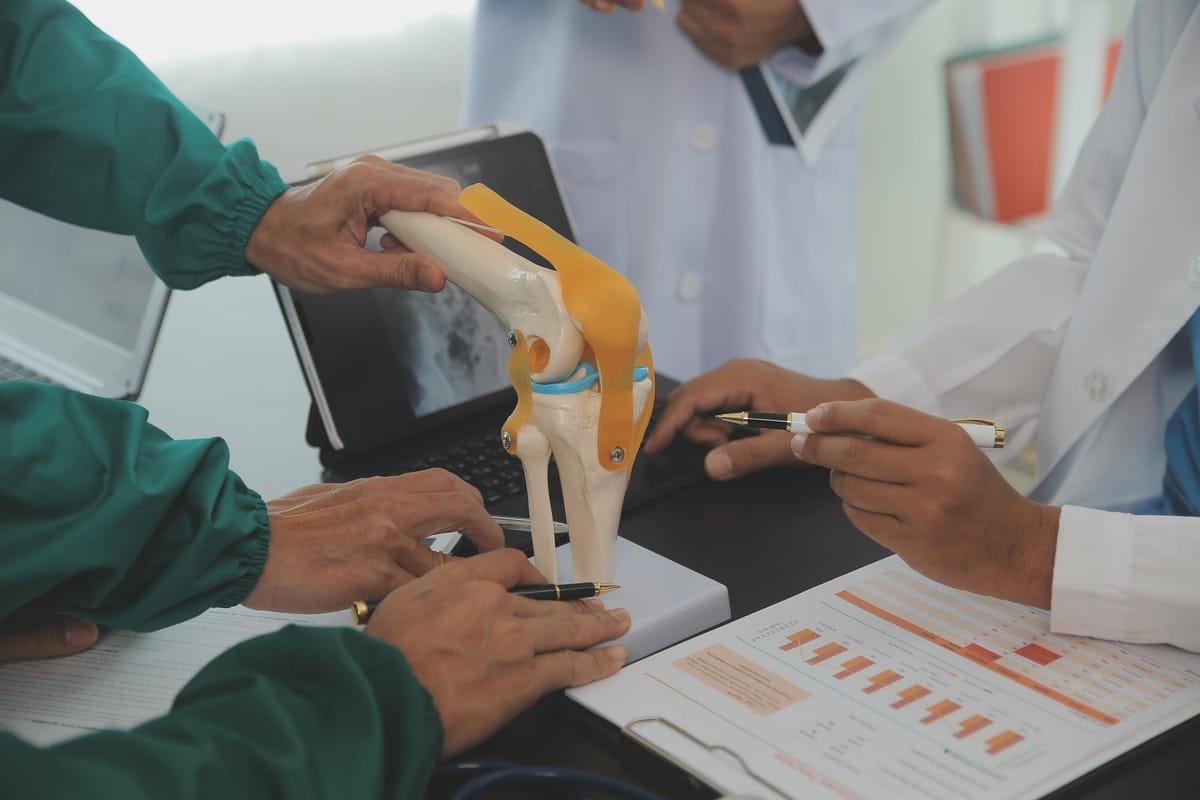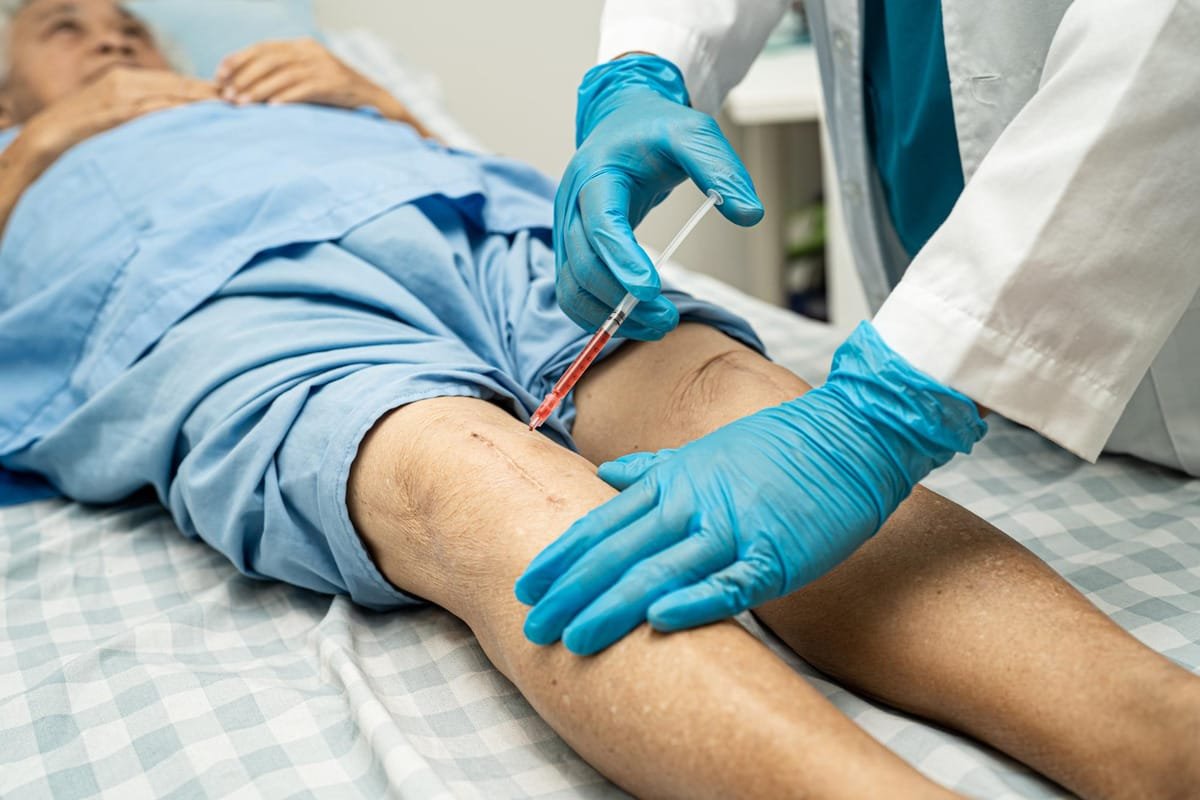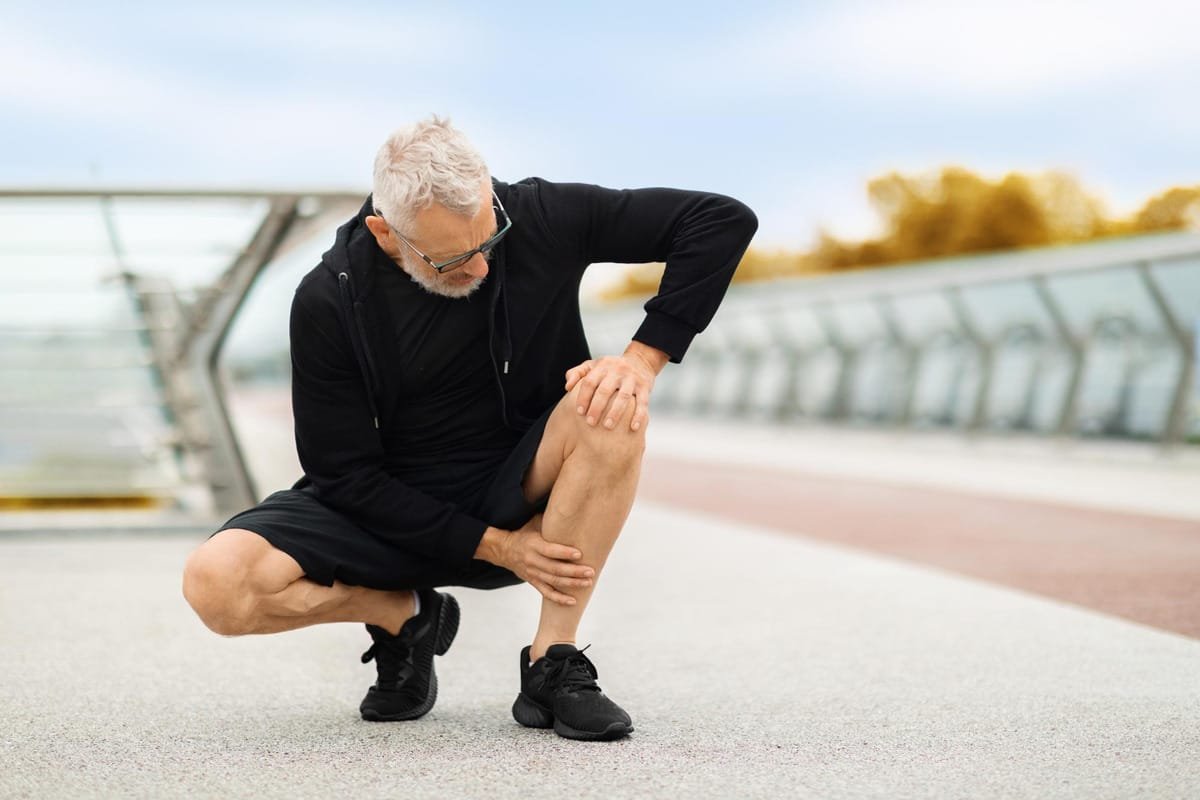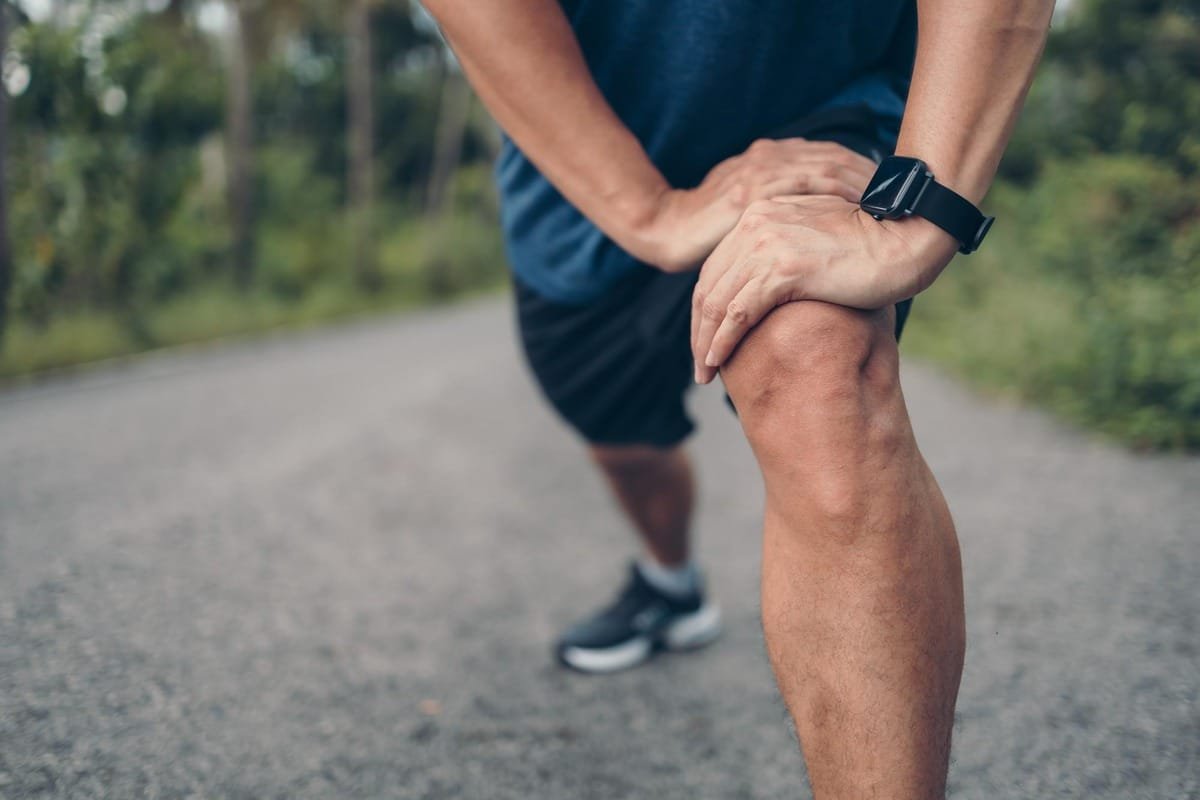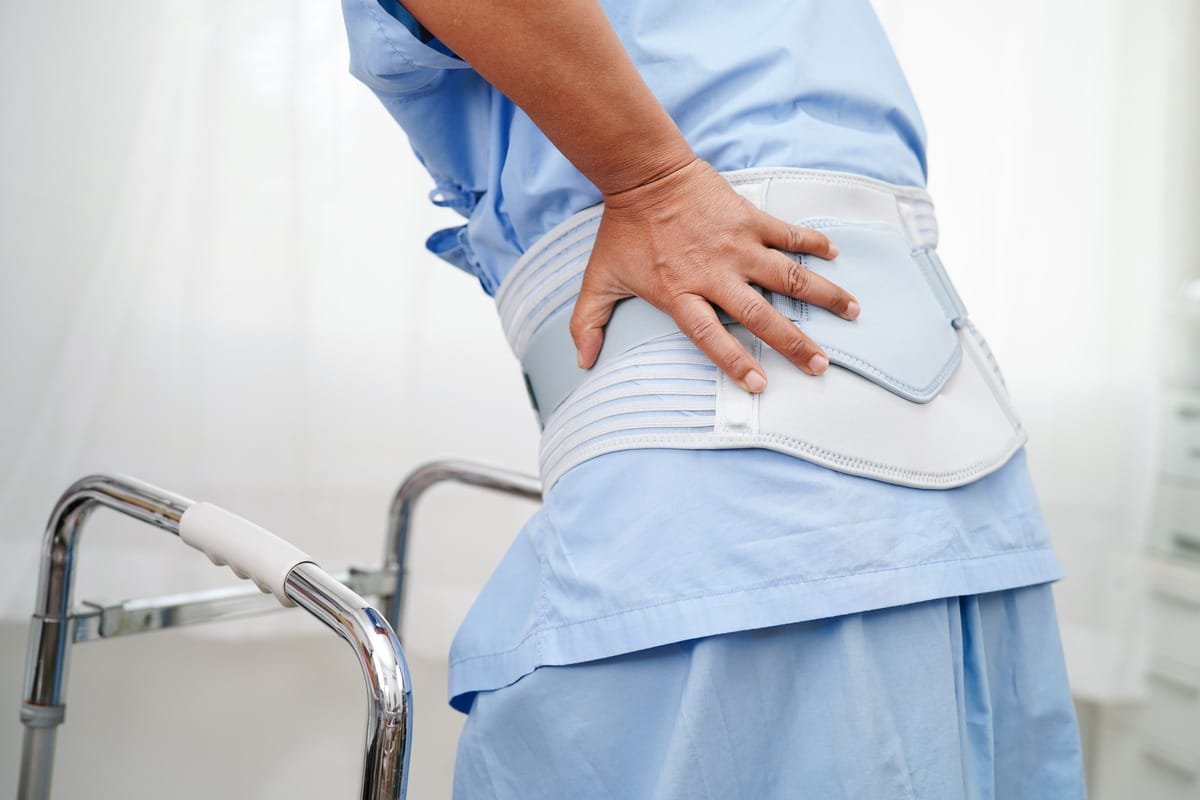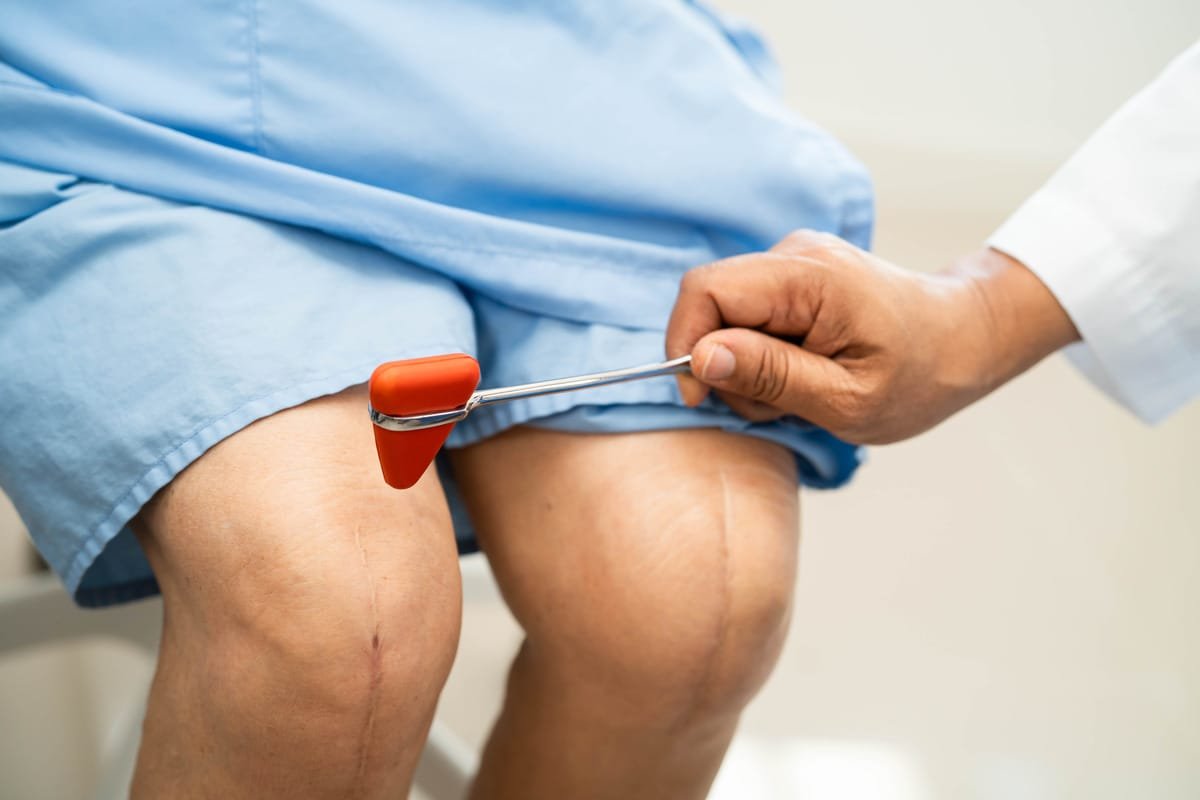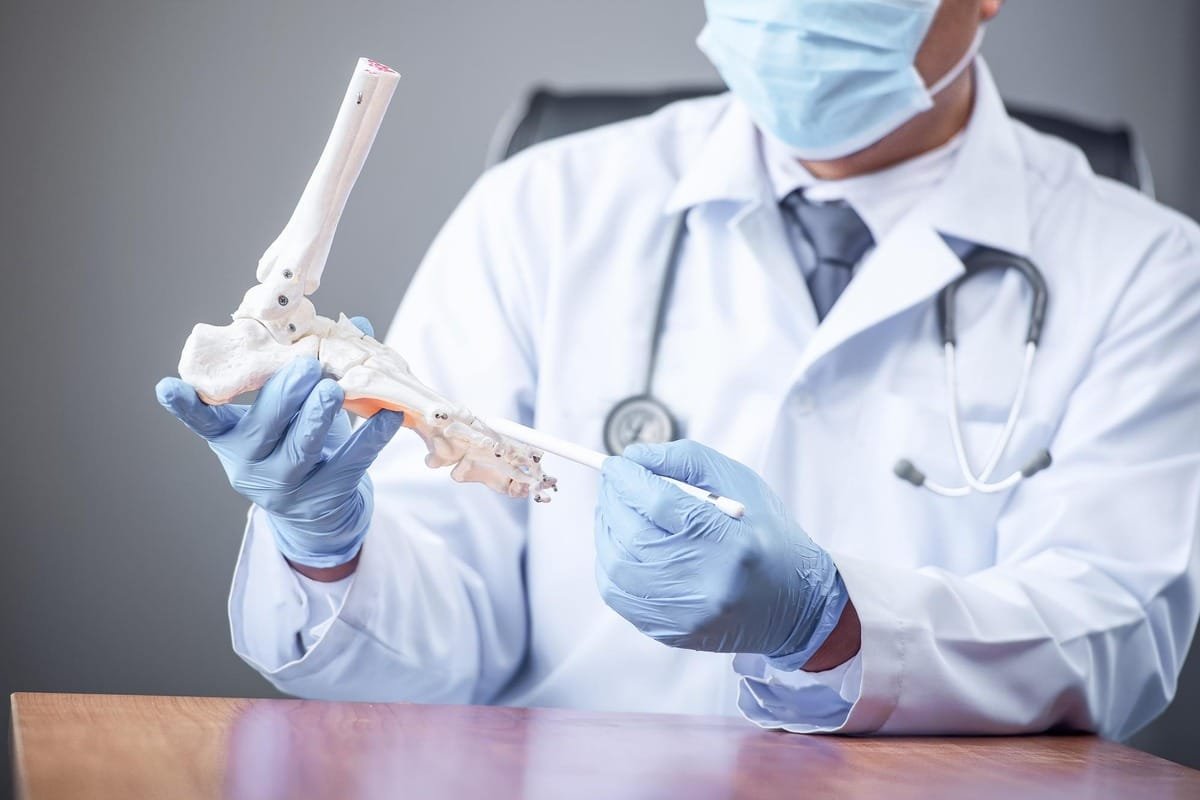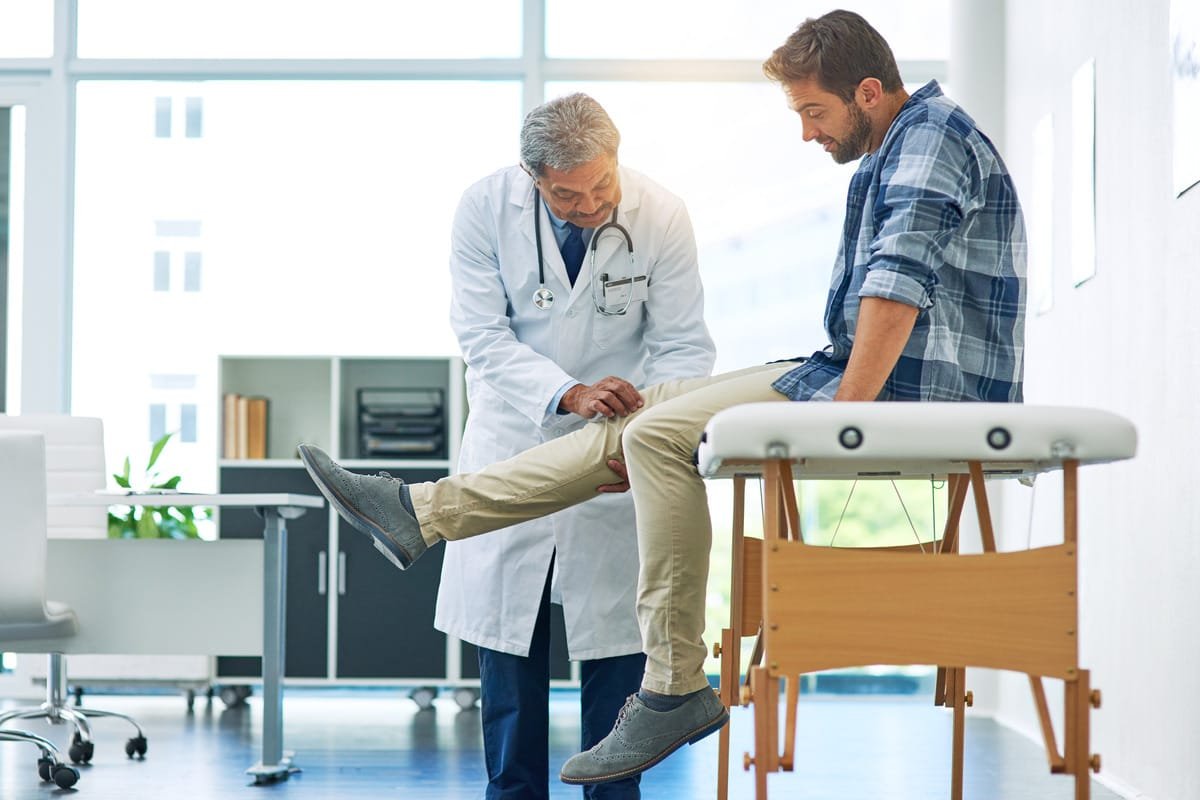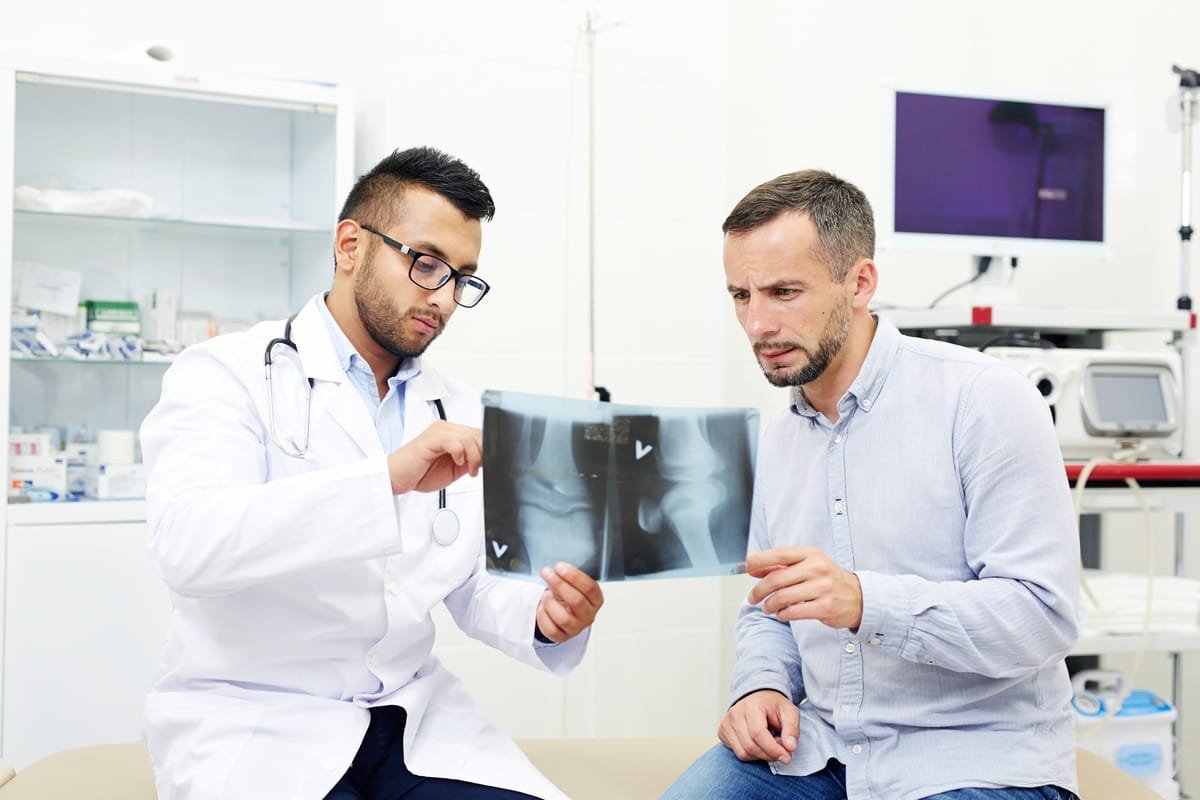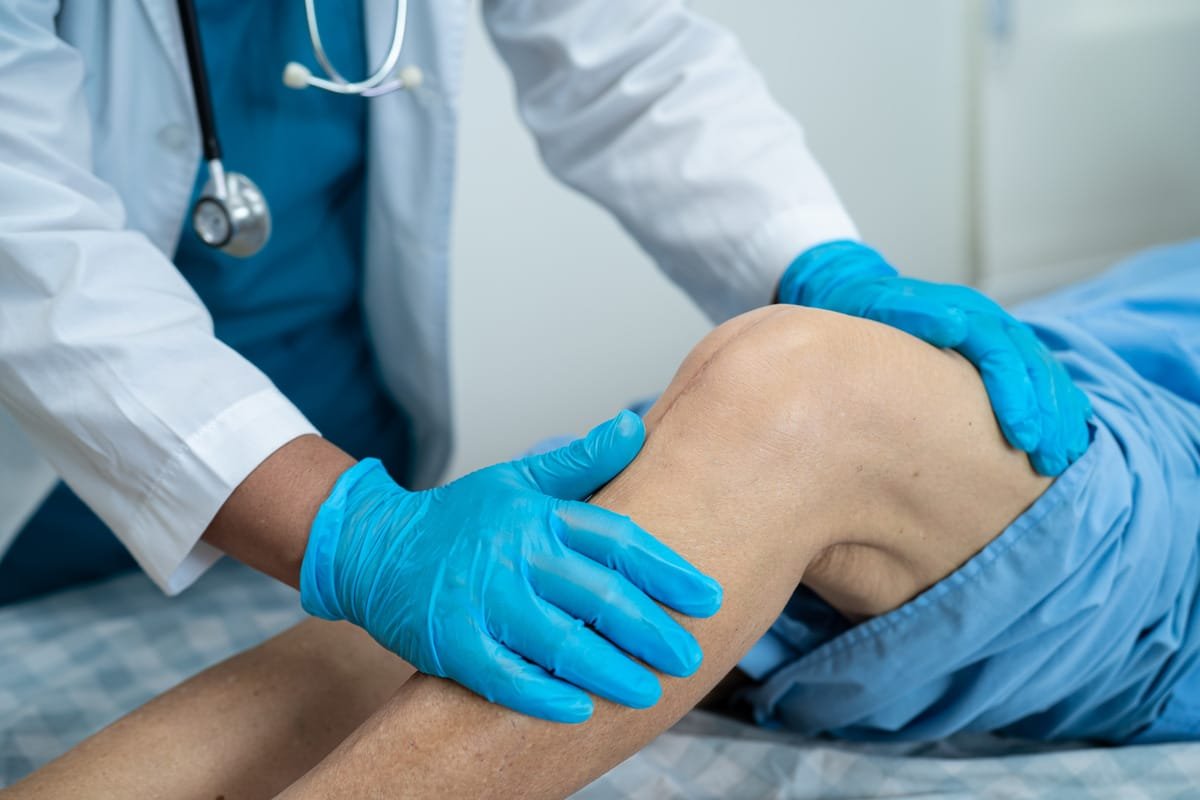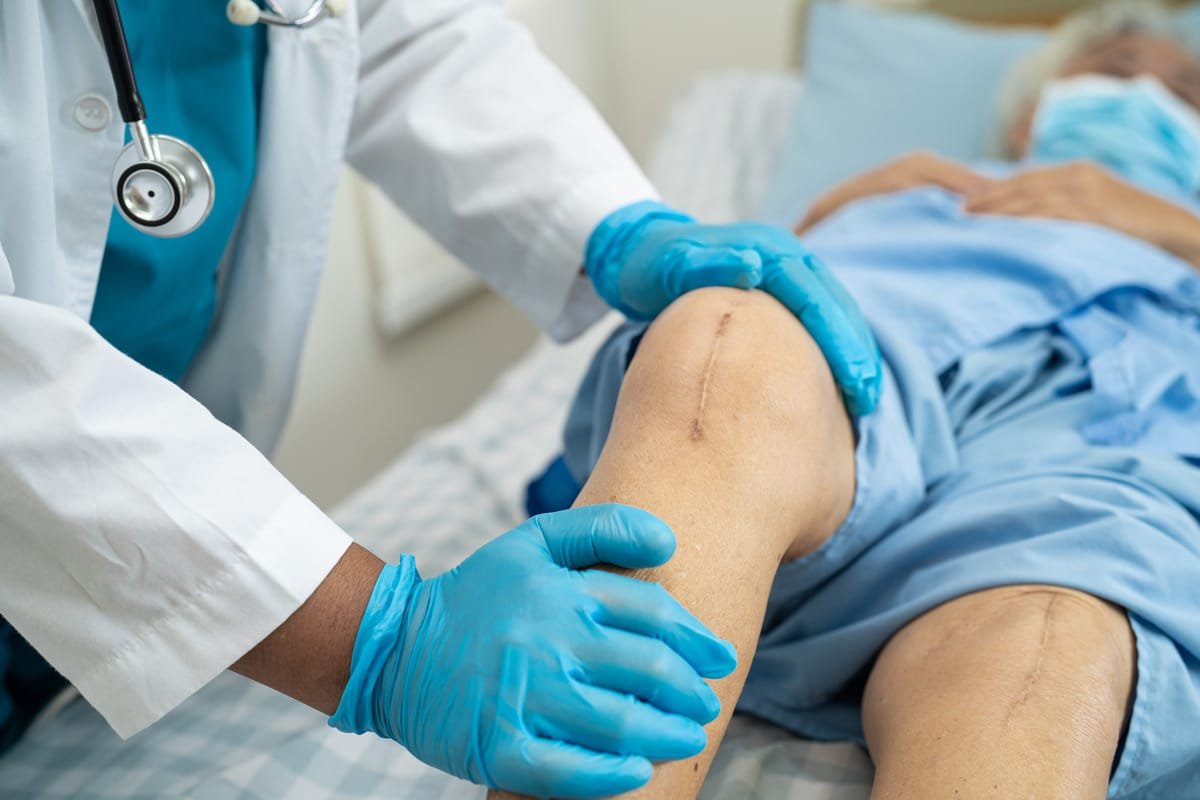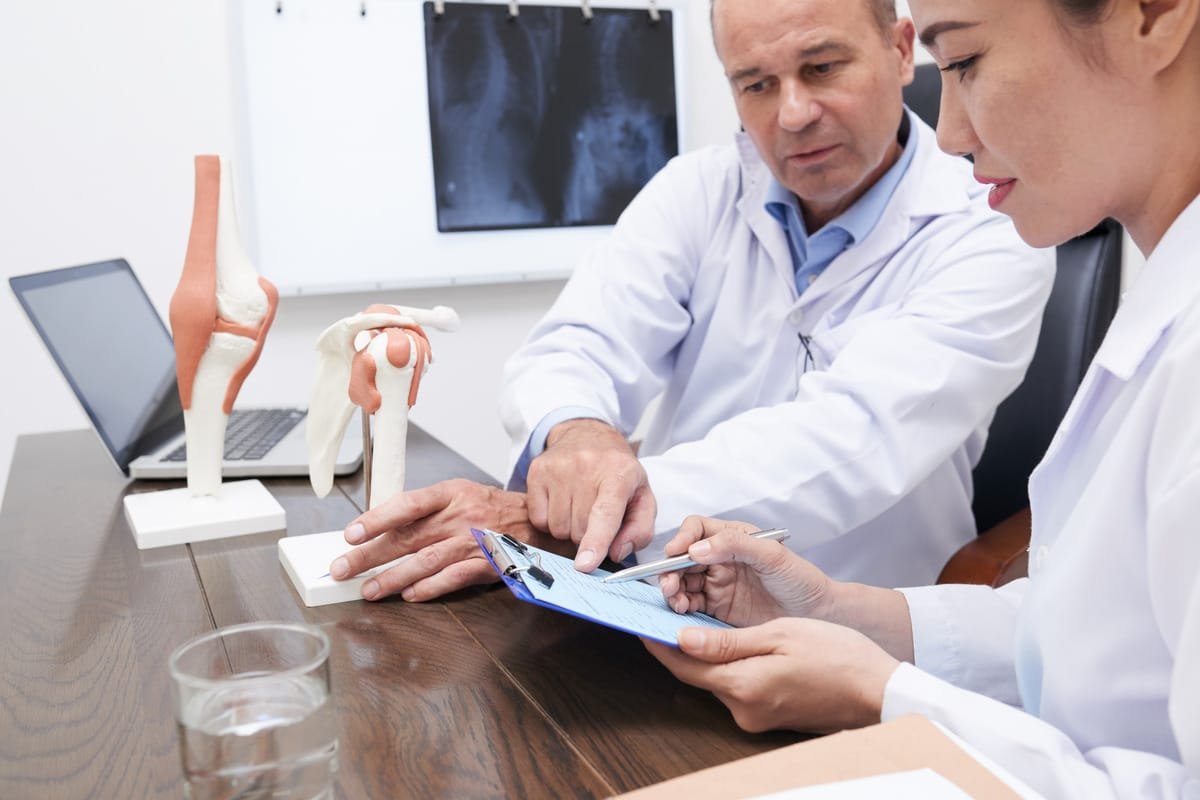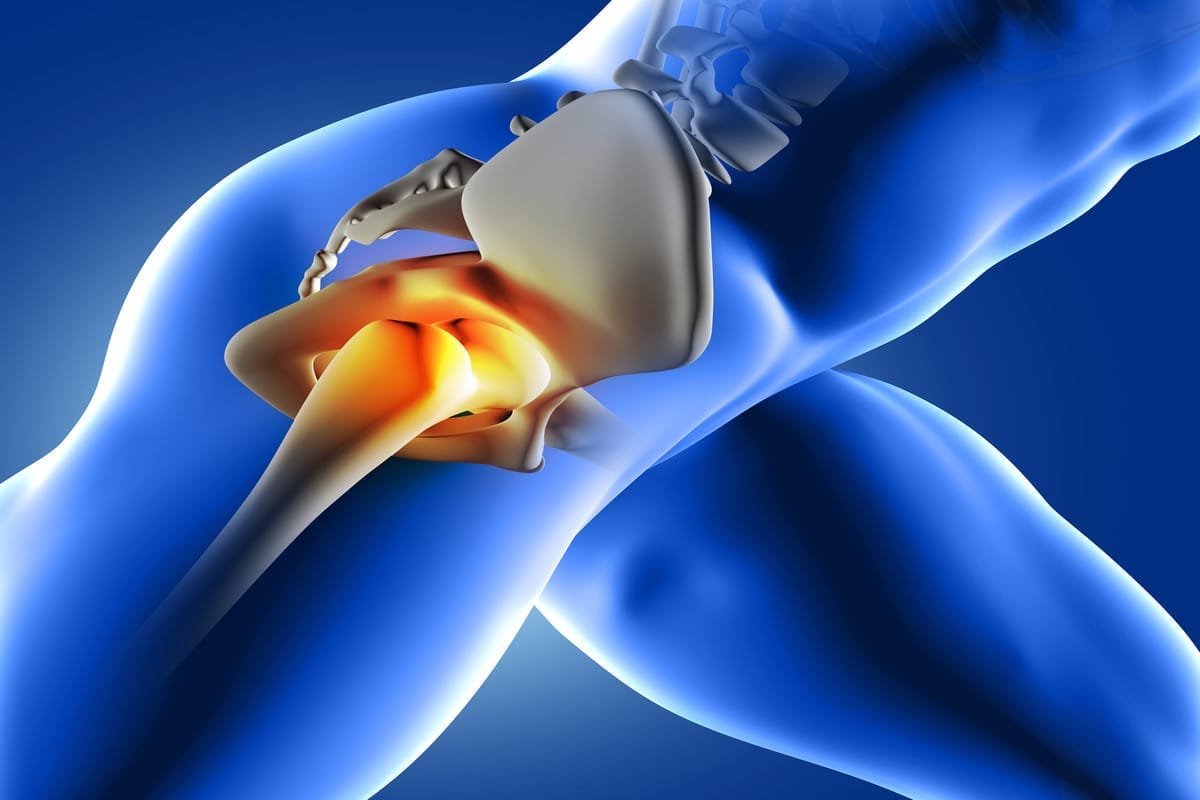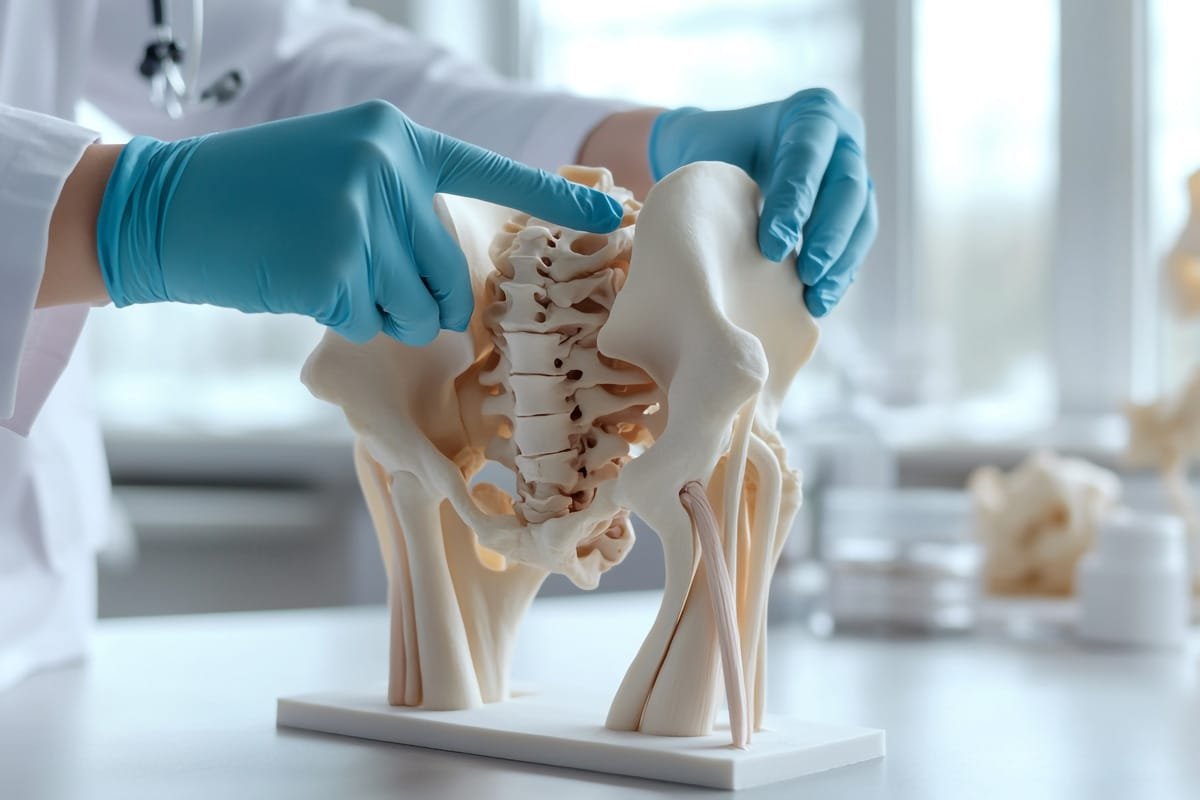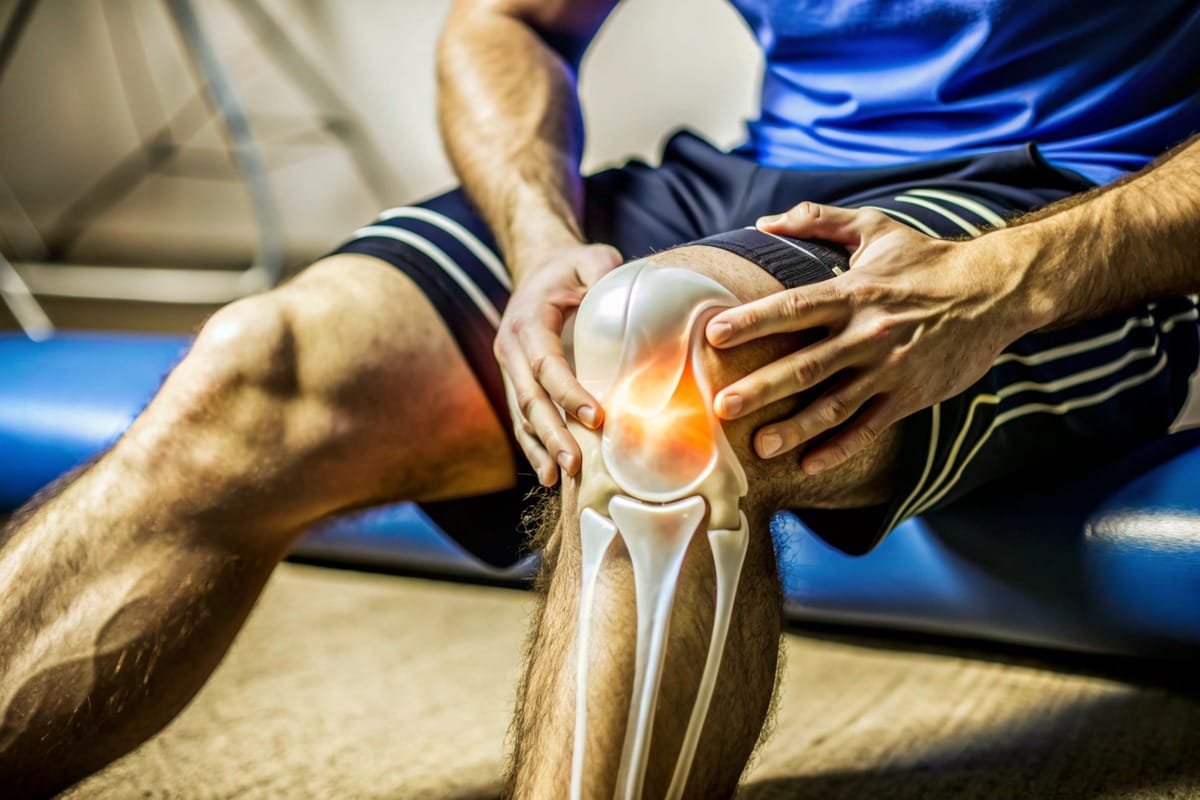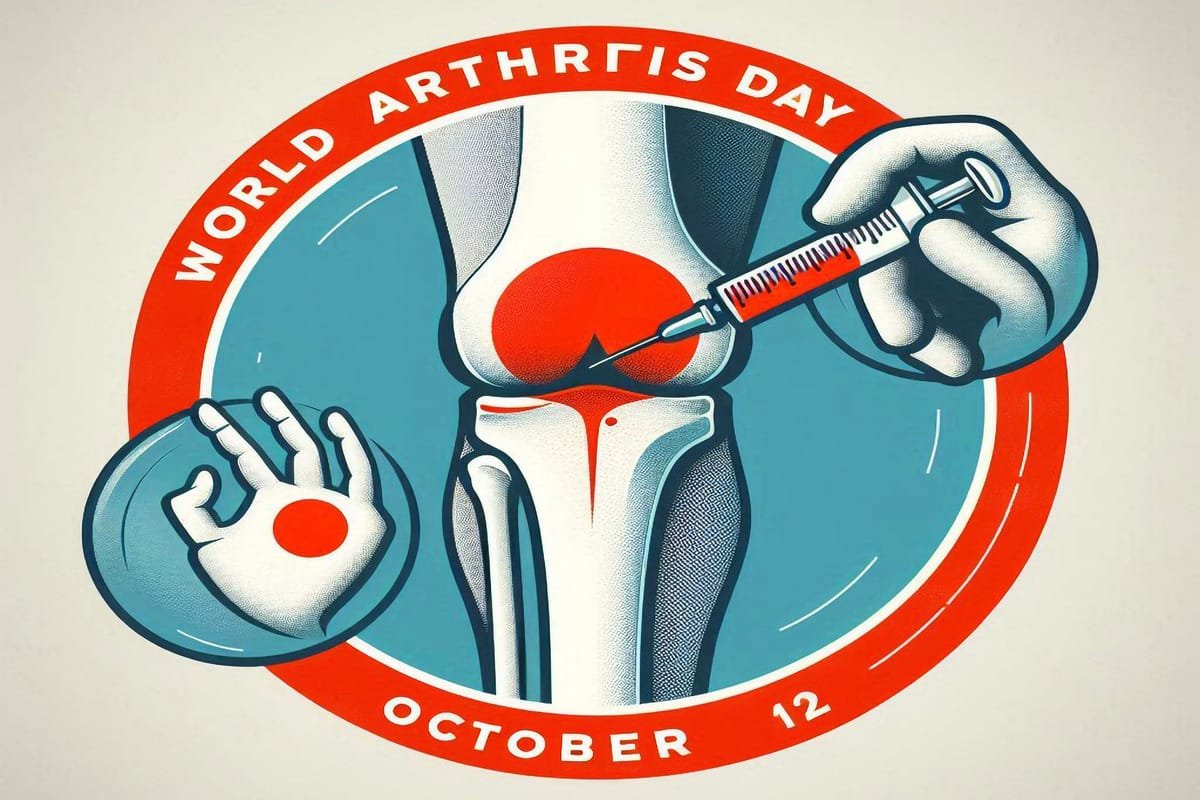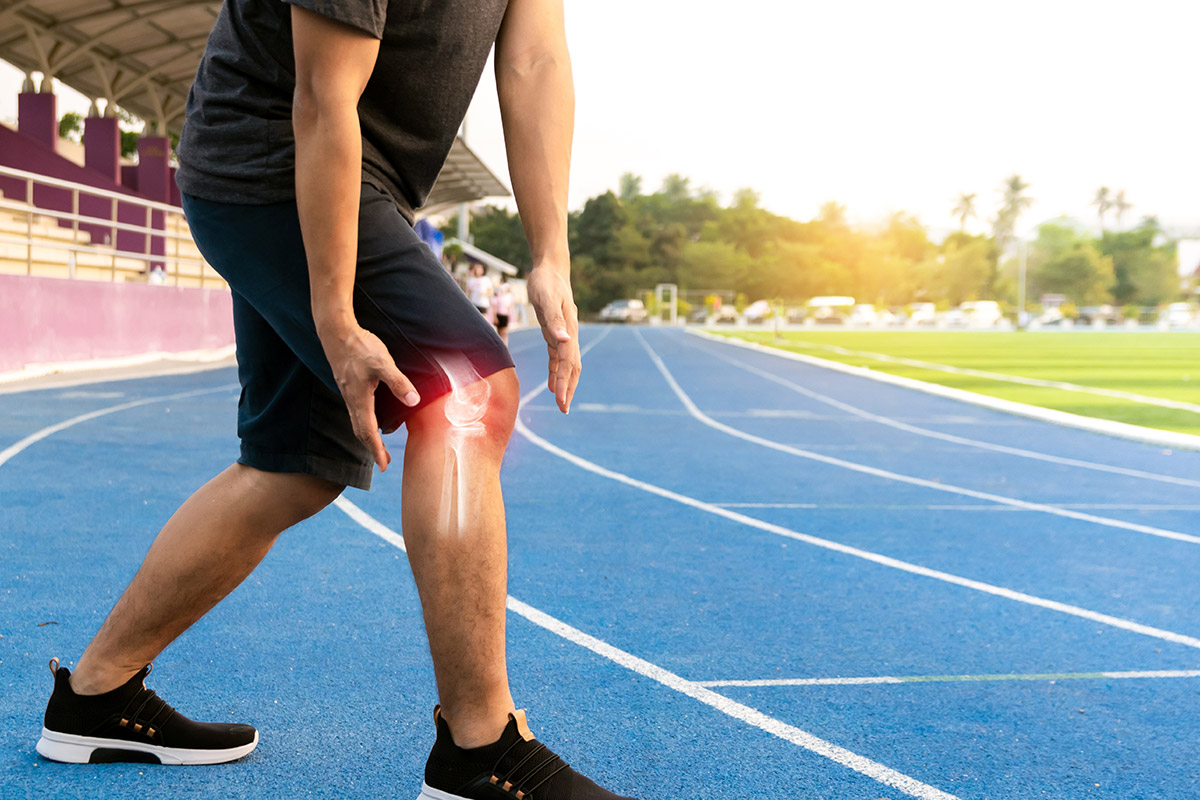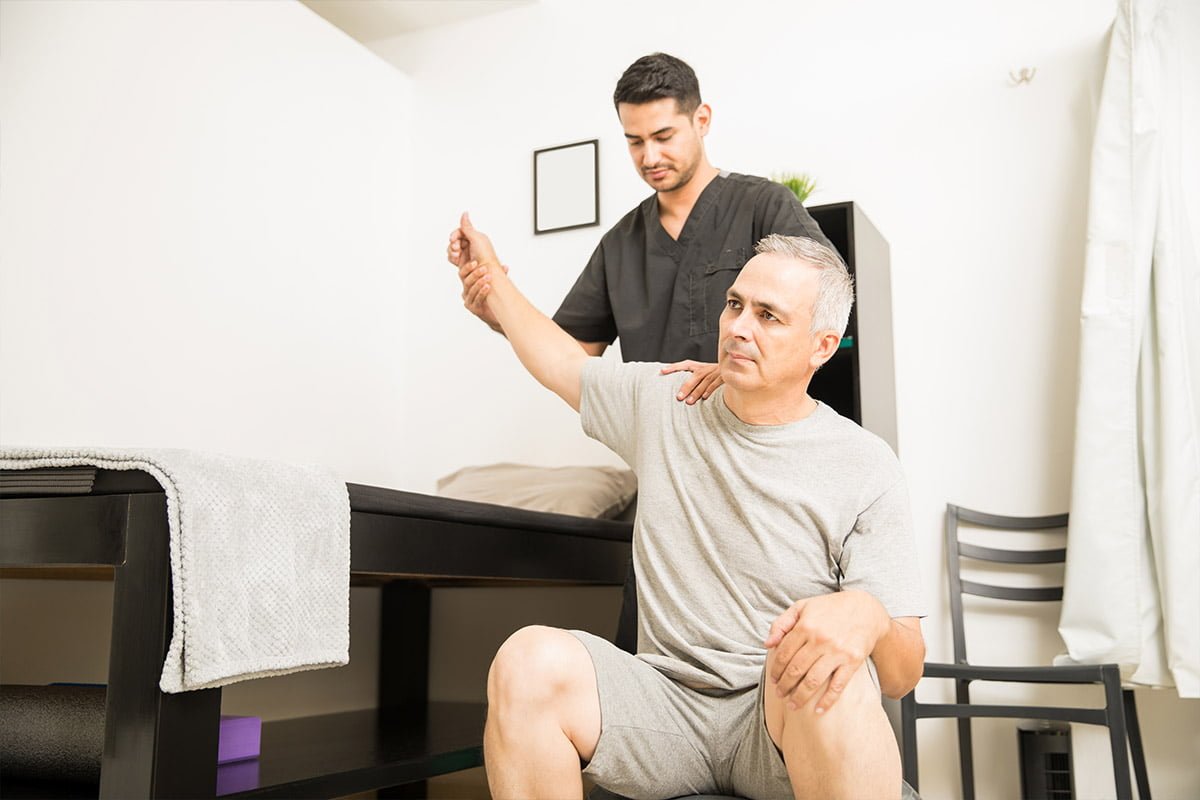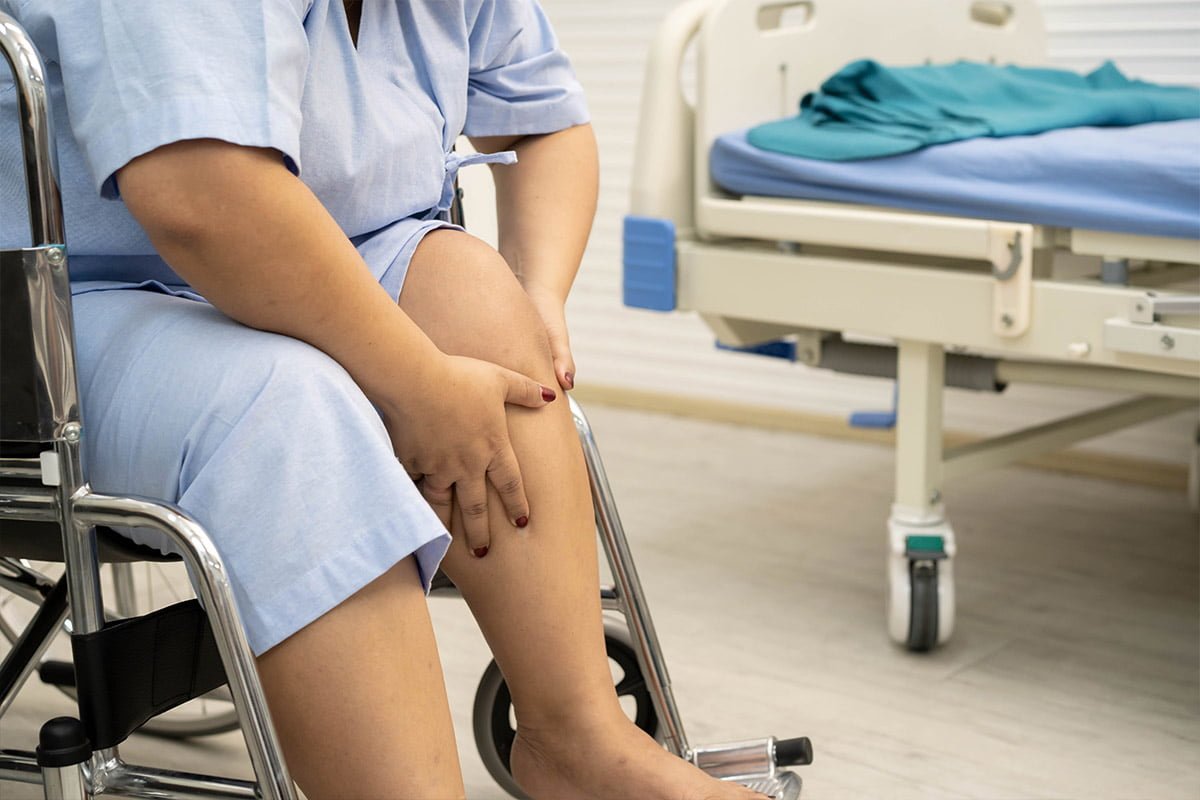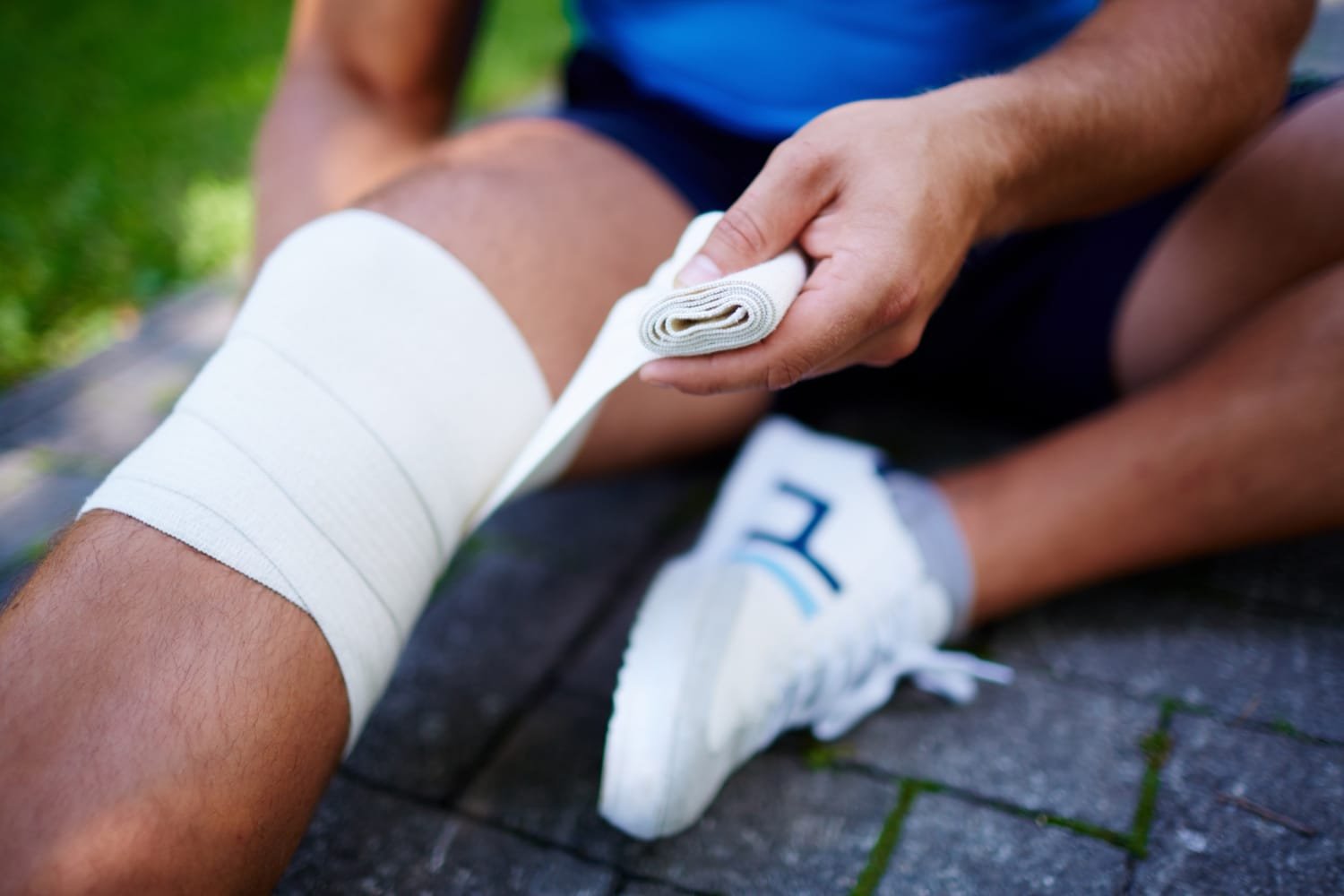
Early Signs You Might Have an ACL Injury (and When to See a Doctor)
October 16, 2025The Anterior Cruciate Ligament (ACL) is one of the key stabilizing ligaments in your knee. It connects your femur (thigh bone) to your tibia (shin bone), and helps prevent excessive forward movement and rotation of the tibia relative to the femur. An injury to the ACL, whether a tear or stretch, can lead to pain, instability, and long-term joint problems if not managed properly.
Because ACL injuries are common in athletes and active people, recognizing the early warning signs is crucial. Catching it early can make a significant difference in treatment and recovery. Below is a detailed look at the telltale signs and when you should see a specialist—such as Dr. Deepak Mishra, a well-known orthopedic surgeon in Faridabad.
What Happens in an ACL Injury?

An ACL injury often occurs from sudden twisting, pivoting, or a direct blow to the knee. It may be a:
- Partial tear — some fibers are damaged but the ligament is not completely severed
- Complete tear/rupture — the ligament is fully torn or torn in multiple places
- Stretch (sprain) — the ligament is overstretched but intact
Many ACL injuries are accompanied by damage to other structures, like the meniscus, articular cartilage, or other knee ligaments.
Early Signs & Symptoms to Watch For
Here are some common early warning signs that might suggest an ACL injury:
| Sign / Symptom | What You Might Experience | Why It Happens |
|---|---|---|
| A “pop” or a snapping sound | Right at the moment of injury, you might hear or feel a pop in the knee. | The ligament fibers give way or rupture. |
| Sudden pain, sometimes severe | The pain might be intense enough to force you to stop moving or bear weight. | Inflammation, micro-tears, or bleeding in the joint contribute to pain. |
| Rapid swelling / joint effusion | Within a few hours, the knee might swell significantly (accumulation of fluid or blood). | Bleeding inside the joint (hemarthrosis) or inflammation. |
| Reduced range of motion / stiffness | You may find it difficult to fully bend or straighten your knee. | Swelling and pain restrict motion. |
| Instability / feeling of “giving way” | The knee may feel unstable, weak, or like it will buckle when you step or twist. | The torn or compromised ACL can’t control tibial motion well. |
| Difficulty continuing activity / inability to bear weight | You may not be able to walk normally or continue your sport or movement. | Pain, instability, and swelling together make load-bearing unsafe. |
| Other secondary signs | Bruising around the knee, other ligament or meniscus symptoms (locking, catching) | ACL injuries often accompany other knee injuries. |
Some injuries may present more subtly—milder pain, occasional instability, or minimal swelling. But don’t ignore even mild signs if they follow trauma or awkward knee movement.
Why Early Detection Matters
- Prevents further damage: An unstable knee can cause damage to cartilage, menisci, or other ligaments.
- Better healing options: Partial tears caught early might be addressed more conservatively or with less invasive surgery.
- Faster recovery: Early diagnosis and initiation of proper therapy often lead to better outcomes.
- Reduced risk of long-term problems: Untreated ACL injuries may contribute to early osteoarthritis or chronic knee issues.
How Is It Diagnosed?
When you see a doctor, here’s typically what happens:
- History & Physical Exam
The clinician will ask how the injury happened, your symptoms, and then perform special tests like the Lachman test, anterior drawer test, and pivot shift test to assess laxity and instability. - Imaging
- X-ray: to rule out fractures or bone involvement
- MRI: the gold standard to visualize ligament damage and associated injuries (meniscus, cartilage)
- Arthroscopic evaluation (in some cases)
A small scope may be used to look inside the joint, confirm damage, and sometimes perform repair.
Treatment Basics
Treatment depends on the severity, your activity level, age, and associated injuries:
- Conservative / Non-surgical
In milder cases or lower-demand patients, physical therapy, bracing, and activity modification may suffice. - Surgical reconstruction
For complete tears or active patients, ACL reconstruction (using tendon grafts) is common. - Rehabilitation
Post-treatment, intensive physiotherapy is essential to restore strength, flexibility, balance, and function.
When Should You See a Doctor (Or an Orthopedic Specialist)?
You should seek medical attention immediately if:
- You heard a pop, followed by pain or swelling.
- You can’t bear weight on the knee.
- The knee feels unstable or is “giving out.”
- Swelling develops rapidly (within hours).
- You notice restricted movement or inability to fully bend/straighten the knee.
- Symptoms persist beyond a few days with no improvement.
Delaying evaluation may allow further damage to the knee structures, making repair more complicated.
Why Dr. Deepak Mishra Is a Name to Consider in Faridabad
If you’re in or near Faridabad and suspect an ACL injury, one name frequently mentioned is Dr. Deepak Mishra. Here’s why:
- He has over 26 years of experience in orthopedic surgery, specializing in knee and hip replacements, arthroscopy, and joint reconstruction.
- He holds credentials such as MBBS and MS (Orthopaedics) from JIPMER, Pondicherry, and has had advanced training including in the UK.
- Dr. Mishra is the Director & Head of Orthopaedics, Unit I at Asian Institute of Medical Sciences, Faridabad.
- His practice covers arthroscopic surgery, ligament reconstruction (including ACL), joint replacement, and trauma surgery.
- He is widely regarded in local listings and medical directories as a top orthopaedic expert in Faridabad and the Delhi NCR region.
Because ACL injuries involve delicate knee structures, selecting a surgeon with strong experience in knee and ligament reconstruction is vital — and Dr. Mishra fits that description for many in the Faridabad area.
Recent Blogs
-
 The Difference Between ACL Tear, Sprain, and Rupture
The Difference Between ACL Tear, Sprain, and Rupture- 16, October 2025
-
 Post-ACL Surgery Do’s and Don’ts
Post-ACL Surgery Do’s and Don’ts- 16, October 2025
-
 Early Signs You Might Have an ACL Injury (and When to See a Doctor)
Early Signs You Might Have an ACL Injury (and When to See a Doctor)- 16, October 2025
-
 Does Insurance Cover Robotic Knee Replacement Surgery?
Does Insurance Cover Robotic Knee Replacement Surgery?- 6, October 2025
-
 When Can You Return to Sports After Robotic Knee Replacement?
When Can You Return to Sports After Robotic Knee Replacement?- 6, October 2025
-
 Impact of Obesity on Knee Replacement Surgery and Recovery
Impact of Obesity on Knee Replacement Surgery and Recovery- 30, September 2025
-
 Early vs. Delayed Knee Replacement: Which Is Better?
Early vs. Delayed Knee Replacement: Which Is Better?- 30, September 2025
-
 How Durable Are Knee Implants? A Complete Guide
How Durable Are Knee Implants? A Complete Guide- 24, September 2025
-
 Can You Play Sports After Knee Replacement Surgery?
Can You Play Sports After Knee Replacement Surgery?- 24, September 2025
-
 Key Benefits of Revision Hip Replacement You Should Know
Key Benefits of Revision Hip Replacement You Should Know- 15, September 2025
-
 Revision Hip Replacement vs. Primary Hip Replacement: Key Differences
Revision Hip Replacement vs. Primary Hip Replacement: Key Differences- 15, September 2025
-

-
 Total Knee Replacement Complications: What You Need to Know
Total Knee Replacement Complications: What You Need to Know- 5, September 2025
-
 Can You Play Sports After Hip Replacement Surgery?
Can You Play Sports After Hip Replacement Surgery?- 26, August 2025
-
 Preparing for Knee Replacement: Do’s and Don’ts Before Surgery
Preparing for Knee Replacement: Do’s and Don’ts Before Surgery- 26, August 2025
-

-
 What to Know About Knee Replacement Revision Surgery
What to Know About Knee Replacement Revision Surgery- 18, August 2025
-
 Cost of Hip Replacement in India – What Patients Should Know
Cost of Hip Replacement in India – What Patients Should Know- 11, August 2025
-

-
 Who Is the Best Orthopedic Doctor for Sports Injuries?
Who Is the Best Orthopedic Doctor for Sports Injuries?- 27, July 2025
-
 Success Rate of Robotic Knee Replacement in India
Success Rate of Robotic Knee Replacement in India- 27, July 2025
-
 Why Surgeons Are Switching to Robotic Knee Replacements
Why Surgeons Are Switching to Robotic Knee Replacements- 15, July 2025
-
 Do’s and Don’ts After Knee Replacement Surgery
Do’s and Don’ts After Knee Replacement Surgery- 15, July 2025
-
 Best Robotic Knee Replacement in India
Best Robotic Knee Replacement in India- 7, July 2025
-
 Affordable Robotic Knee Replacement in India
Affordable Robotic Knee Replacement in India- 7, July 2025
-

-

-

-

-

-

-

-
 Orthopedic Meaning, Definition, Types, and More
Orthopedic Meaning, Definition, Types, and More- 6, June 2025
-
 What Are the Most Common Orthopedic Surgeries?
What Are the Most Common Orthopedic Surgeries?- 24, May 2025
-
 What Does an Orthopedic Doctor Do?
What Does an Orthopedic Doctor Do?- 24, May 2025
-

-

-

-
 Best Orthopedic Doctor for Knee Pain in Faridabad
Best Orthopedic Doctor for Knee Pain in Faridabad- 12, May 2025
-
 How to Prevent Knee Pain with Orthopedic Expert Tips
How to Prevent Knee Pain with Orthopedic Expert Tips- 29, April 2025
-

-
 Best Orthopedic Treatment in Faridabad: What You Should Know
Best Orthopedic Treatment in Faridabad: What You Should Know- 29, April 2025
-

-

-
 Best Knee Replacement Surgeon in Mathura
Best Knee Replacement Surgeon in Mathura- 14, April 2025
-
 Best Knee Replacement Surgeon in Hodal
Best Knee Replacement Surgeon in Hodal- 14, April 2025
-
 Best Knee Replacement Surgeon in Palwal
Best Knee Replacement Surgeon in Palwal- 14, April 2025
-

-

-

-
 Benefits of Minimally Invasive Knee Surgery
Benefits of Minimally Invasive Knee Surgery- 24, March 2025
-
 Types of Knee Implants
Types of Knee Implants- 17, March 2025
-
 Best knee Replacement Surgeon in India
Best knee Replacement Surgeon in India- 17, March 2025
-

-
 How to Recover Quickly After Knee Replacement Surgery
How to Recover Quickly After Knee Replacement Surgery- 10, March 2025
-

-

-

-
 Minimally Invasive Arthroplasty: Benefits and Recovery Advantages
Minimally Invasive Arthroplasty: Benefits and Recovery Advantages- 24, February 2025
-
 Common Mistakes to Avoid After Joint Replacement Surgery
Common Mistakes to Avoid After Joint Replacement Surgery- 24, February 2025
-
 Choosing the Right Hip Replacement Surgeon: A Comprehensive Guide
Choosing the Right Hip Replacement Surgeon: A Comprehensive Guide- 17, February 2025
-
 Restoring Mobility: The Role of Knee Replacement Doctors
Restoring Mobility: The Role of Knee Replacement Doctors- 17, February 2025
-
 Orthopedic Trauma Care for Athletes
Orthopedic Trauma Care for Athletes- 6, February 2025
-
 Best Doctor for ACL Tear Treatment
Best Doctor for ACL Tear Treatment- 6, February 2025
-
 Best Sports Medicine Doctor for Knee Injuries
Best Sports Medicine Doctor for Knee Injuries- 6, February 2025
-
 Orthopedic Surgeons: 7 Things You Need to Know
Orthopedic Surgeons: 7 Things You Need to Know- 27, January 2025
-
 Best Joint Replacement Surgeon in Greater Faridabad
Best Joint Replacement Surgeon in Greater Faridabad- 27, January 2025
-
 Best Knee Replacement Surgeon in Palwal
Best Knee Replacement Surgeon in Palwal- 20, January 2025
-
 Best Knee Replacement Surgeon in South Delhi
Best Knee Replacement Surgeon in South Delhi- 20, January 2025
-
 Signs You May Need a Knee Replacement: Insights from a Surgeon
Signs You May Need a Knee Replacement: Insights from a Surgeon- 13, January 2025
-
 Restoring Mobility: The Role of Knee Replacement Doctor
Restoring Mobility: The Role of Knee Replacement Doctor- 13, January 2025
-
 Robotic Knee Replacement Surgery in Delhi
Robotic Knee Replacement Surgery in Delhi- 30, December 2024
-
 Robotic Orthopedic Surgery: Revolutionizing Joint Replacement and Repair
Robotic Orthopedic Surgery: Revolutionizing Joint Replacement and Repair- 30, December 2024
-
 Robotic Knee Replacement vs. Traditional Surgery: A Comparative Guide
Robotic Knee Replacement vs. Traditional Surgery: A Comparative Guide- 23, December 2024
-
 How to Make Joints Stronger: A Comprehensive Guide
How to Make Joints Stronger: A Comprehensive Guide- 23, December 2024
-
 Common Knee Conditions and How a Knee Surgeon Can Help
Common Knee Conditions and How a Knee Surgeon Can Help- 16, December 2024
-

-

-
 Orthopedic Surgeons: 7 Things You Need to Know
Orthopedic Surgeons: 7 Things You Need to Know- 6, December 2024
-
 Top 5 Mistakes After Knee Replacement
Top 5 Mistakes After Knee Replacement- 25, November 2024
-
 Advantages and Disadvantages of Robotic Knee Replacement
Advantages and Disadvantages of Robotic Knee Replacement- 25, November 2024
-
 When to See an Orthopedic Specialist: Recognizing Early Signs
When to See an Orthopedic Specialist: Recognizing Early Signs- 15, November 2024
-
 Benefits of Robotic-Assisted Knee Replacement Surgery
Benefits of Robotic-Assisted Knee Replacement Surgery- 15, November 2024
-
 Knee Replacement Surgery Cost
Knee Replacement Surgery Cost- 8, November 2024
-
 Best Robotic Knee Replacement Surgeon in Faridabad
Best Robotic Knee Replacement Surgeon in Faridabad- 8, November 2024
-

-
 Knee Replacement Surgery: Types, Benefits, and Recovery Timeline
Knee Replacement Surgery: Types, Benefits, and Recovery Timeline- 28, October 2024
-
 What is Osteoporosis? Symptoms, Causes, and Prevention
What is Osteoporosis? Symptoms, Causes, and Prevention- 21, October 2024
-
 Signs It’s Time for a Knee Replacement: When to Consult a Surgeon
Signs It’s Time for a Knee Replacement: When to Consult a Surgeon- 18, October 2024
-
 Understanding Different Types of Arthritis: Symptoms and Causes
Understanding Different Types of Arthritis: Symptoms and Causes- 11, October 2024
-
 Taking Care After Knee Replacement Surgery
Taking Care After Knee Replacement Surgery- 15, December 2022
-
 Amazing Ways to Get Relief from Arthritis Pain Naturally
Amazing Ways to Get Relief from Arthritis Pain Naturally- 2, December 2022
-

-
 How Does Fat Affect Arthritis?
How Does Fat Affect Arthritis?- 4, November 2022
